- Work With Us
- Blogging Bootcamp

- Van Conversion Academy
- Campervan Shop
- Campervan Rentals
- Plan a Trip
- Itineraries
- Destinations
- Responsible Travel
- Family Travel
- Budget Travel
- Scuba Diving
- Travel Credit Cards
- Digital Nomad
- Teach English Abroad
- Blogging Resources
- Income Reports
- Travel Shop
- Meet Katie & Ben
- About Two Wandering Soles
- Personal Stuff
- Portfolio & Press

Best Time to Visit Scotland: When to Go & When to Avoid!
Home » Blog » Europe » United Kingdom » Best Time to Visit Scotland: When to Go & When to Avoid!
Scotland makes a great place to travel for jaw-dropping scenery, interesting history and a lively, welcoming culture. We put together this overview to help you determine the best time to visit Scotland and what you can expect during each season.
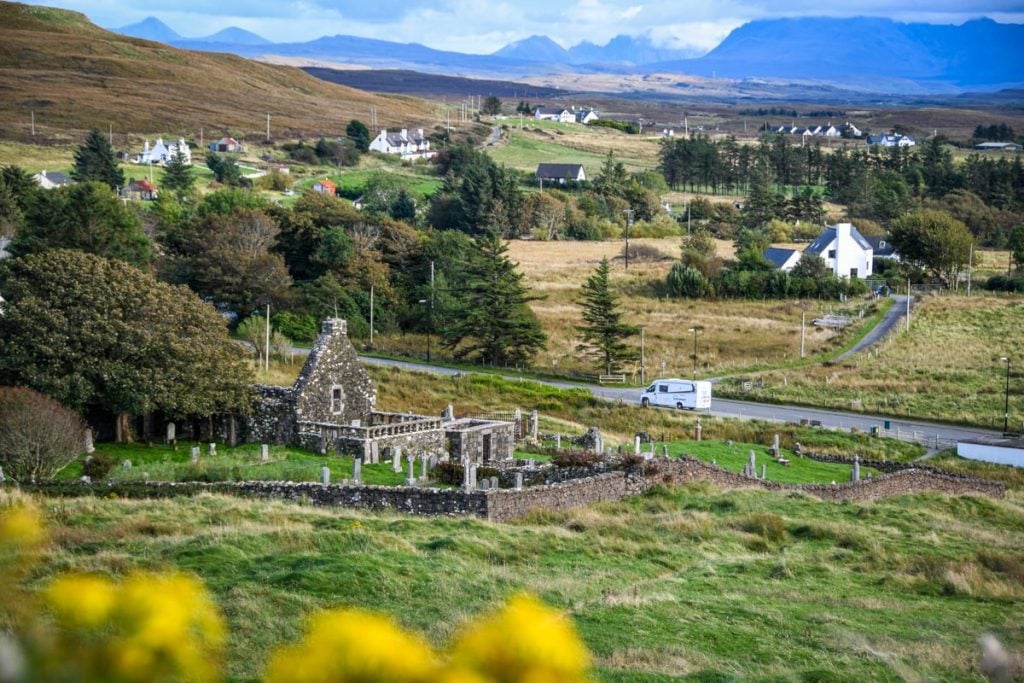
Best known for its stunning natural beauty and rich history, Scotland is a world-renowned travel destination, and yet still somehow a bit mysterious. An ideal destination for nature lovers, history buffs, fans of amazing architecture, whiskey enthusiasts and foodies alike, there are many, many reasons to visit Scotland.
While it often gets overshadowed by neighboring countries from a tourism standpoint, Scotland is one place you should have on your bucket list! Plan your trip around touring medieval castles, explore the famous Scottish Highlands, or stick to the cities and sample the local whiskey culture.
Still, there are certain times of year you’ll want to plan your trip around (and some you’ll want to avoid!) in order to have the best experience. Let’s get right into it and break down the best time to visit Scotland and what you can expect during your trip.
When is the best time to visit Scotland?
The best time to visit Scotland overall is during the spring and fall, just outside of peak tourism season (summer) and when the weather is most pleasant.
Both summer and winter have plenty to offer as well. So the best time to visit for you largely depends on what you want to see and do.
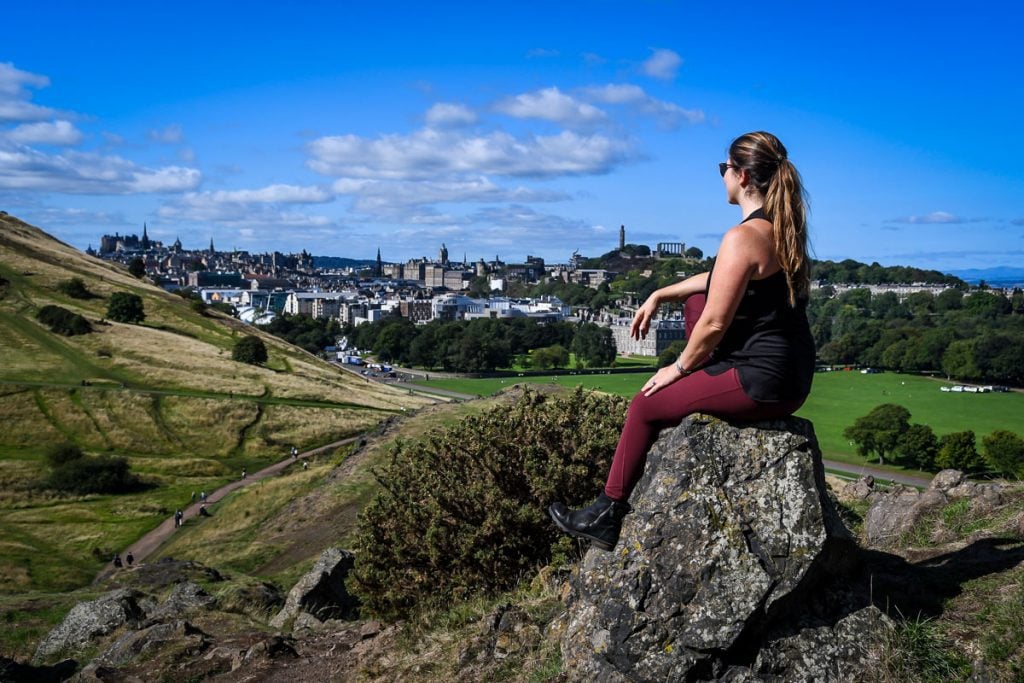
Answer these questions to get started:
- Will you be visiting the Highlands or spending all your time in the city?
- Are you easily bothered by crowds?
- Do you mind a little rain?
- Do you prefer to spend your time outdoors in nature or exploring a new city?
- What is your budget for visiting Scotland?
Thinking about your answers to these questions is going to help you start to determine when to visit Scotland.
Trying to decide whether to visit Ireland or Scotland? You’re not alone! We’ve done both, and we have a whole guide where we compare the two and give our personal recommendation on the Scotland vs. Ireland debate.
Article contents
Our experience, scotland geography overview, weather in scotland, summer in scotland, fall in scotland, winter in scotland, spring in scotland.
- What to pack for Scotland
Overall BEST time to visit Scotland
Want a quick recommendation? Jump down to see our personal advice for the best time to visit Scotland. Plus, we’ll share what times of year we’d avoid visiting!
- Our Recommendation…
Psst! If you have time to discover more of the country, don’t miss these epic places to visit in Scotland .
Want to save time and energy on planning?
We traveled in Scotland for about 2 weeks and were able to visit lots of the highlights of the country, including most of the top places to visit.
We took our 2-week travels and created the perfect Scotland road trip itinerary. We’ll send you our complete 2-week itinerary, filled with tips and advice. Just click below to get your 2-week Scotland road trip itinerary today!

We visited Scotland in September
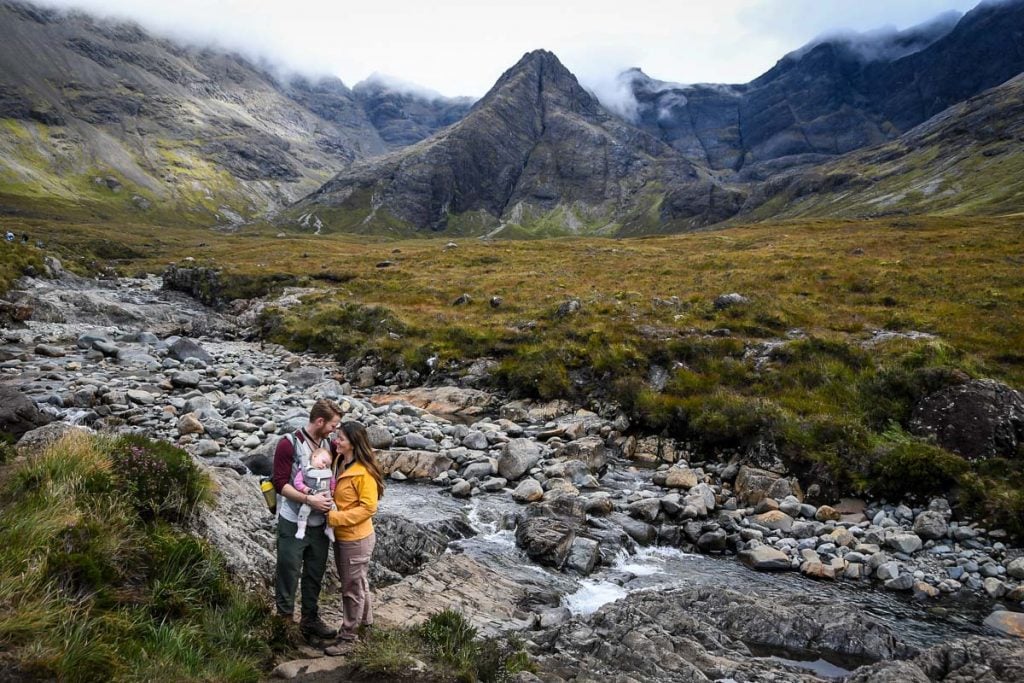
When: early to late September (2022)
Our experience:
- We had some rain, but not a ton . Overall, we had great weather (considering it’s Scotand, and you should expect some rain no matter when you travel).
- Before our trip, I read miserable stories of midges (especially in the Isle of Skye), but we got lucky and didn’t notice any of these pesky bugs, as it seems they tend to die out in September.
- We coincidentally happened to be in Edinburgh for Queen Elizabeth’s funeral procession, so that day was very busy, but otherwise, we didn’t feel things were too crowded.
- Being that it was the end of peak tourism season when we arrived (just after Labor Day weekend), things weren’t crazy busy, but seasonal places were still open. It was the best of both worlds!
- Even though most things didn’t seem crowded , we were turned away at more than one campground where we hadn’t made reservations. (Lots of Scots camping!) We’d recommend planning your campgrounds and booking them at least a few days in advance (or further ahead if you’re traveling in the summer).
Would we recommend visiting Scotland in September?
Yes! We had good weather overall, and didn’t have peak season (or Fringe Festival) crowds, making it a great month for a campervan trip.
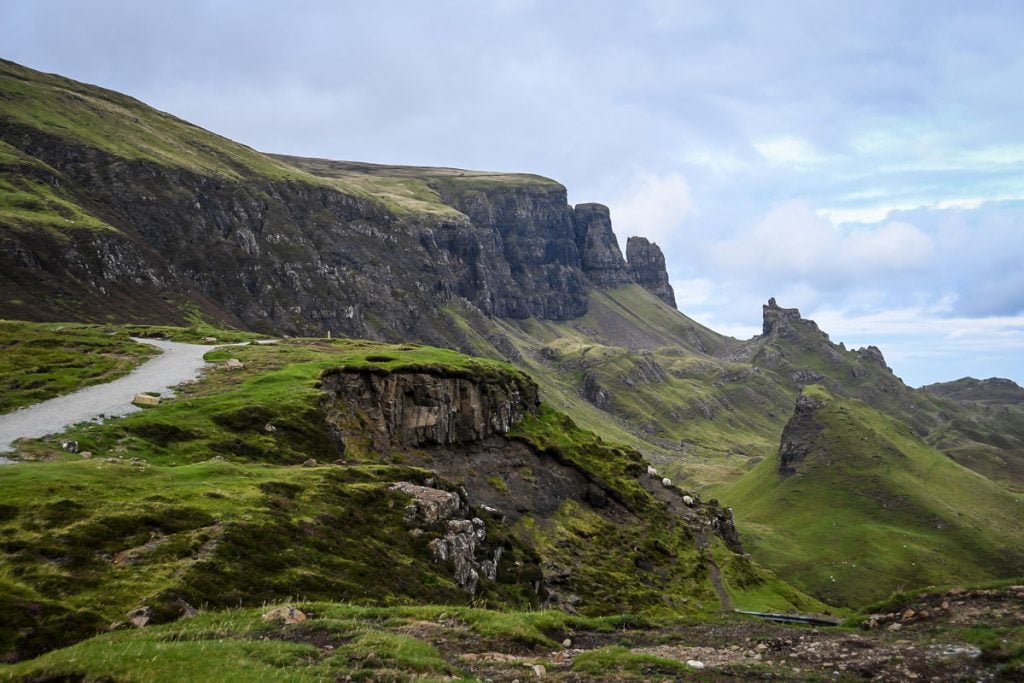
Scotland may be fairly small, but there’s no shortage of geographical diversity. The country spans across the northern one-third of Great Britain and includes nearly 800 islands, only 130 of which are inhabited!
Scotland can be divided into three distinct regions: the northern Highlands, the southern Uplands, and the central Lowlands.
The Highlands in the north are made up of rugged yet still lush mountainous topography that form some of the most picturesque landscapes in the world. This vast area, including the islands off the northern coast, encompasses about half of Scotland’s total land mass.
Sapphire blue lochs (lakes) and narrow inlets dot the landscape, adding stunning character to the rugged peaks, glacier-carved valleys, and tiny islands. The Scottish Highlands are truly wild; it’s one of the least densely populated areas in all of Europe!
The central Lowlands are home to both fertile farmland and almost all of Scotland’s larger cities. In fact, nearly 90% of the country’s population resides in the Lowlands. Both the capital city of Edinburgh and the largest city, Glasgow, are located here, along with several others.
The rugged southern Uplands form Scotland’s 110-mile-long border with England. This area is primarily rural and agricultural, defined by picture-perfect gently rolling green hills.
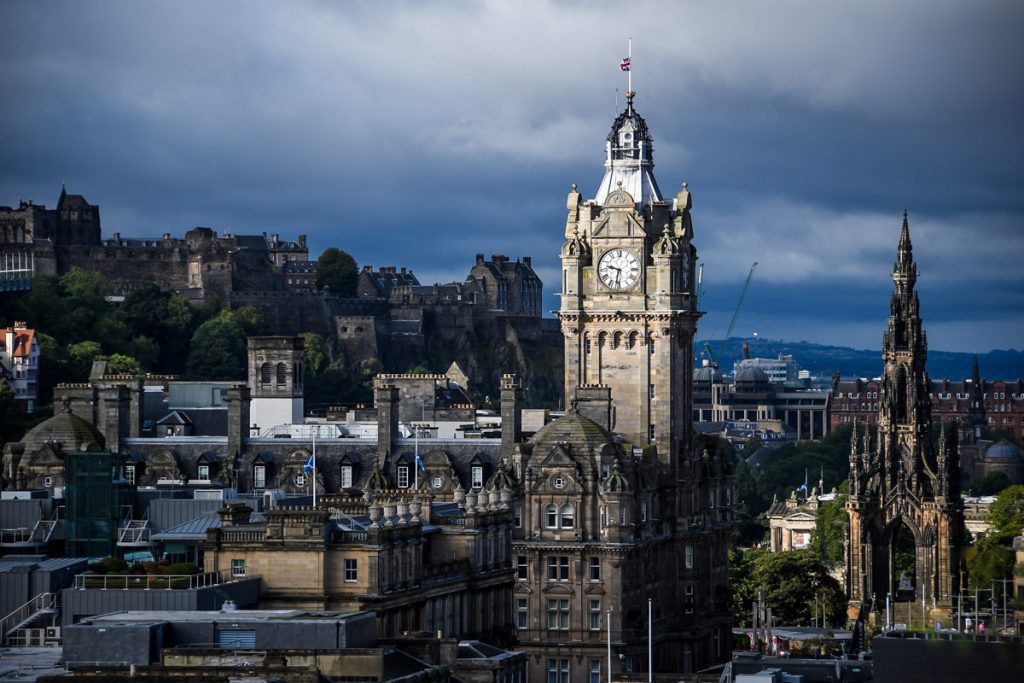
Scotland gets a bit of a bad rap when it comes to weather. While it does rain often (there’s a reason it’s so green!), the overall weather just might surprise you.
The weather in Scotland never really hits the extremes you’ll find in many other destinations (particularly in Europe). While you very well may experience all four seasons in the span of just a few hours (packing layers is key!), the heat is mild and the cold is usually bearable. Even in the height of summer, it rarely exceeds 80°F (27°C) in most Scotland cities.
Summer and winter in Scotland bring the most rainfall, while the spring and fall are surprisingly the driest seasons.
Something unique to consider when you’re deciding on the best time to visit Scotland is daylight hours. Due to Scotland’s far northern latitude, summer days have up to 18 hours of daylight, but in the winter, that number drops to just seven or eight.
Below you’ll find a break down of the average temps and rainfall in Scotland by month:
- Avg. Daily Temp: 44°F / 7°C
- Typical Rainfall: 5.8 inches
- Daylight: 8 hours
- Avg. Daily Temp: 45°F / 7°C
- Typical Rainfall: 4.1 inches
- Daylight: 10 hours
- Avg. Daily Temp: 49°F / 9°C
- Typical Rainfall: 4.4 inches
- Daylight: 12 hours
- Avg. Daily Temp: 55°F / 13°C
- Typical Rainfall: 2.5 inches
- Daylight: 14 hours
- Avg. Daily Temp: 61°F / 16°C
- Typical Rainfall: 2.7 inches
- Daylight: 16 hours
- Avg. Daily Temp: 65°F / 18°C
- Typical Rainfall: 2.6 inches
- Daylight: 18 hours
- Avg. Daily Temp: 68°F / 20°C
- Typical Rainfall: 2.9 inches
- Daylight: 17 hours
- Avg. Daily Temp: 67°F / 19°C
- Typical Rainfall: 3.6 inches
- Daylight: 15 hours
- Avg. Daily Temp: 62°F / 17°C
- Daylight: 13 hours
- Typical Rainfall: 5.6 inches
- Typical Rainfall: 5.0 inches
- Avg. Daily Temp: 44°F / 7°C
- Typical Rainfall: 5.3 inches
- Daylight: 7 hours
Psst! Plan your trip with our round up of all the best things to do in Edinburgh , including the quintessential activities and some off the beaten path experiences you won’t want to miss!
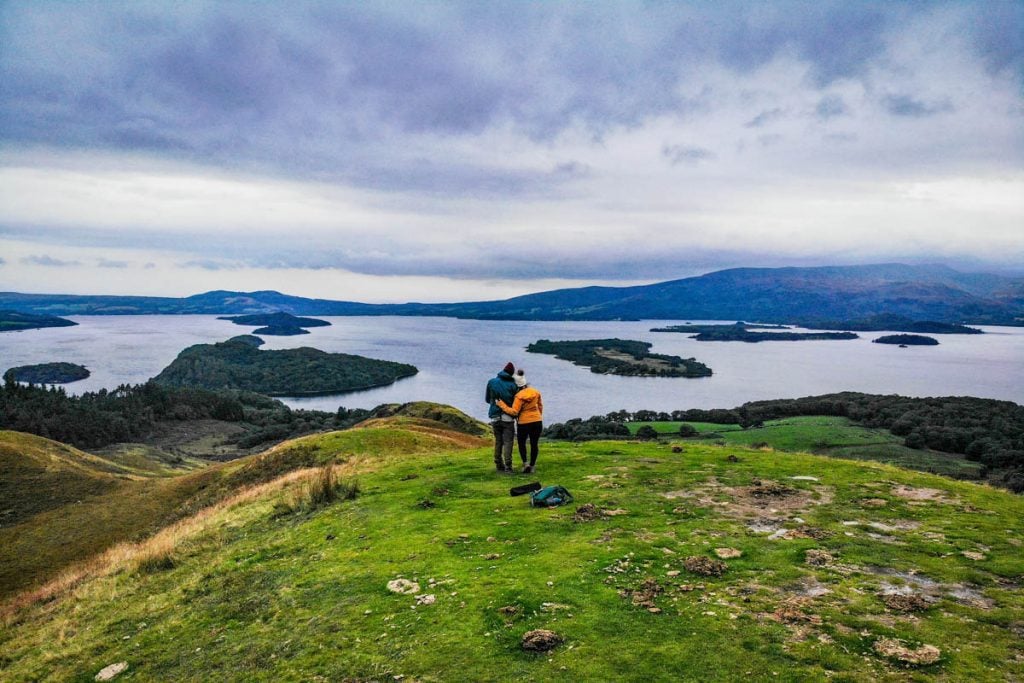
Summer is definitely the high season in Scotland. Warmer temperatures bring lots of people out, both visitors and locals alike, hoping to take advantage of the warmer weather, longer days, and many fun things to do.
Temperatures average in the upper 60s and low 70s (19-23°C) during the summer months throughout most of the country, with the exception of the Highlands and other high-elevation areas.
The sun also rises as early as 3:00 or 4:00 a.m. (remember, Scotland is waaaaay up there!) in the summer and often doesn’t set until 11:00 p.m. Keep in mind these long, warmer days also coincide with one of the country’s wettest seasons — it may be warm and sunny, but also pouring rain!
In addition to warm weather, many consider summer the best time to visit Scotland because of all the festivals and events. In August, Edinburgh plays host to the Fringe Festival , the largest arts festival in the world!
Best places to visit during summer in Scotland
- Edinburgh for festivals, buzzy nightlife, and tons of Medieval history
- Glasgow makes a great summertime basecamp for experiencing a little of everything Scotland has to offer, with a location close to both the coast and the Highlands
- Head to Outer Hebrides for the beaches
- Chase epic outdoor adventures in Isle of Skye and the Highlands
- St. Andrews to play a round of golf at one of the most iconic courses in the world
- Stirling offers a great mix of the Lowlands and Highlands culture
Best things to do during summer in Scotland
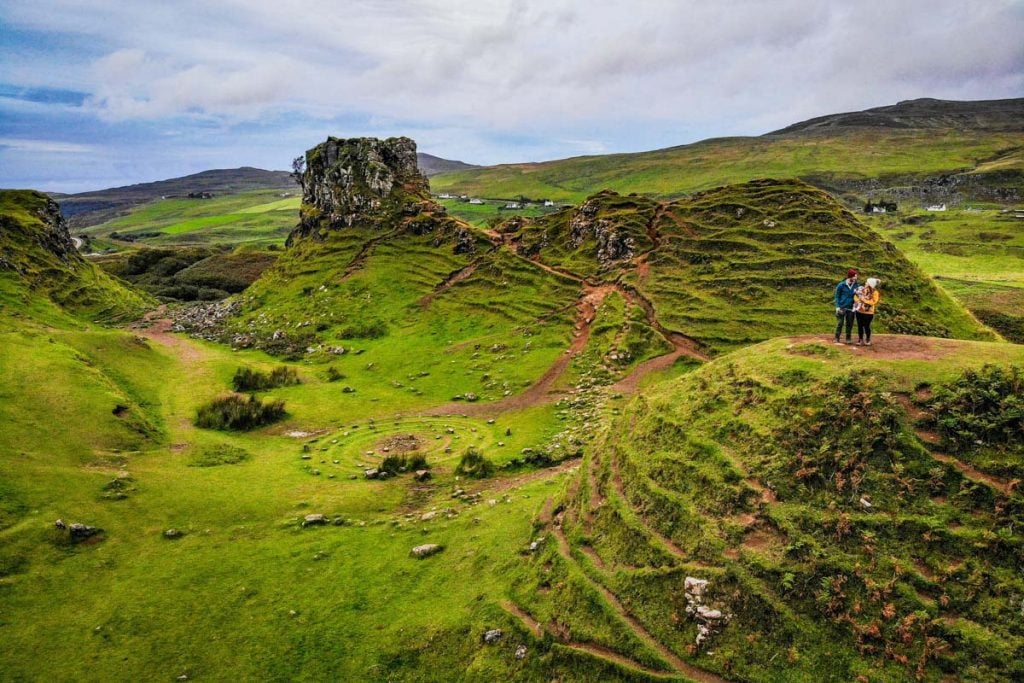
- Check out The Fringe Festival, held over multiple weeks in August
- Get a unique perspective of Scotland’s rugged coast with a guided sea kayaking tour (fun fact: Scotland is home to 10% of Europe’s entire coastline!)
- Scotland is the birthplace of golf, so experience the sport in its true element by playing a round of golf at one of the country’s 550+ courses!
- Explore the many stunning lochs. Who knows, maybe you’ll be lucky enough to spot the real-life Nessie!
- Catch some very traditional (and very unique!) sports at the famous Highland Games. Events are held throughout the country from May through August.
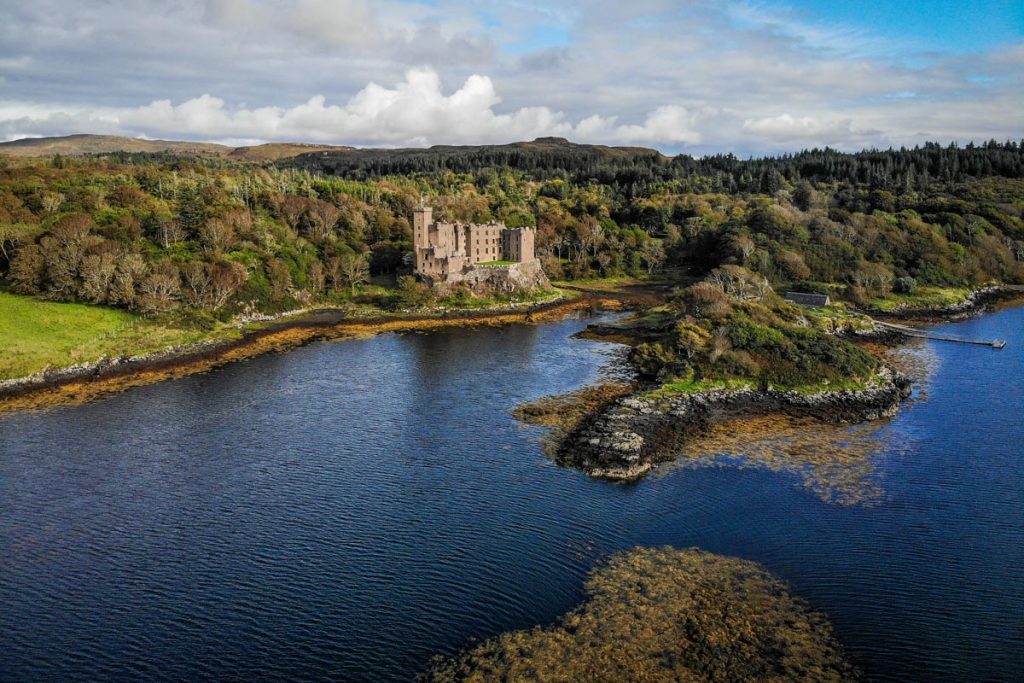
Fall in Scotland brings a drop in both temperatures and the number of tourists. There are still plenty of activities to do and places to explore before the last of the warm weather says goodbye for winter, so fall is one of the best times to visit Scotland.
You’ll see temperatures around the low 60s (16-18°C) throughout most of fall, so it’s a perfect time to get outside and enjoy this country’s spectacular nature.
In late October, the days start to become noticeably shorter, with 10-13 hours of daily sunlight. While those are still nice long days, it gets a little easier to keep a normal sleep schedule without losing out on any exploration time.
As the temperatures drop, the fall foliage begins to put on an impressive show, creating a photographers’ paradise — especially in the Highlands. The grass on the Moors gradually begins to fade to red and the trees come alive with shades of yellow, red, and orange.
Scotland sees quite a bit of rain (and wind!) during the fall, particularly in October and November, but that also means the many amazing waterfalls are at their peak flow. And cooler temperatures also mercifully drive away the infamous midges and other biting insects that tend to swarm during the warmer months.
Important Note: One thing to be aware of when visiting Scotland in the fall is that many popular tourist attractions shut down for the winter season in early November.
Best places to visit during fall in Scotland
- The Highlands for unforgettable leaf-peeping in the most dramatic setting
- Edinburgh’s many museums and historical sites have notably fewer crowds in the fall
- Eat your way through Glasgow, one of the best cities for traditional Scottish comfort meals
- Glencoe National Nature Reserve shows off some of the most stunning Scottish nature
- Explore Aberdeenshire for the countless castles and history sans crowds
Best things to do during fall in Scotland
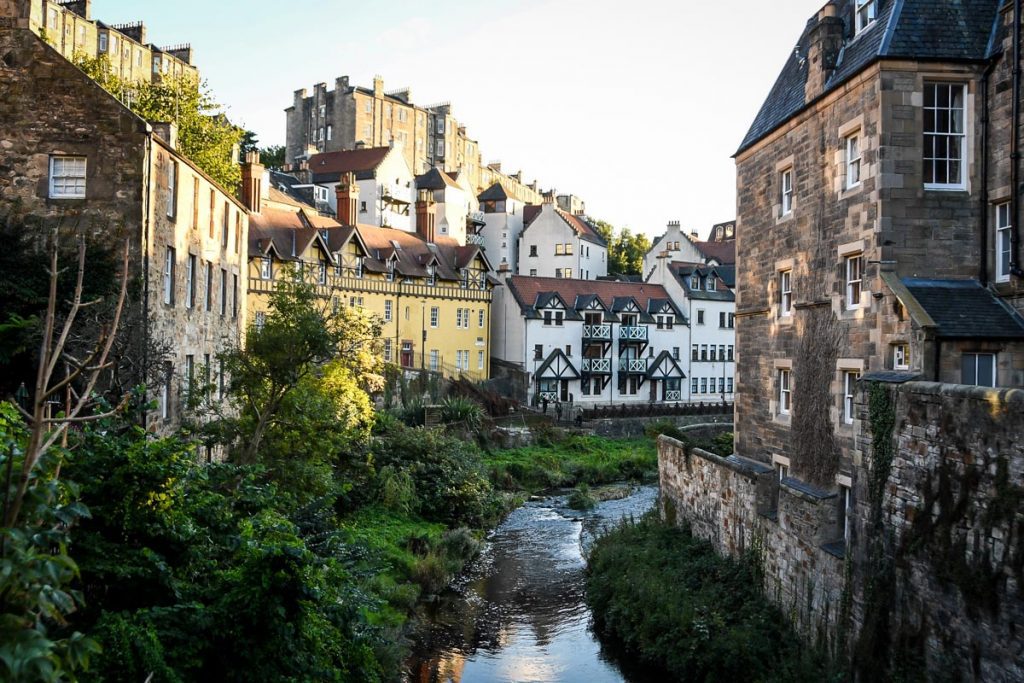
- Check out one of several literary festivals that take place around the country. One of the biggest, the Scottish International Storytelling Festival, takes place in October, but there are many other niche festivals as well.
- Hike to some waterfalls and enjoy the fall foliage. Some of the best and most accessible include Black Linn Falls, Falls of Foyers near famous Loch Ness, and Loup of Fintry.
- Try out kitesurfing on the east coast
- Explore Scotland’s more than 1,500 castles
- Create your own Harry Potter-themed adventure, exploring several of the locations that inspired the books and movies.
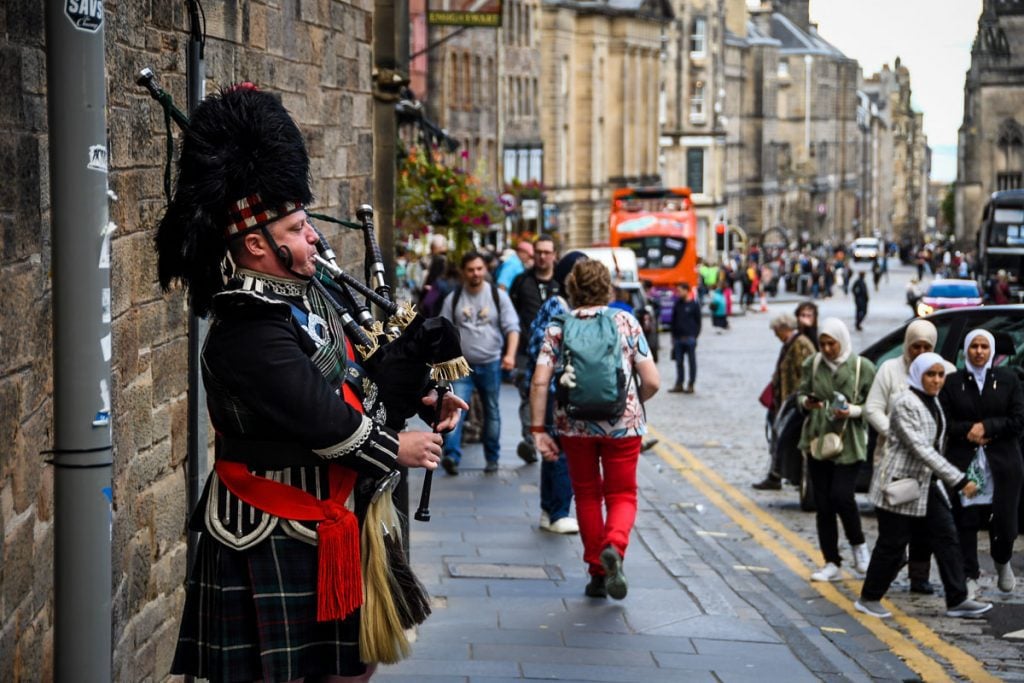
Winter in Scotland is the low season for tourism, but don’t let that dissuade you from visiting. If anything, it could be a reason to visit. You’ll find less-crowded attractions, cheaper accommodations, unique winter wonderland experiences, and surprisingly mild weather.
Temperatures are definitely a little colder, but not unbearable by any means—usually between 35-45ºF (1-7ºC) in the cities and lower elevation areas. Scotland does experience a rainy winter, but again, the temperatures are mild enough that it’s manageable. It’s not freezing rain like you’re probably imagining (usually, anyway!).
Daylight hours are short in Scotland during winter, with just 7-8 hours of daily sunlight. While this can make it feel like you’re racing against time to cram everything in, the shorter days offer more time to enjoy the night sky, plus potentially even catch a glimpse of the Northern Lights.
Unique winter experiences make it one of the best times to visit Scotland for those who enjoy getting off the beaten path. There are opportunities for skiing and snowboarding, the traditional holiday markets are not to be missed, and in our opinion, winter is the best, liveliest time to explore Scotland’s cities.
Best places to visit during winter in Scotland
- Edinburgh, for winter festivals and many (free!) museums
- Scotland’s largest city, Glasgow, for family-friendly attractions, the impressive botanical garden, and the country’s best shopping
- Cairngorms National Park, home to some of the best skiing and snowboarding in Scotland
- Road-trip to Highland Perthshire (one of the most underrated areas of Scotland!) for postcard-worthy scenery, several easy hikes, and charming Victorian towns
- Galloway Forest Park for top-notch stargazing and hopefully, the Northern Lights!
Best things to do during winter in Scotland
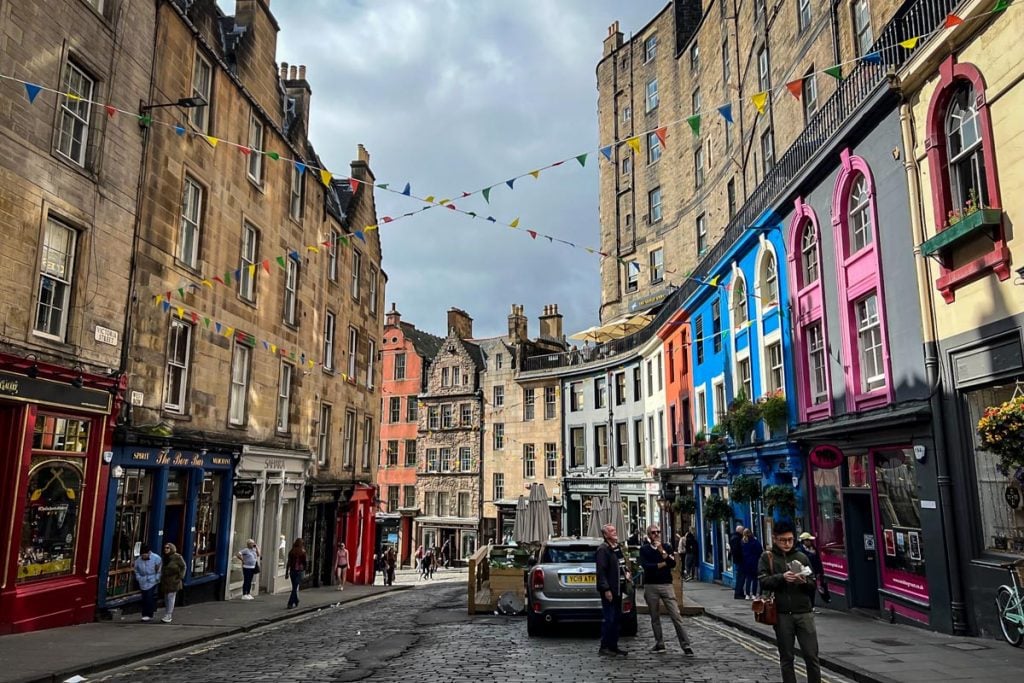
- Experience the magic of traditional European Christmas markets and winter festivals. Glasgow and Edinburgh both host amazing ones, and Edinburgh’s is one of the largest in the UK!
- Celebrate St. Andrews Day with the locals. This annual holiday honors the Patron Saint of Scotland with mega celebrations of all things Scottish.
- Brave the cold late at night to stargaze and try to spot the Northern Lights when the sky is clear.
- Keep yourself warm by sampling some of the finest Scotch (Scottish whiskey) at a distillery
- Hit the slopes at Cairngorm National Park for some skiing or snowboarding
- Make a stop to visit and interact with the Cairngorm Reindeer Herd, a free-roaming herd of about 150 animals
- When you need rainy-day activities, enjoy the museums (many of which are totally free!) in the major cities without any crowds
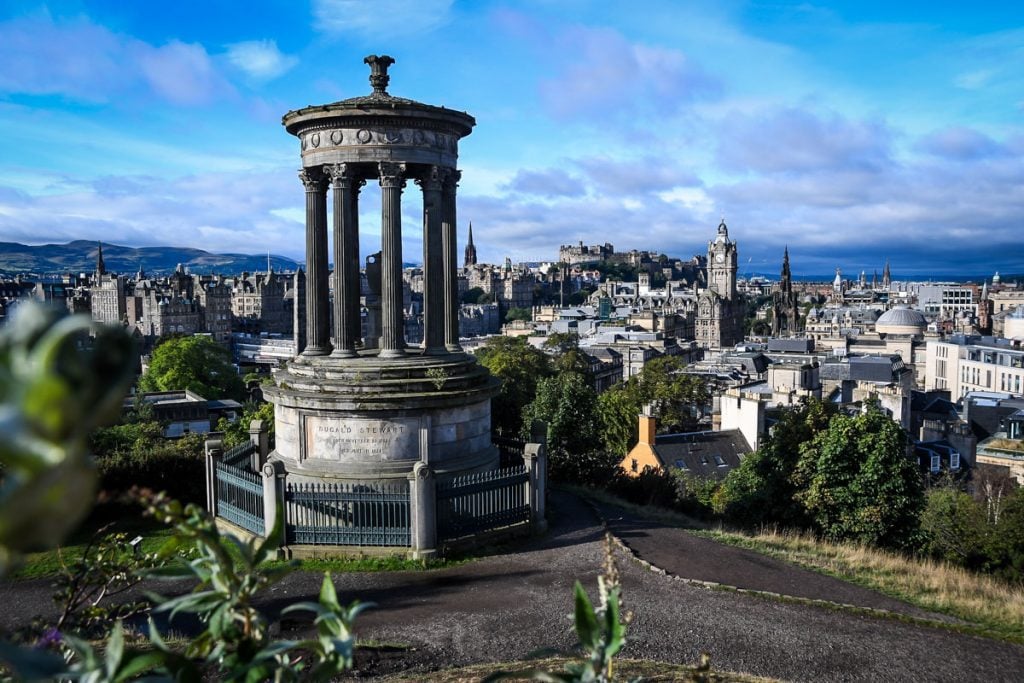
Spring is somewhat similar to fall in terms of weather and crowds, making it what some consider the best time to visit Scotland. As winter fades and the warmer weather of spring emerges, the snow begins to melt, animals poke their heads out, and the countryside greens up and comes alive again.
The weather changes rapidly over the course of spring in Scotland. In March, temperatures generally hover in the 40s and low 50s (4-15ºC), but by May, upper 70s (23+ºC) aren’t uncommon!
Although rare, surprise spring snow storms do sneak in occasionally, so pack and dress accordingly, prepared for a bit of fresh powder. Interestingly, and unlike many other destinations, spring is one of Scotland’s driest seasons.
The warmer temperatures and smaller crowds make spring a great time to explore while also saving on accommodations. Many seasonal businesses that close for winter reopen in late March or early April, which coincides perfectly with the days starting to get longer.
Spring is also fantastic for road-tripping through Scotland . Don’t miss the iconic North Coast 500, a 516-mile drive that takes you through stunning landscapes and charming, quaint European villages. Everywhere you go, the hillsides will likely be blanketed in colorful daffodils and cherry blossoms!
April and May also bring several whiskey festivals to regions across the country. In fact, May is National Whisky Month in Scotland (whisky is a BIG deal here — Scots refer to it as the “water of life”).
Kind of like “when in Rome…” When in Scotland, drink as the Scots do!
Best places to visit during spring in Scotland
- The city of Inverness, where the North Coast 500 begins
- Enjoy some unreal wildlife in the Shetland Isles
- Glasgow and Edinburgh have notably smaller crowds than during the peak months
- Experience the wonder of the cherry blossom bloom in Edinburgh
- The north coast Scottish isles, where you can experience dolphin- and whale-watching
Best things to do during spring in Scotland
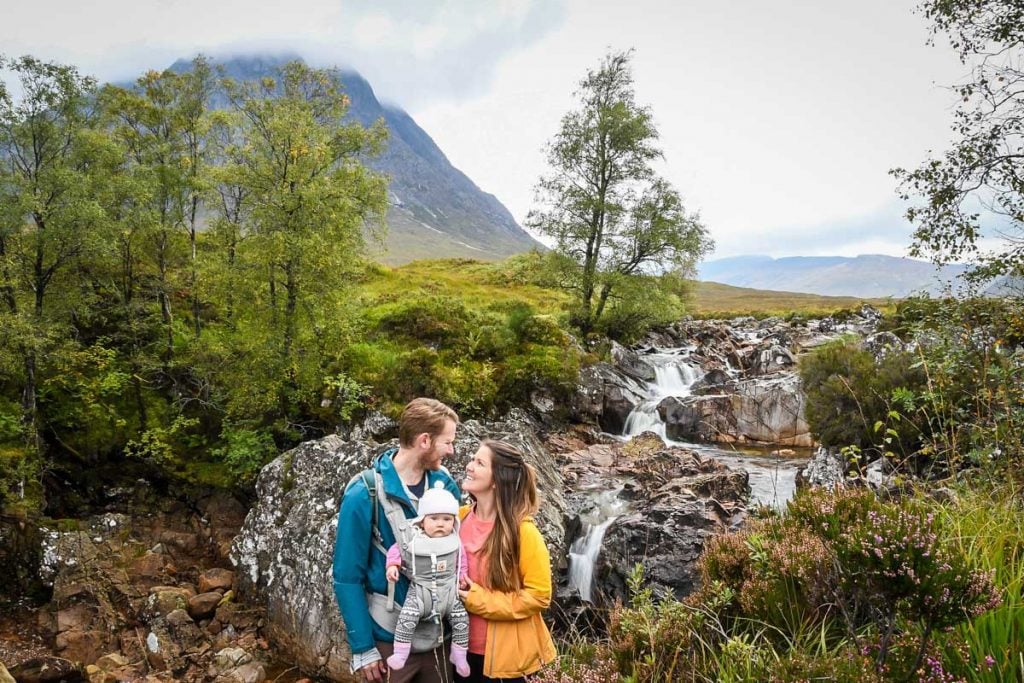
- Catch the cherry blossom bloom in Edinburgh and wildflower season across the entire country by simply walking around or driving without a destination!
- Explore the country’s many castles and ruins
- Visit the botanical gardens in either Glasgow or Edinburgh to experience the gorgeous spring bloom
- Try out (or watch!) kitesurfing on the eastern coast
- Take a hike! Summit Ben Nevis in the Highlands, the highest mountain in all of the UK, or explore some shorter waterfall trails.
- Go island-hopping near Skye, the Outer Hebrides, or Shetland
Best time to visit Scotland in our opinion…

In our opinion, the best time to visit Scotland is during the spring or fall, with a few exceptions.
Spring and fall, Scotland’s “shoulder seasons,” both have moderate temperatures and fewer crowds. Accommodations are slightly cheaper compared to summer and the swarms of midges are much less prevalent.
In terms of weather, Scotland never gets either super hot or super cold (with the exception of the Highlands, of course), so most activities are available year-round. Spring and fall offer the opportunity for a more affordable trip with fewer crowds, but with access to many of the same experiences.
Summer may be the best time to visit Scotland if you’re after the warmest months or want to experience one of the many outdoor festivals like The Fringe Festival in Edinburgh. However, we’d avoid visiting Scotland during the month of August if you are not planning to attend the Fringe Festival as accommodation will be booked well in advance and prices sky-rocket!
Lastly, there are plenty of compelling reasons to visit Scotland in the winter. Clear skies provide jaw-droppingly beautiful views of the night sky and perhaps even a glimpse of the Northern Lights, and there’s truly nothing like European Christmas markets!
Overall, we recommend visiting in May or September for your trip to Scotland, so you’ll have the best chance for warmer, drier weather and fewer crowds. But keep in mind that there is truly plenty to enjoy year-round in this stunning, welcoming country.
What to pack for your trip to Scotland
We know it can be overwhelming packing for a trip to a new destination. That’s why we spent hours creating this super helpful PDF just for you.
In this free Scotland packing list PDF download , we’ve provided packing check lists for everything from clothing and toiletries to electronics and extra gear you may consider packing if you plan to do some campervan travels.
Plus, we’re sharing tons of packing hacks and tips for traveling in Scotland that you won’t find anywhere else!
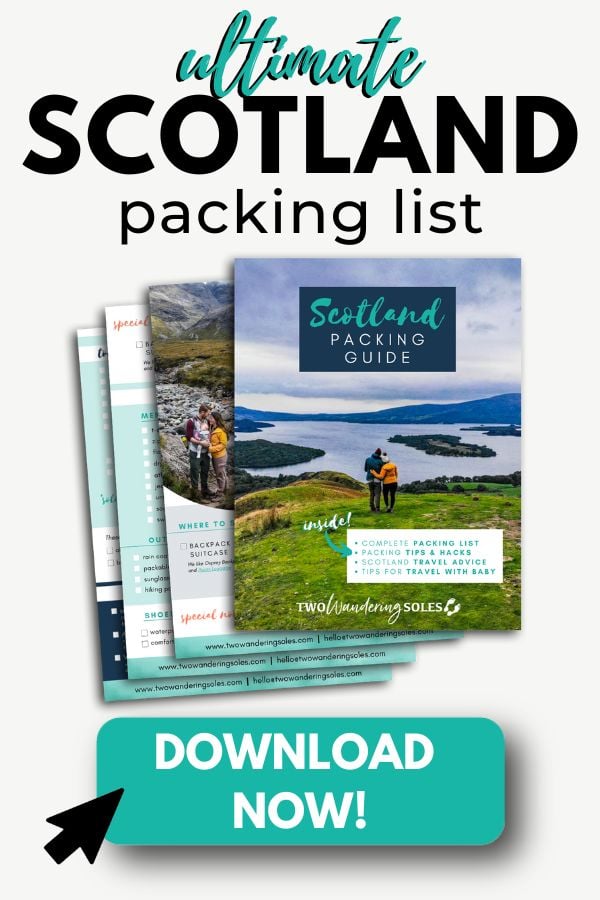
Are you planning a trip to Scotland?
We have lots of resources on travel in Scotland and destinations throughout the country. Check out our Scotland Travel Homepage for everything you need to know, or read some of our favorite articles below.
- Best Places to Visit in Scotland
- Best Campervan Hire in Scotland
- Insanely Fun Things to Do in Edinburgh
- Scotland Camping: Essential Tips + Best Campsites
Save this article on Pinterest for later!
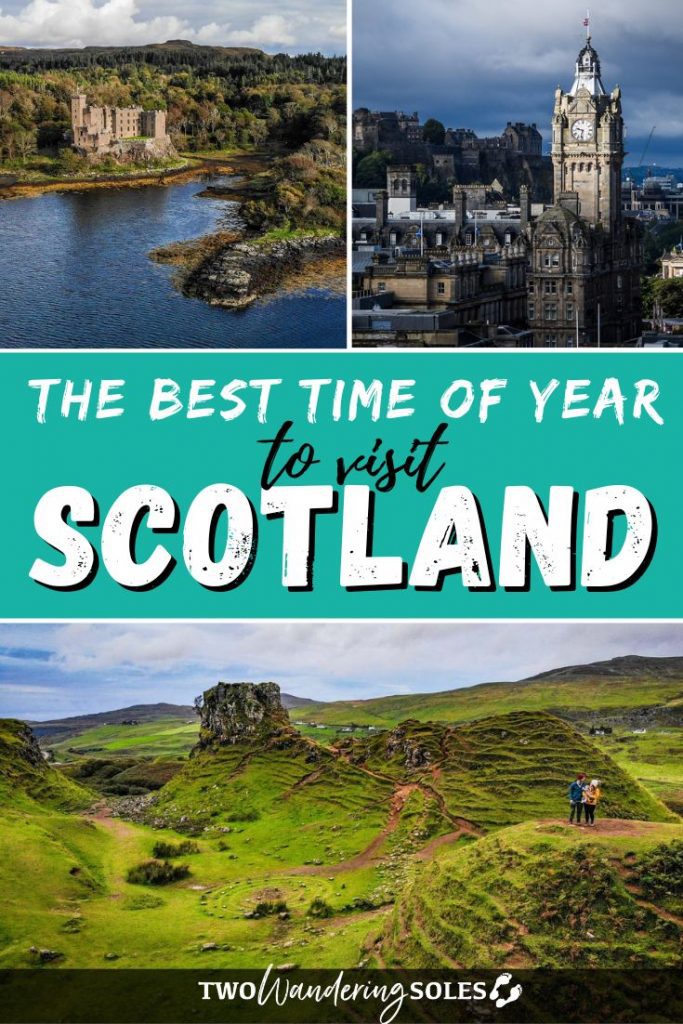
We want to hear from you!
Have you ever been to Scotland before? During what season did you visit and what was your experience like? Comment below and let us know!
Comments (2) on “ Best Time to Visit Scotland: When to Go & When to Avoid! ”
Well, the summer weather in 2023 isn’t quite so peachy as previous years (old fogeys like me might prefer the cooler, damper climate!) But you can still have a brilliant time exploring. We are particularly fond of Crinan which is a wee gem of a place. That gives us a good reason to have something to eat at the George Hotel, Inveraray on our way home.
We also love going to Dumfries House in Cumnock; we’ve taken quite a few visitors there now. I think the King (when still the Prince of Wales) was inspired to make a great resource for an area of Scotland which might not otherwise have attracted tourists. The house is amazing, the gardens spacious and well tended (it’s worth paying to go into the walled garden too) and we enjoy watching the arboretum starting to grow.
South west Scotland (well, I’m from Castle Douglas!) – is quite a different landscape to the Highlands. Also recommended as a great place to visit.
Can you tell I’m just itching to get exploring again!
Absolutely fantastic resource that you have created. We were there last 2 weeks of Aug, first two weeks of Sept this year. People said we had better than normal weather. We did a circle tour in a rented car (Arnold Clark) and used Airbnb. We used Tesco SIM cards which are cheaper than Airalo. We did last 2 weeks in Aug because the kids are back in school then. We have already booked the same dates for next year as we want to do all of the Outer Hebrides (we only did Lewis this year.) and more of the coast between Inverness and Aberdeen. Keep up the Great work! Thanks
Leave a Reply Cancel reply
Your email address will not be published. Required fields are marked *
Save my name, email, and website in this browser for the next time I comment.
National Geographic content straight to your inbox—sign up for our popular newsletters here
- DESTINATION GUIDE
The essential guide to visiting Scotland
Here’s everything you need to know about this land of lochs—when to go, where to stay, what to do, and how to get around.

Why you should visit Scotland
Monumental mountains and misty glens. Castles with hidden stories. A dram of whisky straight from the source.
Best time to visit Scotland
Spring: Many attractions are open without summer crowds. Golf courses open in April; the season officially starts in May.
Summer: This is the ideal time for hiking and biking, although accommodations along the most popular routes—such as the West Highland Way —fill up well in advance. There are plenty of events, including the Edinburgh Festival and Highland Games .
Autumn: Changing leaves create arresting scenes in forests—it’s a great time to visit Perthshire , known as “Big Tree Country.” The Edradour and Glenturret distilleries are well placed for combining a walk with a whisky sampling.
Winter: The Edinburgh Christmas Market kicks off in November, and Scots prepare to celebrate Hogmanay (New Year’s Eve). On January 25, pubs honor Burns Night —the birthday of national poet Robert Burns —with a dinner of haggis , neeps (turnips), and tatties (mashed potatoes).
Lay of the land
Cities: Well-heeled capital Edinburgh hosts the world’s largest performing arts festival . The medieval Old Town looms over Princes Street gardens and the New Town with art galleries and chic bars. Glasgow is boisterous and friendly, with a lively music scene. Craggy Stirling , topped by the eponymous castle, was the site of several historic battles. On the east coast, Dundee and Aberdeen pack museums and maritime history into their walkable downtowns.
Highlands: Hikers flock to the heather-bound moors and mountains of Cairngorms National Park , overlapping the Speyside whisky-producing region. The landscapes surrounding Glenfinnan and Glencoe have featured in films.
Hebrides: The Isle of Skye is famed for its otherworldly topography. Flawless beaches await on Lewis and Harris . On Mull , stop by the colorful coastal town of Tobermory or scale the rugged slopes of Ben More.
Northern Isles: Neolithic sites, including Skara Brae, are scattered across the Orkney Islands . View Viking sites and the eponymous ponies on the Shetland Islands .
Southern Uplands: Stately homes and castles grace the Scottish Borders. Dumfries & Galloway is home to the Galloway and Southern Ayrshire UNESCO Biosphere and the majestic Sweetheart Abbey .
North East: Seek out royal connections at Glamis Castle in Angus, or Balmoral Castle in Aberdeenshire. Photogenic Perthshire is home to the prestigious Gleneagles hotel and golf course.
Central Belt: Relive the greatest victories of Robert the Bruce and William Wallace at Bannockburn and the National Wallace Monument , respectively. The John Muir Way spans 134 miles of lochs and woodlands.

Getting around Scotland
By plane: Daily flights operate from Glasgow to several Hebridean islands. Flights to Sumburgh (Shetland) and Kirkwall (Orkney) depart from Edinburgh, Glasgow, and Aberdeen.
By bus: National Express and Citylink operate buses between the major cities. Buses are limited in the Highlands and Islands.
By train: ScotRail runs most services in Scotland, mostly along the Central Belt. This reduces to a few main lines in the Highlands.
By car: Driving in Scotland is on the left and requires an international driving permit. Road types include motorways (M), A-roads (A), and B-roads (B). Scotland’s main roads include the A1 from London to Edinburgh; the A74(M)/M74 from Gretna to Glasgow; and the M9/A9, stretching from just outside Edinburgh to Thurso on the north coast.
By boat: Caledonian MacBrayne (CalMac) ferries sail to 21 Hebridean islands; Northlink runs car ferries to Orkney and Shetland. Book well in advance.
Know before you go
Scottish languages: Scots Gaelic (pronounced “gaa-lik”) is still spoken by around 60,000 people, mostly in the Highlands and Islands. English, however, has been the main language spoken in Scotland since the 18th century. Though many believe it to be a dialect, Scots (descended from Northern English) is a distinct language , spoken by 1.5 million people.
Hours: Even in cities, restaurants can keep restrictive hours, with some kitchens closing as early as 8 p.m. On Sundays, businesses often open at 1 p.m. and may close by 4 p.m.
LGBTQ+: Scotland legalized same-sex marriage in 2014. Glasgow hosts Scotland’s largest Pride festival, as well as the Scottish Queer International Film Festival (SQIFF) in autumn.
How to visit Scotland sustainably
Outdoors: Read the Scottish Outdoor Access Code before setting out. Avoid deer stalking areas between July and February. Refrain from stone stacking, which can cause erosion .
Dining: Farm-to-table—or, indeed, sea-to-table—is easy to find in this nation of farmers and fishermen. It’s increasingly common for restaurants to display ingredient provenance on their menu.
Shopping: Seek out independent farm shops and sustainable distilleries . Support Scottish artisans at rural markets and festivals, such as the Pittenweem Arts Festival . Check labels to be sure the products you’re eyeing were made in country.
Accommodation and attractions: The Green Tourism certification scheme, which now operates in 20 countries, was founded in Scotland. It assesses 70 criteria, such as ethical production, carbon, and waste. Certified members—including accommodations, attractions, and tours—display a Green Tourism plaque.
What to read
Scotland: A Concise History , by Fitzroy Maclean (Fifth Edition). The former soldier and politician brings bloody battles and national heroes to life. In the fifth edition, journalist Magnus Linklater adds chapters on Brexit and the 2014 independence referendum.
Rival Queens , by Kate Williams. The historian charts the alliance between Mary Queen of Scots and Elizabeth I of England, which ends in devastating betrayal.
Rob Roy , by Sir Walter Scott. The celebrated writer’s classic work takes place during the Jacobite Rebellion of 1715.
Raw Spirit: In Search of the Perfect Dram , by Iain Banks. A humorous travelogue of Scotland’s distilleries, from the iconic to the obscure.
( For more tips on what to do in Scotland, see our Explorer’s Guide .)
Related Topics
- CITY GUIDES
- CULTURAL TOURISM
- PEOPLE AND CULTURE
You May Also Like

The essential guide to visiting Ireland

10 whimsical ways to experience Scotland
Limited time offer.
Get a FREE tote featuring 1 of 7 ICONIC PLACES OF THE WORLD

10 best things to do in Maine

Visiting Ireland? Here’s what the locals love

The essential guide to visiting Alaska

Visiting Maine: Here’s what the locals love

The essential guide to visiting Texas
- History & Culture
- Photography
- Environment
- Paid Content
History & Culture
- Women's History Month
- Mind, Body, Wonder
- Terms of Use
- Privacy Policy
- Your US State Privacy Rights
- Children's Online Privacy Policy
- Interest-Based Ads
- About Nielsen Measurement
- Do Not Sell or Share My Personal Information
- Nat Geo Home
- Attend a Live Event
- Book a Trip
- Inspire Your Kids
- Shop Nat Geo
- Visit the D.C. Museum
- Learn About Our Impact
- Support Our Mission
- Advertise With Us
- Customer Service
- Renew Subscription
- Manage Your Subscription
- Work at Nat Geo
- Sign Up for Our Newsletters
- Contribute to Protect the Planet
Copyright © 1996-2015 National Geographic Society Copyright © 2015-2024 National Geographic Partners, LLC. All rights reserved
- Scotland Tours
- Scotland Travel Guide
- When to Visit Scotland
Scotland in February: Weather and Travel Tips
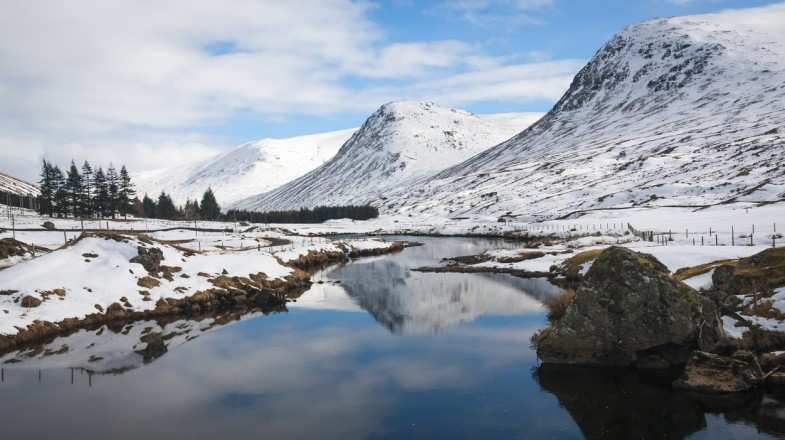
- 1.56K views
- ~ mins read
Anyone who has traveled to Scotland in February will tell you that the country is calm and quiet during this month. It is one of the winter months, so there are few visitors in the country, unlike in summer. February means cooler weather and shorter daylight hours in Scotland. But do not let these things put you off — for Scotland’s winter scenery is as stunning as ever! You will also find plenty of exciting things to do at this time, such as ice climbing in Kinlochleven or snowshoeing at Glencoe Mountain Resort.
Scotland Weather in February

You can expect the weather in Scotland in February to be very cold, with temperatures ranging from 1°C to 6°C. You can also expect several days of rain during this time of year, with the country’s west coast becoming particularly wet. There is also a high chance of snow at this time of year. The average number of days when Scotland receives snow in winter ranges from 15 to 20 days. However, the high peaks and mountains of the Scottish Highlands see around a hundred days of snowfall during this season.
Because of strong winds coming from the Atlantic and the North Sea, the Outer Hebrides and Sutherland are a haven for windsurfers this month.
Check out our seasonal overview to find out the best time to visit Scotland .
Weather in Scotland in February - Rainfall and Temperatures
Why visit scotland in february.

Despite freezing temperatures in Scotland, there are plenty of reasons why you should be heading to this beautiful country. We have listed a few of them below.
- Fewer crowds: Since February is a low season, you can avoid crowds and enjoy Scotland's awe-inspiring landscapes all to yourself! Explore its vast wilderness and take in its highlights like Edinburgh Castle and the National Museum of Scotland without having to stand in long queues.
- More opportunities to relax: In February, Scotland enjoys a quieter atmosphere, offering you the perfect opportunity to relax. Shorter daylight hours also force people to retire early. You will likely be done with outdoor activities as early as 4:00 PM during your trip to Scotland in the winter , which gives you more time to unwind.
- Luxurious hotels for cheap: Scotland is famous for its luxurious accommodation, including castle hotels that allow you to live like royalty. When you travel to Scotland this month, you can stay at these incredible accommodations at very low rates! Here are our Scotland budget tours .
- Stunning winter landscapes: Scotland's rugged landscapes and bustling cities look magical in winter as they are covered with snow. Similarly, the snow-covered peaks of the Highlands are also truly breathtaking. If you want to capture envy-inducing images for your Instagram feed, you should visit Scotland in February!
Where to Go and What to Do

Despite cold weather conditions, you are sure to have a wholesome experience if you plan your trip carefully. Long winter nights mean more time to see amazing constellations of stars and, if you are lucky, the Northern Lights! To see this stunning natural spectacle of lights, visit locations such as Cairngorms National Park and Galloway Forest Park. You can also see the Northern Lights from the Isle of Skye.
From skiing to snowboarding, you will get plenty of opportunities to indulge in snowsports in Scotland. The country is home to numerous ski centers, such as the Glenshee Ski Center in the Highlands and the Cairngorms National Park, where you can enjoy your favorite winter sports. It is also possible to ski indoors with real snow at the Snow Factor in Glasgow.
If outdoor adventures are not for you, you will find plenty of indoor attractions to visit in Scotland. Some of the best places to visit in Scotland during this month are the Kelvingrove Art Gallery and Museum in Glasgow and the National Museum of Scotland in Edinburgh.
Depending on how many days you wish to spend in Scotland , there are many other interesting things to do in the country during your trip in February. You can visit cozy pubs to warm up with a glass of whisky, attend indoor concerts or enjoy a romantic stay in one of its castle hotels on Valentine's Day. While the best time to head for Scotland is from May to October, visiting Scotland in February comes with many benefits. As mentioned above, there are many things to enjoy in the country at this time of the year, and you will have them all to yourself since there are fewer crowds of tourists.
For a hassle-free trip to Scotland, consider booking customized tours . Reach out to our local travel experts if you are interested in a personalized itinerary.
For more ideas, check out our tours to Scotland in February .
More information
Scotland in January Scotland in March Private tours in Scotland Group tours in Scotland
Related Articles
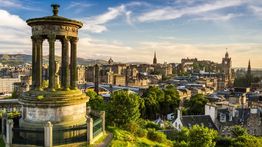
Best Time To Visit Scotland
Scotland is on most people’s travel bucket li... read more
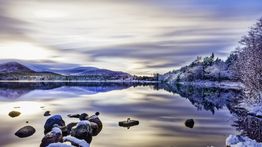
Scotland in January: Weather, Tips & Winter Sports
Despite being a cold month, you'd be surprise... read more
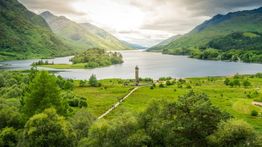
Scotland in March: Highlights and Travel Tips
Although March is a cold month in Scotland, i... read more

Scotland in April: Weather, Tips & Spring Festivals
Fair weather conditions and longer daylight h... read more
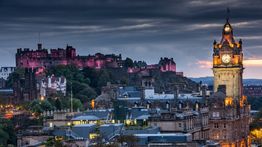
Scotland in May: Weather, Tips & More
Midges or not, Scotland in May is a fairy tal... read more
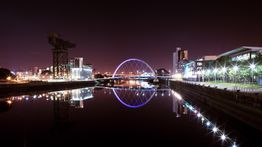
Scotland in June: Weather, Tips & More
A Scottish getaway is like starring in your o... read more
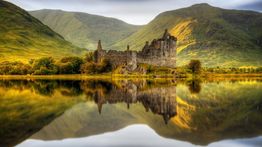
Scotland in July: High Season Travel Tips
Scotland in July has unpredictable weather co... read more
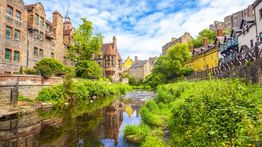
Scotland in August: Warm Weather and Fun Festivals
August has ideal conditions for a summer trip... read more
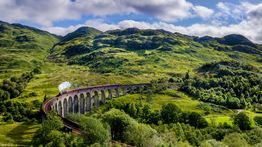
Scotland in September: An Autumn Aesthetic
Get ready for a fantastic Scottish vacation i... read more
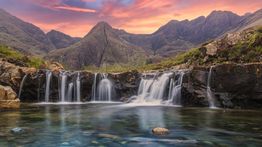
Scotland in October: Weather, Tips and More
Enjoy autumnal colors in the crisp, cool weat... read more
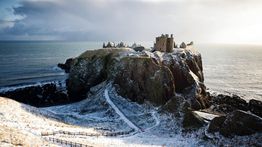
Scotland in November: Travel Tips for Scottish Winter
The colors of autumn give way to shorter and ... read more

Scotland in December: Cold Weather and Festivals
The atmosphere transforms into a magical play... read more

Summer in Scotland: Destination and Weather Tips
If you love exploring the great outdoors, enj... read more
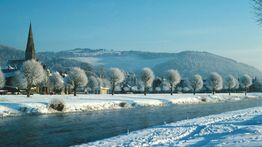
Winter in Scotland: Destination and Weather Advice
Whether you enjoy skiing, exploring snow-cove... read more
Related Categories
- How Long To Stay In Scotland
- Things To Do In Scotland
- When To Visit Scotland
- Where To Go In Scotland
- Previous Post
Popular Destinations
- Europe Tours
- Everest Base Camp Trek
- Italy Tours
- Spain Tours
- Argentina Tours
- Canada Tours
- Sri Lanka Tours
- Chile Tours
- Antarctica Tours

Weather & Climate
Scotland's Airports
Places to Visit
One Week in Scotland
Best Beaches
Scenic Road Trips
Top Castles to Visit
Glasgow Guide
Dundee Guide
Aberdeen Guide
Fort William Guide
Scottish Highlands
Amazing Islands
Best Time to Visit
The Best Time to Visit Scotland
:max_bytes(150000):strip_icc():format(webp)/FerneArfin-5b6f00c446e0fb0050324e74.jpg)
Peter Watson / Getty Images
The best times to visit Scotland are August to through mid January, the seasons of the top urban festivals, the blooming heather, the winter parties and the rugged great outdoors. July and August are the warmest months but they are also the months most plagued by tiny biting insects. So what is best for you has a lot to do with whether you're a city mouse or a country mouse and if you love indoor or outdoor pursuits.
Scottish Weather
Scottish weather is unpredictable, varying from warm and damp through crisp and sunny to blustery and very cold — sometimes all on the same day. When it comes to daylight hours, it's a land of extremes. Winter days can have as little as seven hours of daylight in mid-December, while in midsummer Scotland experiences the longest days in Britain. In Glasgow , Scotland also has the second rainiest city in the UK.
But you can read a book in daylight after 10 p.m. on the shores of Loch Lomond in June, enjoy color soaked sunsets as the long rays of the Northern sun sink below the clouds in autumn and get sunburned skiing in the Cairngorms in January.
Autumn is Best for the Highlands
Scotland's Western Highlands are covered in heather that blooms in shades of purple, lavender and pink at least twice a year and sometimes three times. The best colors appear in October. In the autumn chill, most of the heather turns mottled shades of rich orange, rust and amber punctuated with patches of green. You are much more likely to enjoy crisp, sunny weather at this time of year. The angle of the sun in Scotland's northern latitudes gives light a special golden quality making for truly beautiful views. Visit The Trossachs and Loch Lomond National Park , within easy reach of Glasgow, for the autumn heather. And anywhere in the counties of Argyll & Bute or the Scottish Borders is worth touring for autumn color. It's also a great time of year for a cruise on a Scottish loch, particularly Loch Lomond or Loch Katrine. Or a climb up Arthur's Seat , Edinburgh's extinct volcano.
Peak Season in Scotland
The summer months, when there is the best chance of good weather, are the busiest. The museums and attractions are full, the campsites are packed and the prettiest routes are clogged with traffic. September and October run a close second with older visitors, not limited to traveling during school vacations, take to the hills and glens. Because Scotland is not a country you'd really visit for the weather, most activities and attractions — except for the most dangerous hikes up Ben Nevis (Britain's tallest mountain) and in the Cairngorms National Park — are available all year round. If you are willing to bundle up, the mid-winter months and early spring can be worth trying as well. Here's what you can expect around the year.
Popular Festivals and Events
- August is Festival Time in Edinburgh: Nearly the whole month is given over to the Edinburgh Fringe , an unjuried multi-arts celebration of plays, cabaret, comedy, music and children's shows that fills the whole city. It runs alongside the Edinburgh International Festival, a curated selection of world theater, dance, music and opera. A book festival, a film festival, a military festival ( the Royal Edinburgh Military Tattoo ) and a food festival also cram into the busy August calendar. That means that Edinburgh is very crowded throughout the month. Go in July to explore the outstanding Scottish museums, eat terrific Scottish seafood (the North Sea stays cold enough to produce it even in the summer months) and cruise the lochs in relative peace. If you are keen to attend the Fringe, stay in Glasgow instead of Edinburgh. It's just a 40 minute train ride away. You can easily dip in and out of the Edinburgh excitement and then relax over good steaks and cocktails or Vietnamese street food in Scotland's second city.
- Sample the Highland Games: If you fancy watching mammoth-sized men throwing telephone poles (they call it tossing the caber) and other big, heavy objects, or watching kilted young girls in diamond patterned knee socks dance nimbly around swords, you'll love the traditional Highland Games , held around the country from late August through October. The Queen and royal family attend the Braemar Gathering while staying at Balmoral.
- New Year's Means Hogmanay: The Scots celebrate New Year's with a big three or four day blow-out known as Hogmanay . In Edinburgh it includes a torchlight parade, a variety of concerts, spectacular fireworks around Edinburgh Castle and a dip in the Firth of Forth on New Year's Day known as the Loony Dook. All round the country, local Hogmanay celebrations are colorful, noisy and well oiled with plenty of good Scotch. If you're lucky you could join a group of locals for First Footing.
- The Fire Festivals: From the longest night, in mid-December throughout the month of January, the Scots, much like all Northern Europeans, encourage the return of the sun with fantastic fire festivals. Though most are modern revivals, they often have roots in more ancient traditions. There's Up Helly Aa , a Viking festival in the Shetlands that ends with the burning of a Viking longboat; the Stonehaven Fireballs that sees a parade of kilted participants swirling huge, homemade balls of burning stuff around and over their heads on chains and several more equally dramatic events.
This is one of the three wettest months of the year and also one of the coldest. Days are short — with about 7.5 hours of daylight through the month and, since January is also one of the rainiest, the stormy darkness can make the days seem even shorter. There's also a good chance of snow in the mountains,where Scotland's ski resorts come into their own.
Events to check out:
- It's the season of fire festivals as all over Scotland and the the Scottish islands traditional fire festivals light up and warm up the long winter nights.
- Hogmanay, the Scottish New Year, is a multi-day affair that bleeds from the end of December into January. The holiday is celebrated around Scotland but the major event to look for is Edinburgh Hogmanay — a three to four day blow-out that is worth checking out and booking in advance.
- Celtic Connections : Europe's biggest winter music festival, in Glasgow.
Cold, dark and wet. The temperature rarely rises above about 40 degrees fahrenheit and February is one of the three wettest months of the year. Its a month to enjoy the pleasures of Scotland's cities, to skate on public ice rinks that usually go up in the center of in Edinburgh, Glasgow and other cities.
- The Glasgow Film Festival : An international showcase of more than 100 films, guest star appearances, talks and competitions.
- February Fest in Glencoe: A month of beer, music and lots of snow for hardy winter sports enthusiasts.
- Salmon fishing season starts in the Tweed and the Spey and runs for the next 11 months.
In March the temperature starts to rise with average temperatures between 45 and 55 degrees Fahrenheit. You can still expect snow in the Cairngorms and about 80 centimeters of rain in Glasgow during the month but snowdrops are blooming and by the end of the month the crocuses and daffodils will be peaking through in parks and villages. Both Edinburgh and Glasgow are especially gusty this month.
- The Glasgow International Comedy Festival fills almost three weeks in March
- The Scottish Snowdrop Festival sees many private gardens open to enjoy the little flowers.
Days are noticeably longer and warmer, trees are starting to bloom and the deciduous trees are beginning to leaf out. You can still expect gusty winds and what the British call sharp showers — short, heavy shocks of rain. But spring is definitely in the air.
- Bring your binoculars, this is the month that ospreys return from Africa to their loch side nests around the country. See them at the Loch of the Lowes visitor center near Dunkeld.
- Beltane : Join the May Queen and the Green Man, both fertility figures, to welcome summer with this ancient Celtic festival. In Edinburgh it can be rather uninhibited and probably not a family event.
The temperature hovers in the 50s in May and there is usually less rain. It's a time of year when people begin to get outdoors for kayaking, canoeing and hiking. The countryside will be pretty muddy so bring waterproof walking shoes. And expect to come across swarms of midges — tiny biting insects that appear in clouds so dense they sometimes look like mist. The females emerge in May — they don't bite but they are everywhere and easy to inhale. Pray for windy days — midges are so tiny that strong winds blow them away.
- Golfers take note, it is the opening of the season at St. Andrews , the home of golf.
- It's Whisky Month and the Spirit of Speyside festival is a treat for connoisseurs
- Pipers gather in Paisley for the British Pipe Band Festival
Campers may want to avoid the warmer, pleasant month of June because that's when the male midges hatch. They like warm humid weather and unlike their female counterparts, they bite and can cause rashes and allergic reactions. Slather on insect repellent that's specific for the nasty little beasties (as the Scots are wont to call them) and, if you camp, use mosquito netting. But the flip side is that daylight lasts forever. In Lerwick, Shetland's capital, there are four more hours of daylight than in London and in the far north it never really gets dark.
- Arts and Music Festivals all over the place. Jazz fests at Kirkcudbright (pronounced Ker-koo-bree by the way) and Glasgow International . Multi-arts fests at Dumfries & Galloway , Leith and Dundee
- The Edinburgh International Film Festival : The world's longest continually running film festival.
One of the warmest months, a good chance of sunshine and the highest temperatures. But don't get so excited you leave your jacket and waterproofs home. The average high is only 63 degrees Fahrenheit and there's still a moderately good chance of rain. The days are still very long. You can even play a round of golf in the middle of the night in parts of Scotland.
- The Inverness Highland Games traditional feats of strength, music and highland dancing. They are Scotland's biggest inter-clan games event.
Another month of warm weather and long days. If the early summer has been hot and humid, expect another hatching to biting midges in August. The West Coast of Scotland is the worst for them this month. Luckily, the most exciting things happening in Scotland in August are in the east of the country where they are less of a problem.
- Edinburgh Fringe : The world's biggest open access performing arts festival fills almost the entire month. Comedy, drama, music, cabaret, kids shows, musicals. Thousands of performances.
- The Edinburgh International Festival : The grown-up, curated festival. The world's leading theater companies, orchestras, chamber music, opera and dance ensembles are invited.
A good month for exploring. Temperatures stay relatively mild - from about 46 degrees to 67 degrees fahrenheit. Explore the east coast and the islands of the east — Orkney and the Shetland Islands — where it's drier and less buggy.
- The Braemar Gathering : Highland Games attended by members of the Royal Family — and usually the Queen.
- Largs Viking Festival celebrates the last battle staged by Vikings in the British Isles.
The best month of the year to visit the Western Highlands. The midges are gone, temperatures are crisp, days are bright. Heather blooms across the hills, gold, lavender, grey, orange and even green. Long sunsets, with the sun riding low in the sky, make for golden light from late afternoon until sunset.
- Enchanted Forest : A month-long, choreographed sound and light show in Perthshire's big tree country
The weather is noticeably colder — hovering between 37 and 41 degrees F — and it's noticeably wetter. It's also darker. By mid-November there are only eight hours and 20 minutes of daylight between dawn and dusk. It's snowing in the Highland peaks and the Cairngorms and the ski season is underway.
- Glasgow's Whisky Festival : A celebration of the Scottish spirit lasts only a day but there will be tastings of whiskies from Glasgow and the rest of Scotland.
- NEoN Digital Arts Festival : Dundee (Northeast of North) hosts an annual celebration of digital creativity.
Cold weather, bitter damp and extremely short days. If the weather gods have been kind to winter sports fans there will be snow on the peaks in the Central Highlands, the Cairngorms and the winter resort town of Aviemore. Otherwise this is a month to stay indoors, nurse a single malt by a fire, to go to a Panto, or join a Christmas house party at Scottish country hotel.
- Edinburgh's Christmas : Christmas markets, a fun fair, ice skating, shows and free events crop up around Edinburgh.
- The Santa Dashes: in Edinburgh, Dundee and Glasgow, thousands of Santas race, in full Santa kit, for charity.
- Hogmanay New Year's Celebrations kick off on 30 December and continue through January 1.
The weather in Scotland is unpredictable, but it tends to be the nicest in the summer months when temperatures are more cool than cold and you can also enjoy between 16 and 18 hours of daylight.
The summer months draw the most tourists because there is the best chance for good weather. Major tourist attractions are more crowded and hotel rates tend to go up at this time.
In the winter, between December and February Scotland can get very cold, particularly in the Highlands. Temperatures can drop to as low as 34 degrees Fahrenheit (1 degree Celsius) in more southern cities like Glasgow or as low as 32 degrees Fahrenheit (0 degrees Celsius) in northern cities like Inverness.
Weather Spark. "Average Weather in Glasgow, Scotland." Retrieved March 5, 2021.
The Top 15 Places to Visit in Scotland
Top 20 Most Popular UK Cities for International Visitors
10 Questions to Ask Yourself Before You Plan Your UK Trip
Best Time to Visit Edinburgh
Weather in Scotland: Climate, Seasons and Average Monthly Temperature
10 Great Reasons to Visit the United Kingdom
Your Trip to Edinburgh: The Complete Guide
The Best Time to Visit Japan
The Best Time to Visit the Netherlands
The Best Time to Visit Sweden
The Best Time to Visit Iceland
The Best Time to Visit Macao
The Best Time to Visit the United Kingdom
One Week in Scotland: The Perfect Itinerary
The Scottish Highlands: The Complete Guide
The Best Time to Visit Boston

Things to do in Scotland in February
Navigate forward to interact with the calendar and select a date. Press the question mark key to get the keyboard shortcuts for changing dates.
Navigate backward to interact with the calendar and select a date. Press the question mark key to get the keyboard shortcuts for changing dates.
Looking for a different month?
February is a good time to visit Scotland . The weather is usually really cold with a gentle breeze, with temperatures ranging from 22—39°F (-5—4°C).
Scotland has plenty to offer for visitors of all ages and interests. In this article, we tell you the top things to see and do for your February trip to Scotland. Get inspired by the events, activities, attractions, and experiences unique to February. We’ll let you know where to explore events based on your interests, whether that’s food, culture, art, music, sport or others.
We’ll let you know everything you need to prepare for the weather in Scotland in February. Learn about what to wear and pack for your trip, the average temperatures throughout February, temperature changes from morning to evening and much more.
Table of contents
- Experiences
- Weather and what to wear
- Attractions

Best events and things to do in Scotland in February
Top experiences in february, holidays in scotland in february.
- Valentine's Day ( February 14 )
Other notable holidays
- New Year's Day ( January 1 )
- Martin Luther King Jr. Day ( January 20 )
- Weather in Scotland in February
Temperatures on an average day in Scotland in February
The average temperature in Scotland in February for a typical day ranges from a high of 39°F (4°C) to a low of 22°F (-5°C). Some would describe it as really cold with a gentle breeze.
For comparison, the hottest month in Scotland , July, has days with highs of 88°F (31°C) and lows of 66°F (19°C). The coldest month, January has days with highs of 35°F (2°C) and lows of 20°F (-6°C). This graph shows how an average day looks like in Scotland in February based on historical data.
Visiting Scotland? See our Scotland Trip Planner.
Historical temperature average in February
General weather summary, what to wear in february, best attractions for scotland in february.

What's the weather like in Scotland?
It depends on when you visit! We've compiled data from NASA on what the weather is like in Scotland for each month of the year: see the links below for more information.
- Weather in Scotland in January
- Weather in Scotland in March
- Weather in Scotland in April
- Weather in Scotland in May
- Weather in Scotland in June
- Weather in Scotland in July
- Weather in Scotland in August
- Weather in Scotland in September
- Weather in Scotland in October
- Weather in Scotland in November
- Weather in Scotland in December
Explore nearby places
- Fayetteville
- Chambersburg
- Shippensburg
- South Mountain
- Saint Thomas
- Greencastle
- Fort Loudon
- the Carroll Valley
- Biglerville
- Mercersburg
- New Germantown
- McConnellsburg
- Mount Holly Springs
- Rockhill Furnace
All related maps of Scotland
- Map of Scotland
- Map of Fayetteville
- Map of Chambersburg
- Map of Orrstown
- Map of Shippensburg
- Map of Mont Alto
- Map of Lurgan
- Map of South Mountain
- Map of Cashtown
- Map of Saint Thomas
- Map of Greencastle
- Map of Waynesboro
- Map of Orrtanna
- Map of Dry Run
- Map of Fairfield
- Map of Newville
- Map of Fort Loudon
- Map of the Carroll Valley
- Map of Biglerville
- Map of Cascade
- Map of Mercersburg
- Map of Gardners
- Map of New Germantown
- Map of Gettysburg
- Map of Smithsburg
- Map of McConnellsburg
- Map of Emmitsburg
- Map of Mount Holly Springs
- Map of Hagerstown
- Map of Hustontown
- Map of Rockhill Furnace
Scotland throughout the year
- Scotland in January
- Scotland in February
- Scotland in March
- Scotland in April
- Scotland in May
- Scotland in June
- Scotland in July
- Scotland in August
- Scotland in September
- Scotland in October
- Scotland in November
- Scotland in December

- Itinerary + map in one view
- Live collaboration
- Auto-import hotels and reservations
- Optimize your route
- Offline access on mobile
- See time and distance between all your places
Highland cows at Kitchen Coos and Ewes
Welcome to Scotland
Scotland is a place of epic natural landscapes, engaging cities and rich cultural heritage. Start your adventure and discover our hidden gems to create memories with friends and family. But don't just take our word for it. National Geographic has just included Scotland in their Best of the World 2024 list, and Far North Scotland has been named as one of Lonely Planet’s Best in Travel destinations for 2024!
Whatever you need right now, let's make it a reality. We can’t wait to share Scotland with you.
Inspiration for your trip
Sorry, something's gone wrong. We can't display this content at the moment.
JavaScript needs to be enabled to watch this video. You can turn this on in your browser settings.
Things To See & Do in Scotland
Discover a wealth of things to see & do in Scotland.
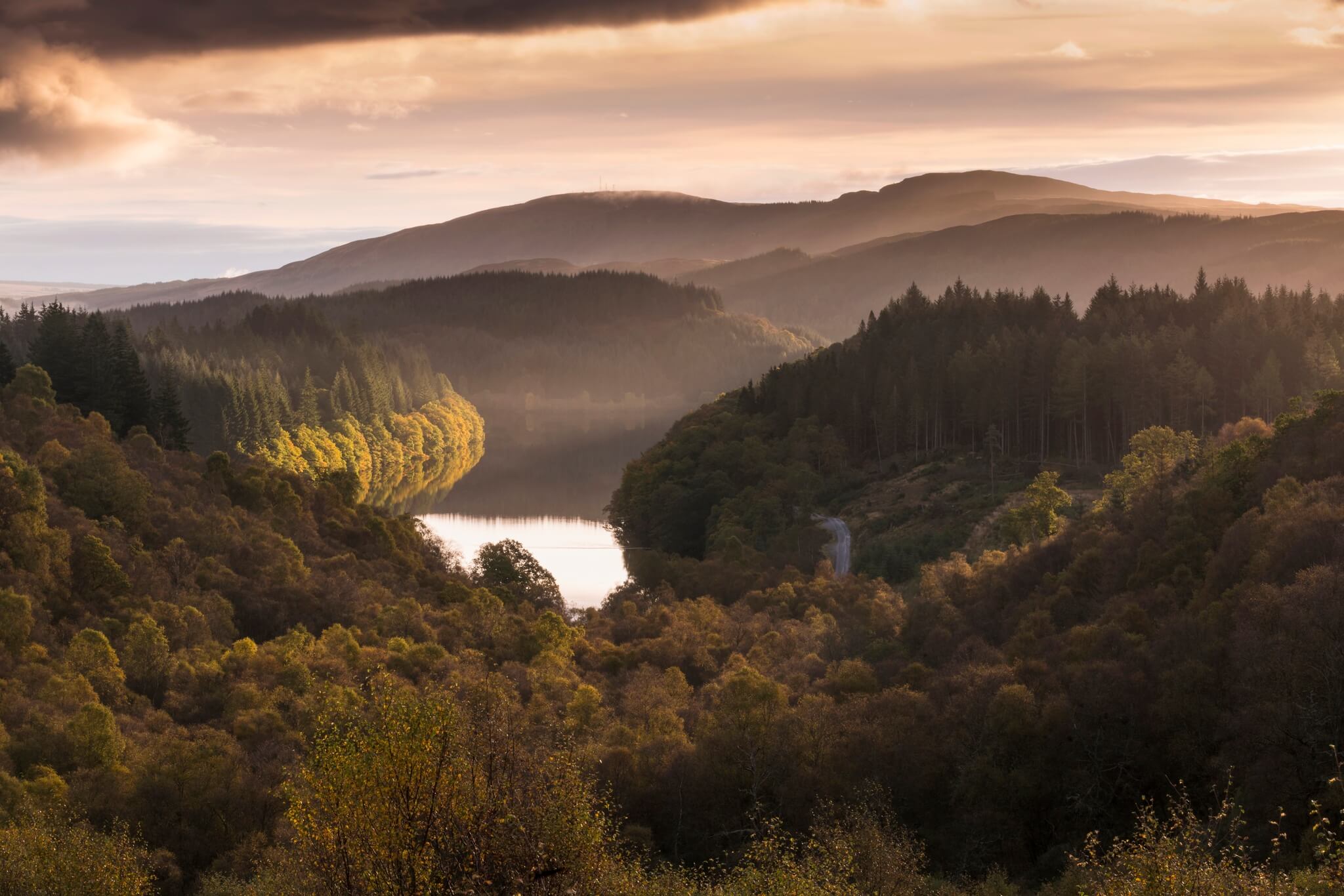
Scotland's Landscapes, Scenery & Nature Spots
Explore our ancient pine forests, arctic landscapes, coastal meadows and more.
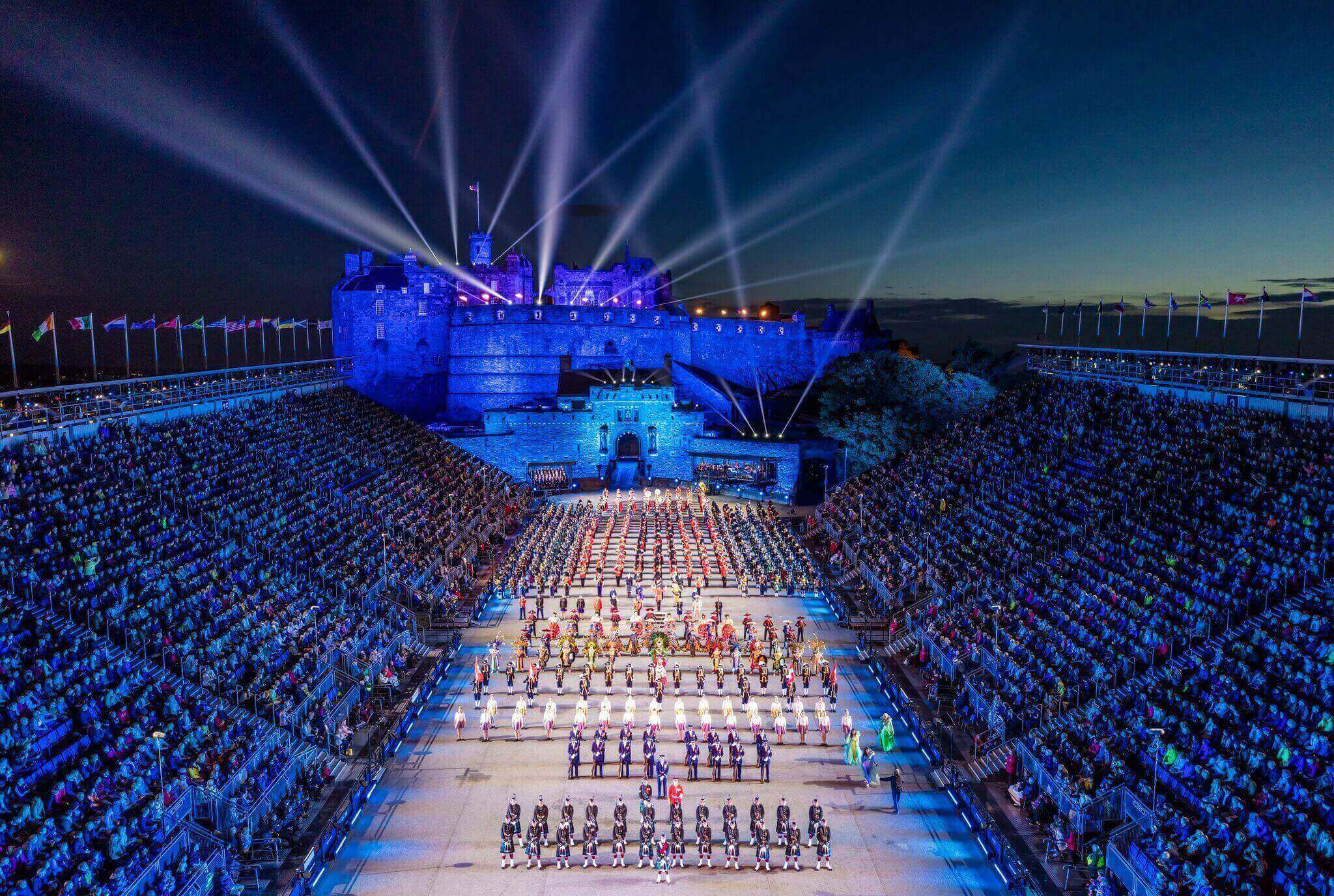
Events & Festivals in Scotland
There's something happening in Scotland right now that the whole family will love.
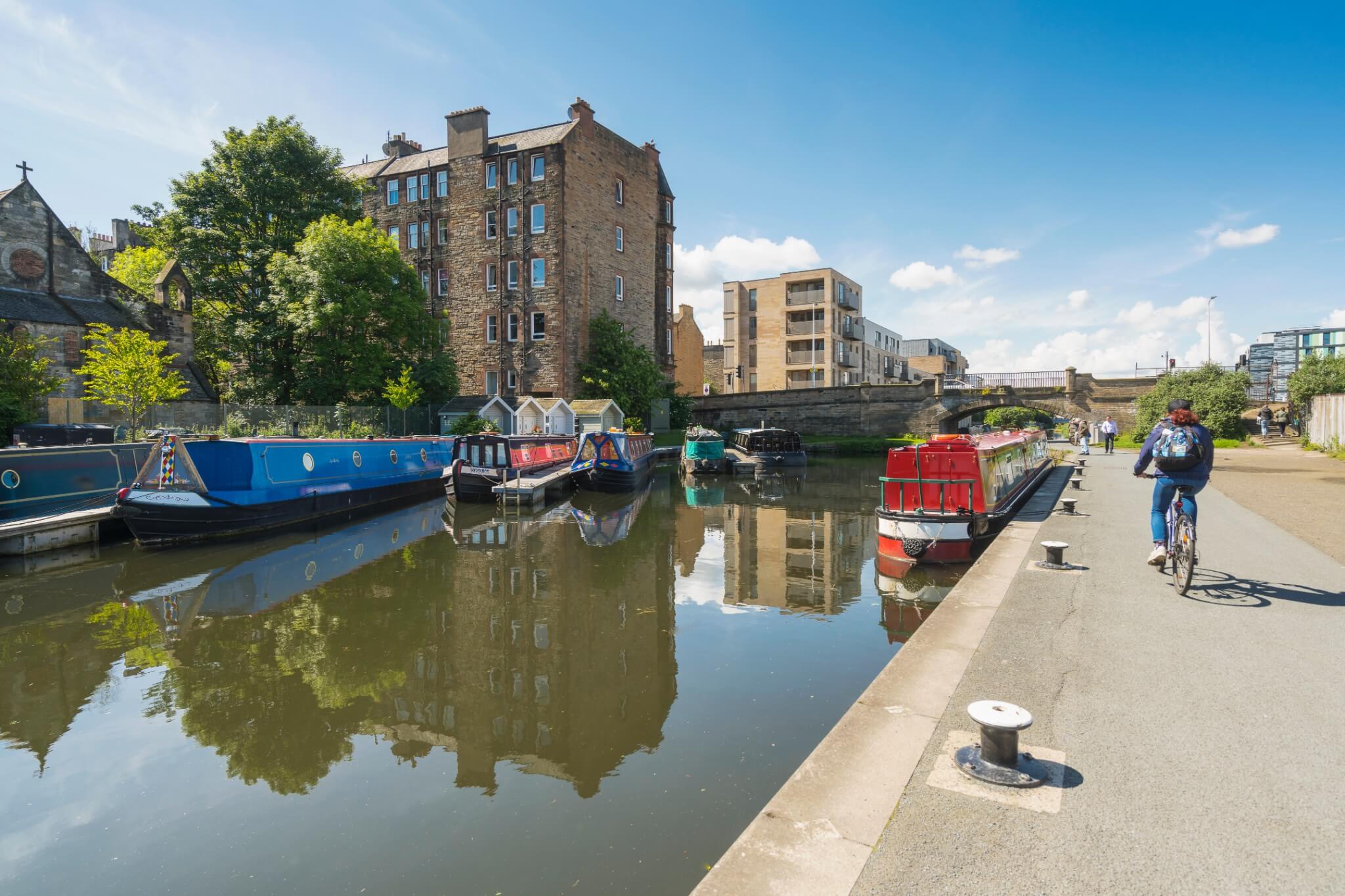
Unusual Accommodation in Scotland
Fancy staying somewhere a little different? From castles to lighthouses, teepees to brochs, there's lots of unusual choices.
Scottish Culture & Uniquely Scottish Things
Discover the culture and stories that make Scotland special.

Scottish Food & Drink
Get a taste for Scotland and discover the country's mouth-watering food and drink.
Pick of the month
Actor Eugene Levy connects with his Scottish roots.
© Picture Courtesy of Apple
Eugene Levy uncovers his Scottish ancestry
Follow actor Eugene Levy on his adventures around Scotland as he learns all about his heritage, soaks up Scottish culture and connects with his roots.
Uncover Scotland's regions
Map of Scotland
Where will you explore?
From the rugged coastline to sparkling city lights, the ancient Caledonian forests of the Highlands to the rich history of the Lowlands, there are plenty of places to start your Scottish adventure.
Browse our travel blog
Not sure where to start? Check out our list of what's new to spark your imagination.
11 Reasons Why You Should Visit Scotland In 2024
Discover reasons why you should visit Scotland in 2024. Including Arbroath Abbey, Caithness and Sutherland, Perth Museum and more!
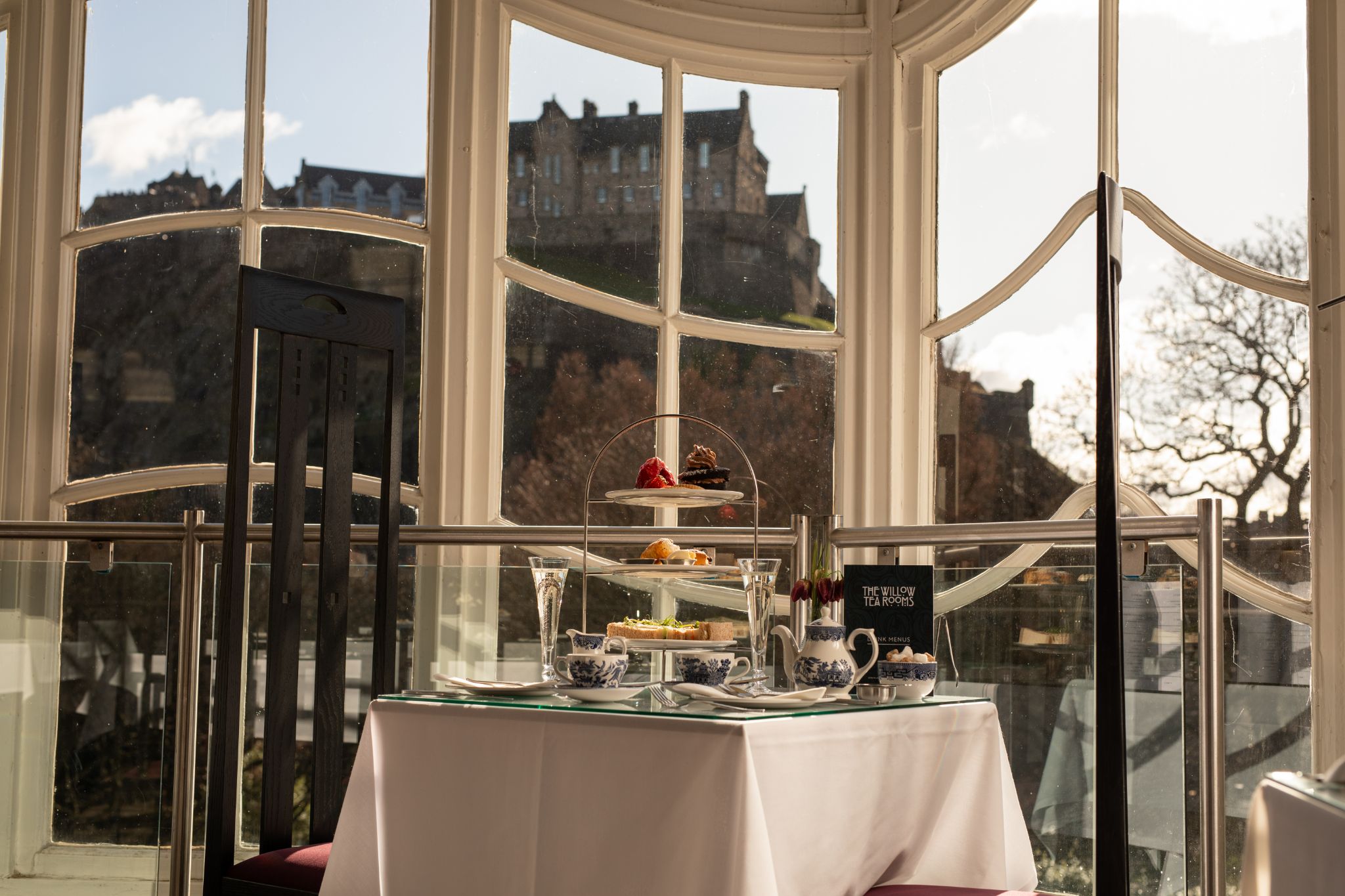
9 Places To Enjoy An Afternoon Tea In Scotland
Discover places to enjoy a delicious afternoon tea in Scotland. Including Maryculter House, Garvock House Hotel, The Willow Tearooms and more!
10 Stunning Pub Walks In Scotland
Discover these stunning pub walks in Scotland. Including Lerwick Explorer to Douglas Arms, Gullane to Bonnie Badger and more!
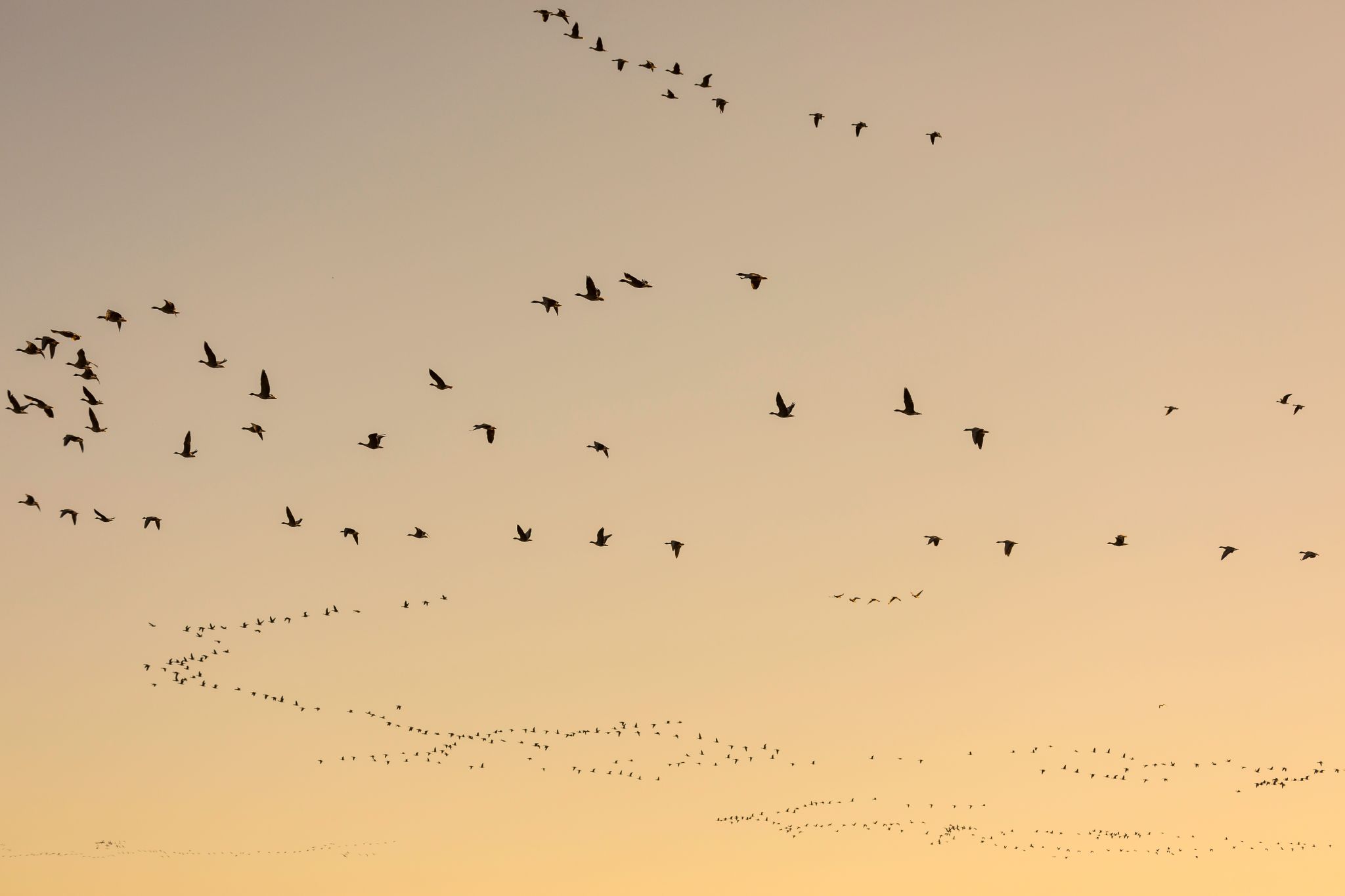
A Beginner's Guide to Scottish Wildlife
Read expert answers to Scottish wildlife questions. Find out what wildlife to see in Scotland and how to do so responsibly.
10 tricky Scottish place names and how to pronounce them
With this list you’ll get the hang of these 10 tricky Scottish place names in next to no time!
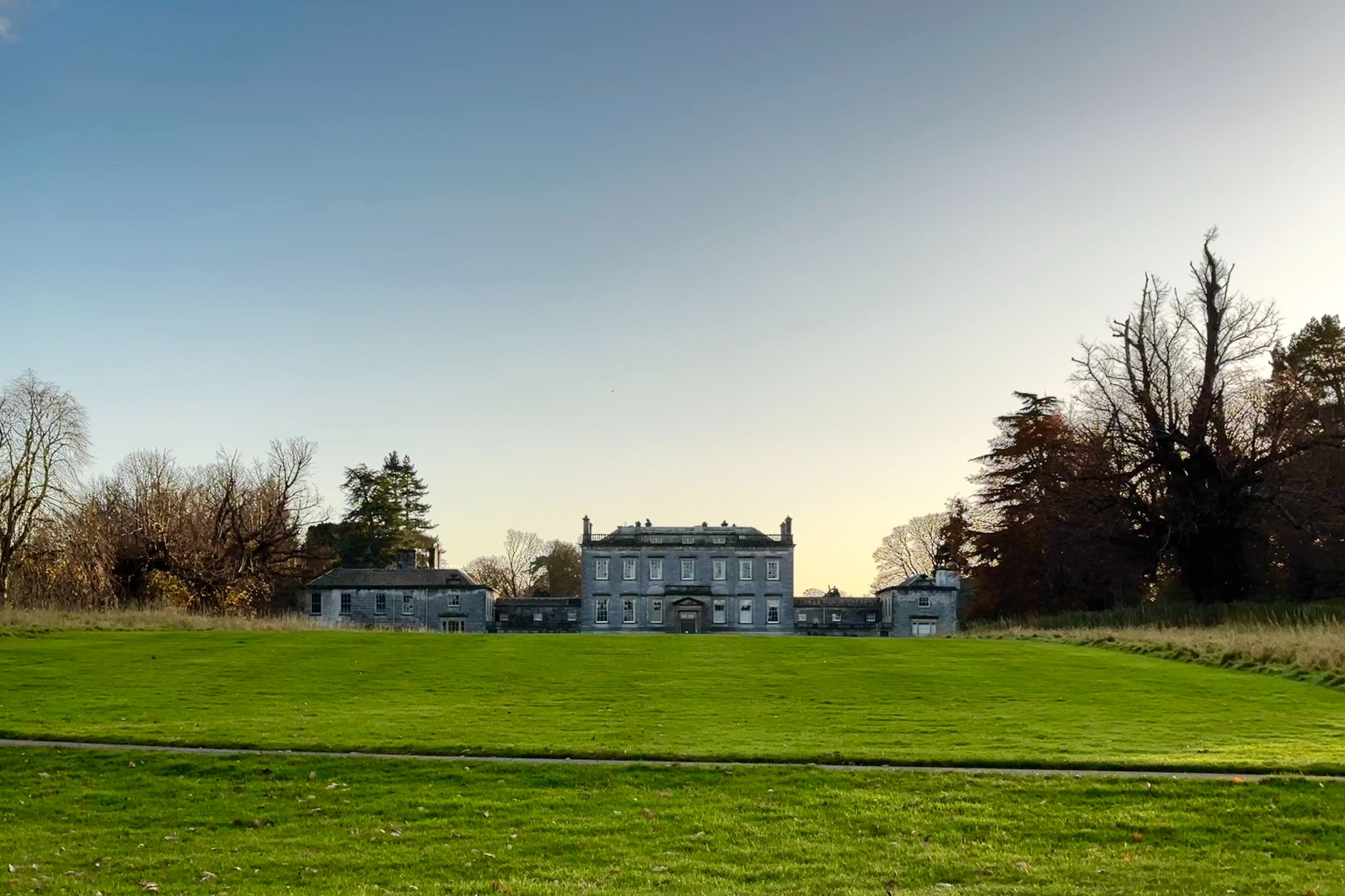
7 Buccaneers Locations to Visit in Scotland
Are you a fan of the latest Apple TV series The Buccaneers? Find out which locations were used to film this new historical drama and more!
Start planning your seasonal break
Whatever time of year you're coming, Scotland's got you covered. Immerse yourself in each unique season.
Spring Holidays and Breaks in Scotland
Spring in Scotland is a great time to visit. The longer days mean hours of playtime during your Easter holiday and nature is bursting into life.

Summer Holidays
Autumn Breaks
Christmas & Winter Breaks
Top tips for travelling to scotland.
Driving an Electric Vehicle in Scotland
Everything you need to know about driving, or hiring, an electric vehicle in Scotland.
Scotland's Weather, Climate & Average Temperature
What's the weather in Scotland? Find out about weather across Scotland's different regions.
Passports, visas & customs
Coming from overseas? Check the passport and visa requirements for visiting Scotland.
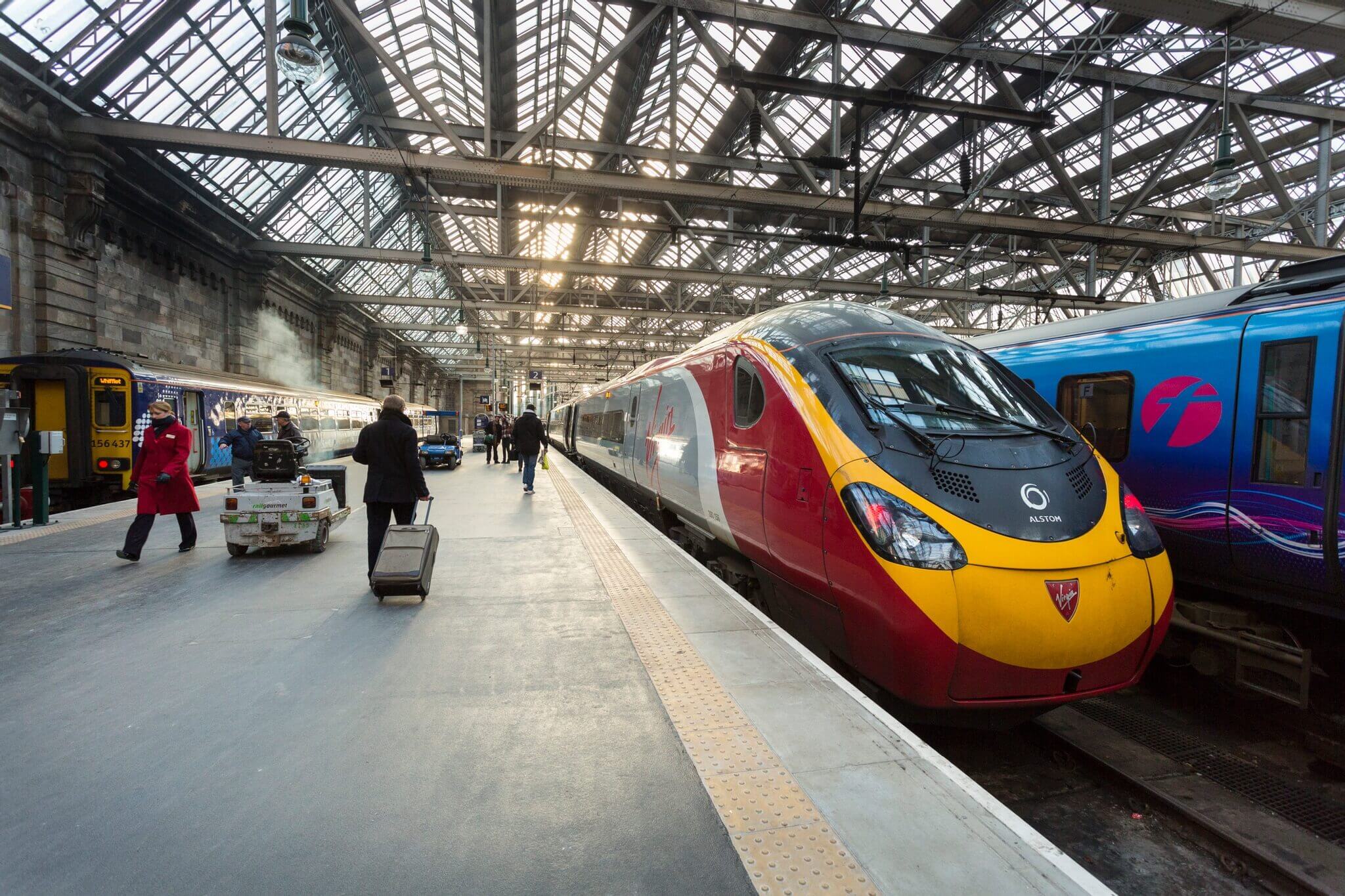
Travelling to Scotland
Plan your journey to Scotland by train, bus, car, plane or ferry.
Accommodation in Scotland
Find the perfect accommodation for your break to Scotland.
Holiday Carbon Calculator
Discover the impact your holiday in Scotland will have on the environment using our carbon calculator.
Your pictures of Scotland
Cookies are needed to see social media images from this place.
JavaScript needs to be enabled to see social media images for this place. You can turn this on in your browser settings.
Find experiences
JavaScript needs to be enabled to see this product search form. You can turn this on in your browser settings.
Join our Newsletter Clan
Get Scotland inspiration direct to your inbox. Don't miss the inside track from our Scotland experts on exciting trip ideas, unique attractions and hidden gems loved by locals.
- Search Please fill out this field.
- Manage Your Subscription
- Give a Gift Subscription
- Sweepstakes
- Travel Destinations A-Z
How to Plan the Perfect Scotland Vacation
From fairy-tale castles to charming small towns, the Scottish countryside is every bit as spectacular as you've heard.
Best Times to Go to Scotland
Best things to do in scotland.
- Getting to the Scottish Highlands
Where to Stay in Scotland
With its stately castles , glass-like lochs, and voluptuous glens, Scotland has always been a showstopper. The country's magic extends from its quaint small towns to the snow-capped peaks of its romantic, rugged Highlands to its dynamic modern cities like Glasgow and Edinburgh. It's home to some of the best national parks in the U.K. and more than 900 offshore islands with extraordinary wildlife like regal red stags, majestic golden eagles, humpback whales, and massive salmon (not to mention the fabled inhabitant of Loch Ness, too).
The raw, poetic beauty of this ancient land — formerly known as Caledonia — is difficult to overstate. If you're hoping to head to the U.K.'s ravishing northern nation, read on for our guide to planning the perfect Scotland vacation.
The bad news is that, like the rest of the U.K., Scotland's weather is far from reliable, even at the height of summer. But as long as you're prepared to accept that and pack a raincoat for the odd shower or two, then you'll be fine from May to September. The smart money is on visiting in June and the first two weeks of July, when Scotland basks in seemingly endless summer evenings (the sun doesn't set until 11 p.m. in some parts of the Highlands) and the British school holidays have not yet begun, so prices remain low.
For winter travelers, Scotland has the U.K.'s best ski resort at Cairngorm Mountain , while the capital, Edinburgh, hosts one of the world's biggest New Year's Eve parties, Hogmanay .
If you like the great outdoors, you'll love Scotland. It's an ideal place for hiking, biking, and generally embracing the wildly beautiful landscape. You can summit magnificent Ben Nevis in a day (the tallest mountain in the U.K., at 4,413 feet), take a ferry out to explore the Hebrides archipelago and its stunning white-sand beaches, tour scores of castles, including the Queen's favorite holiday home, Balmoral (open to the public every April through July), and dive into a quirky food scene encompassing dishes like haggis (an offal and oatmeal combo, which tastes significantly better than it sounds), deep-fried mars bars, and juicy scallops, langoustines, and mussels.
Scotland is also a mecca for both golfers ( St. Andrews Old Course is the headline act) and whisky lovers , with some of the world's best distilleries available to tour, including Johnnie Walker on Edinburgh's lively Princes Street, Glenlivet near pretty Ballindalloch, and the legendary Macallan on a sprawling country estate in nearby Aberlour.
If you enjoy driving, you'll find some of the U.K.'s emptiest, most dramatic roads here, too, (as driven by James Bond in "Skyfall"), including the latest official addition, the North Coast 500 , an action-packed 500-mile route (516 to be exact) featuring mind-boggling coastal scenery, jaw-dropping beaches, rolling hillside, quaint fishing villages, and multiple hidden gems.
And if you prefer your challenges on foot, check out the magnificent West Highland Way , the country's best-loved long-distance walking route. Snaking its way from Milngavie to Fort William, it covers some of Scotland's finest scenery over 96 miles and is normally completed from south to north.
Meanwhile, history buffs will also be agog on any visit to Scotland, thanks to its 3,000-plus castles ( Castle Sween in Argyll is the oldest, dating back to the 1100s), as well as plenty to check out in the winding wynds (narrow lanes) and twisted staircases of Edinburgh's enchanting Old Town. ( Edinburgh Castle , towering over the city, is arguably the grandest in the country, too.)
If you can, make time to visit Perth, the former Scottish capital where kings were crowned on the Stone of Destiny and infamous Glen Coe, a beautiful valley full of waterfalls and deer, also known for the brutal clan massacre of 1692 (which inspired the Red Wedding in George R. R. Martin's Game of Thrones ).
Where are the Scottish Highlands — and what is the best way to get there?
Jess Macdonald/Travel + Leisure
The clue is in its name: the Highlands are the mountainous upper half of Scotland, covering 10,000 square miles of picturesque scenery. The region's lively capital is Inverness , which sits centrally and is a superb base from which to explore, while other highlights include mysterious, misty Loch Ness, majestic Cairngorms National Park , and idyllic Isle of Skye , which has been connected to the mainland via a road bridge since 1995.
The easiest way to reach the Highlands is to fly into Inverness Airport from London or elsewhere in the U.K., or rent a car and drive from Glasgow or Edinburgh. However, the way to arrive in style is on the Caledonian Sleeper train from London Euston, a chugging time machine where you can fall asleep to the sounds of black cabs and bustle of the British capital and wake up among the red deer and magical glens of the Highlands. Regularly nominated as one of the world's best train journeys , the scenery gets truly spectacular after Fort William, as the route skirts a dramatic chain of lochs before descending into lush glens and crossing the Glenfinnan Viaduct made famous by the Harry Potter films. For the ultimate Hogwarts experience, steam locomotives work this route during the summer months, so check in advance for these special departures.
The major cities have an abundance of hotels for every budget, headlined by Glasgow's Kimpton Blythswood Square , a boutique property in the former headquarters of the Royal Scottish Automobile Club, and The Dunstane Houses in Edinburgh, a pair of beautifully renovated 19th-century townhouses.
Scotland arguably does traditional country house hotels and rustic lodges better than anywhere else in the world, with Fife Arms in Braemar and Gleneagles in Perthshire being particular treats (the latter, nicknamed the "Glorious Playground" boasts three championship golf courses, its own dedicated train station, and the only restaurant in the country with two Michelin stars).
Scotland is, of course, peppered with castles, and many have been converted into hotels and B&Bs in recent years, with some of the better fortified accommodation options including Glenapp Castle in Ayrshire, Inverlochy Castle in Fort William, Atholl Palace Hotel in Pitlochry, and Stonefield Castle Hotel on Loch Fyne.
Wherever you stay, you'll get a warm welcome — not to mention a hot bowl of Scottish porridge or a plate of bacon, eggs, and haggis to start the day in a spectacularly scenic country.

14 Best Places to Visit in Scotland in Winter
Written by Shandley McMurray Updated Sep 26, 2022
Scotland is an isle of beauty easily appreciated in all seasons. Ruined castles, majestic mountains, craggy cliffs, verdant valleys, and lavish lochs blanket the isle, enticing cameras to start snapping. A dusting of snow and frost transform these natural wonders into an entrancing winter wonderland you won't want to leave.
Whether you're looking to ski, snowboard, ice-skate, or shop in a Christmas market, there is a slew of fun places to visit in Scotland in winter. Book a dogsledding adventure in Cairngorms National Park , climb the basalt hills of Fairy Glen , or cruise the waters of Loch Ness . You could also spy the often elusive northern lights in the Scottish Highlands' Shetland Isles or the Inner Hebrides' beautiful and rustic Isle of Coll .
No matter your plan, be prepared for all types of weather, as it's very unpredictable in Scotland during winter. Warm, waterproof gear is a must, as are thick socks, layers, and a hat. Also, check the tourist attractions you're hoping to visit while sightseeing, as some are only open seasonally.
Our list of the best places to visit in Scotland in winter will help you plan your itinerary.
1. Edinburgh
2. inverness, 4. fort william, 5. ben nevis, 6. isle of skye, 7. cairngorms national park, 8. loch leven, 9. urquhart castle, 10. glencoe mountain resort, 11. perthshire, 12. john muir way, 13. the isle of coll, 14. the shetland islands, map of places to visit in scotland in winter.
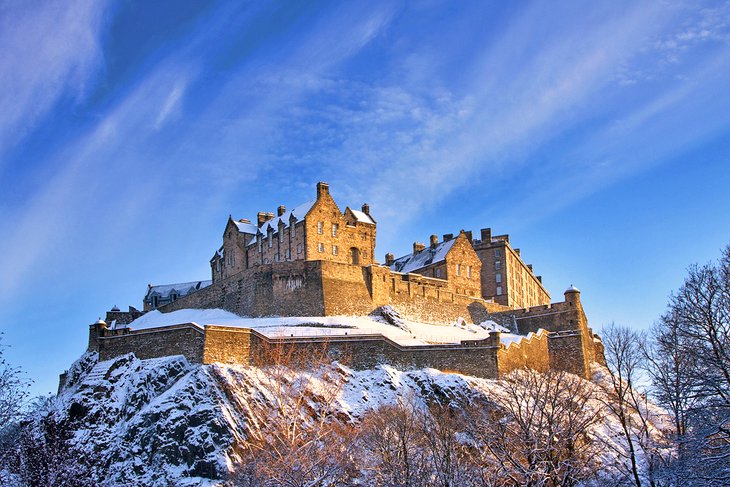
While not often covered in snow, Edinburgh becomes even more enchanting under a dusting of white. Edinburgh Castle emits a romantic glow from atop its hilltop home, high above the winding streets of the Royal Mile . Add charming Christmas markets and twinkling lights, and you're in for a wintery treat at this top place to visit.
One of the best places to visit in winter in the UK , Edinburgh boasts plenty of interesting attractions . If the weather is fair, walk up Arthur's Seat , the highest point in Holyrood Park . At the top, you'll find a stellar view of Edinburgh's steepled churches and medieval buildings.
Then, lace up your skates for a twirl around one of the many outdoor ice rinks ( St. Andrew Square offers an oval rink that loops around the Melville Monument ). A twilight skate is particularly romantic, and even more enjoyable when topped with a steaming mug of hot chocolate.
Christmas festivities run from November through January and include rides, a Christmas Tree Maze , Santa's Grotto , and a carousel, as well as the 60-meter-tall Star Flyer . Hogmanay (a.k.a. New Year's) is another popular time filled with festive fun and fireworks shows.
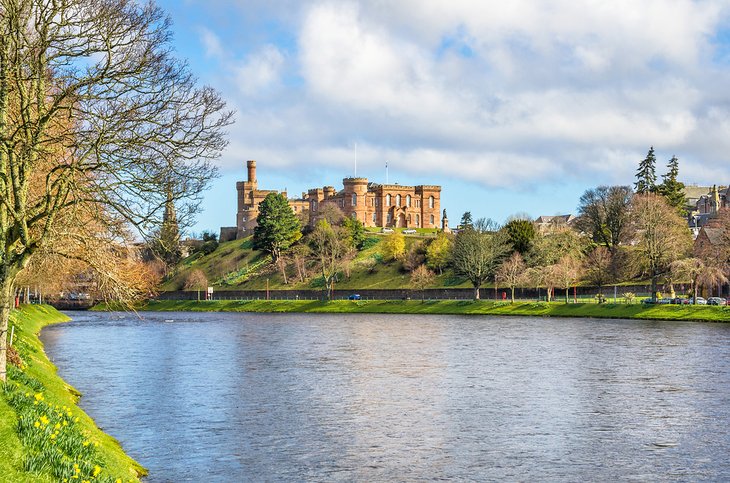
Set at the north end of the spectacular Great Glen , there's no shortage of beauty in Inverness . While you won't want to take a dip in the sparkling Loch Ness at this time of year, walking along its banks and admiring the view from atop Urqhuart Castle is a must-do activity for every winter traveler in Scotland.
Breathe in the fresh, crisp air while marveling at shimmering snow and ice adorning the ancient buildings and picturesque landscape as you hike around the area. Then, book a game of golf at the Inverness Golf Club . Yes, you can still play golf in the winter.
If you're hoping to stay warm, head inside to watch a show at one of the numerous theaters. We highly recommend catching a hilarious pantomime (a.k.a. "panto") at Eden Court Theatre .
Other cozy activities include shopping in the town center, gazing at inspiring works in Castle Gallery, and sitting by a fire while dining in a local restaurant.
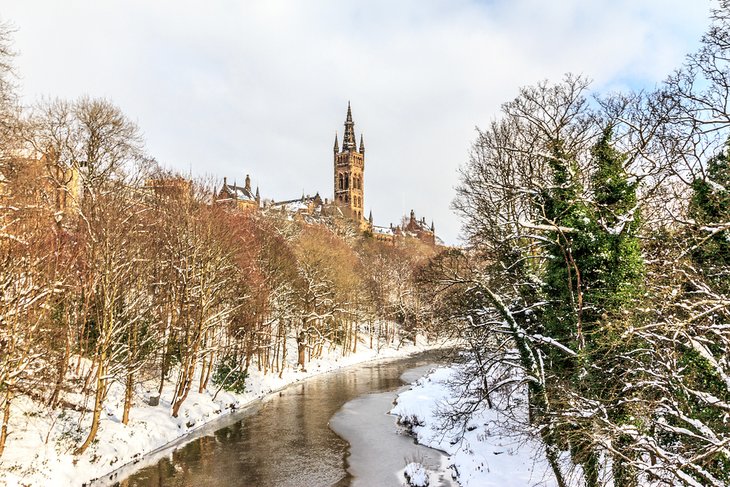
The largest city in Scotland, Glasgow is the place to go if you're looking to flex your shopping muscles, especially around the holidays. There's a large Christmas market in St. Enoch Square filled with interesting gifts, treats, sparkling lights, and music.
George Square plays host to even more festive fun, introducing a skating rink (a.k.a. Glasgow on Ice), giant Ferris wheel, and carousel, not to mention crafts and treats.
As you wander the streets of Style Mile in your warm winter gear, keep your eyes peeled for beauty. You'll pass stately Victorian homes and other historic buildings so charming your camera will quiver with excitement.
For some indoor entertainment, visit the stately Glasgow Cathedral . Or book a couple of hours for a trip to the Kelvingrove Art Gallery and Museum . Established in 1901, this historic building is a mecca of artistic wonders by artists as famed as Van Gogh and Salvador Dali.
- Top-Rated Tourist Attractions in Glasgow
- Best Day Trips from Glasgow
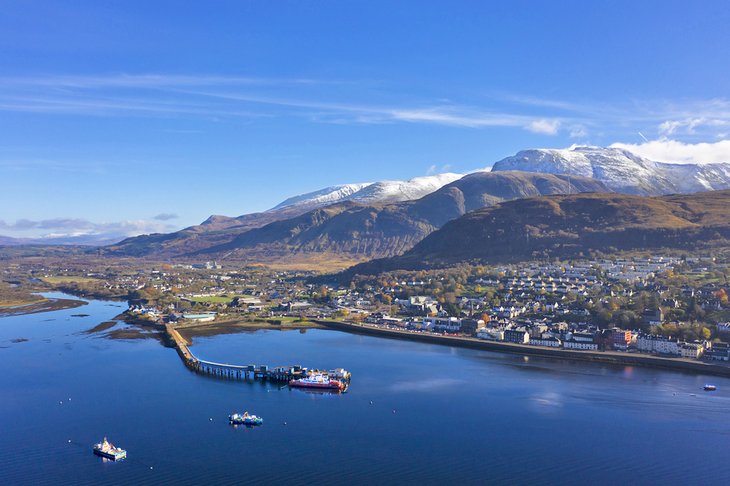
A small city in Lochaber , Fort William is the second largest settlement in the Highlands, just behind Inverness . Its historic streets are packed with fun things to do , like visiting Old Inverlochy Castle , walking across Neptune's Staircase , boutique shopping, or dining in one of the many restaurants.
Caught a chill? Stay warm while you soak up the region's history in the Treasures of the Earth and West Highland Museums , or tuck into a hearty pie by the fire at a local eatery.
Dubbed the UK's "outdoor capital," Fort William offers unsurpassable views of the lovely Loch Linnhe, and serves as a base for explorers. The Nevis Range is seven miles away, and the Great Glen , Mallaig , and Glencoe are also close, providing visitors with vast opportunities to hike, bike, sled, and ski.
Wildlife lovers can challenge themselves to spot Scotland's "Big Five": red deer, seals, red squirrels, European otters, and golden eagles. With fewer leaves to hide behind, this task is often accomplished in one day of exploring the areas just outside Fort William.
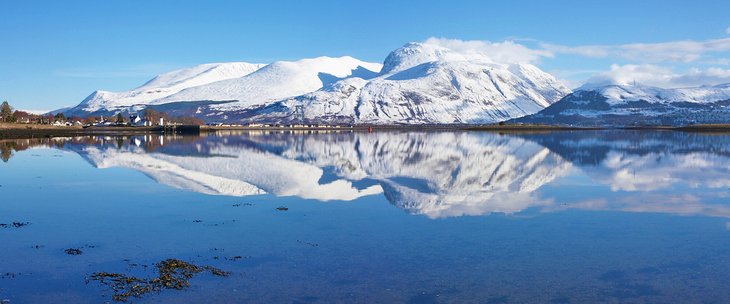
The Grampian Mountain Range is home to the UK's tallest peak: Ben Nevis. In one year, over 125,000 walkers visit these mountains, some making the arduous and challenging trek (also known as "bagging the Ben") to the summit of its massive star.
If you hope to be one of them, plan your route in advance and pack for all types of weather. Only experienced climbers are recommended to attempt this hike during winter. The easiest path is The Mountain Track , which begins at the parking lot of the Glen Nevis Visitor Centre .
While they may pale in comparison with the Alps, the Scottish mountains outside Fort William offer bountiful opportunities to partake in winter sports. Skiers and snowboarders face an extensive selection of runs and an off-piste area. Snow biking and sledding are also popular at this snowy locale.
Prefer to take it slow? Try cross-country skiing or snowshoeing. Even better, hop on the Nevis Range Mountain Gondola for a picturesque ride to the top of Aonach Mòr. Two trails are accessible from here: Sgurr Finnisg-aig (about 40 minutes return) and Meall Beag (about an hour both ways).
Didn't pack gear? No worries: you can rent everything from snowshoes to snowboards at Nevis Range Mountain Experience .
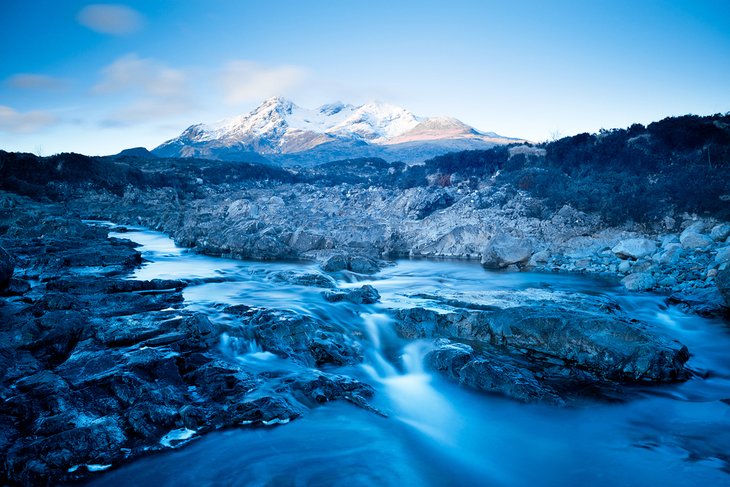
Measuring 80 kilometers in length, the Isle of Skye is the largest of the Inner Hebrides archipelago. It's also, arguably, the most beautiful. Boasting fairy glens, ancient rock pools, majestic mountains, and deep rugged valleys, there's so much to admire you'll want to extend your stay.
Visiting in winter comes with multiple bonuses: you won't have to crop tourists out of your photos or pay exorbitant prices for food and lodging. Also, you can easily enjoy a sunrise, which happens at 9am during winter as opposed to 3:30am at other times of the year.
The Fairy Pools are truly magnificent no matter the season, but winter's warm light and sparkling frost lend them a superlative glow. Enter an otherworldly universe at the spectacular Fairy Glen just above Uig . The basalt hills are a wonder to climb, just be careful you don't slip on ice.
Read More: Top Tourist Attractions in the Isle of Skye
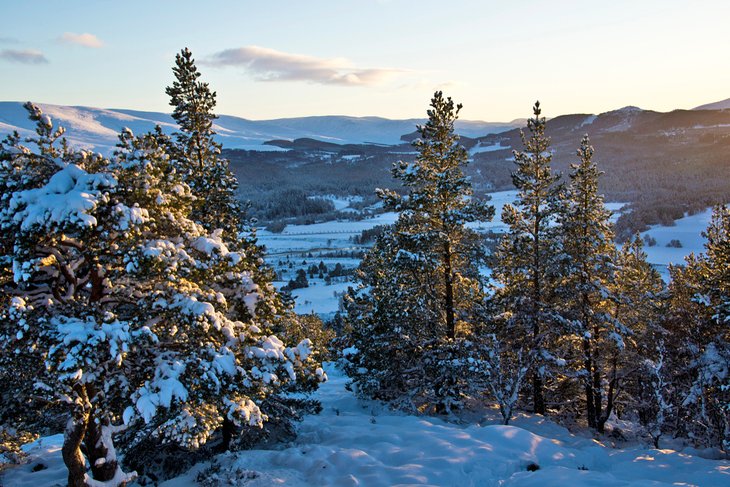
Whether you're a fan of hiking, bird-watching, or taking loads of photographs, you'll love visiting Cairngorm National Park in winter. A sparkling gem of the Scottish Highlands, this top natural attraction is a haven for wildlife. Keep your eyes peeled while walking its trails, and you may spot a red deer or a golden eagle.
You can walk for days in the park's vast expanse, warming yourself with hearty fare at local restaurants. Or, hit the slopes at one of the park's three resorts. Cairn Gorm Mountain , The Lecht Ski Centre , and Glenshee Ski and Snowboard are open (weather permitting) from December to May.
Not a fan of zipping down mountains? Opt for a cross-country ski instead. You can find miles of trails, some through forests, in Slochd and Glenmore . Or book a completely new experience, like a dogsled adventure. Cairngorm Sleddog Center in Aviemore offers guided trips through the Cairngorm Mountain Range .

Deep in the heart of Scotland, 20 miles south of Perth , lies the mesmerizing freshwater Loch Leven . The biggest lowland loch in the country, this is a sanctuary for wildlife and a phenomenal backdrop for photographs.
During winter, over 35,000 birds call Loch Leven home, making it a hot spot for bird-watchers. Visit the RSPB Loch Leven Center to learn more about them, and rent binoculars for an up-close look from the viewing hides.
Loch Leven Castle , located on an island in the loch, is worthy of a visit. Mary Queen of Scots was once held here. The 21-kilometer Loch Leven Heritage Trail is another popular attraction, enticing guests to hike or cycle around the loch, admiring its beauty along the way.

The ruins of Urquhart Castle sit on a headland overlooking the sparkling Loch Ness and offer visitors a glimpse into its 1,000-year-old past. One of the largest castles in the country, this storied spot is unmissable for its innate beauty, unbeatable views, and expansive history.
The best vistas can be had from atop Grant Tower , while a visit to the windowless prison cell is a bit eerie. Kids will be uber impressed by the giant trebuchet plunked in an open area of the main lawn. Then, they can climb the hill to the gift shop for a treat.
Up the fun factor by booking a boat cruise, which offers the added bonus of exploring Loch Ness and seeing the romantic castle from the water. If you're super lucky, you may even spot the Loch Ness Monster, so be sure to have a camera at the ready.
- Read More: Top-Rated Castles in Scotland

During winter, visitors flock to this resort with skis and poles in hand to enjoy its vigorous runs. Home to "the longest and steepest ski run in Scotland," this is the place to be if you dream of soaring down snow-covered slopes in the UK.
There are 20 runs of all levels to explore on skis or a snowboard, and eight lifts to transport visitors to the top. The Plateau Café serves hot food daily, making it an ideal spot to enjoy a mid-day break.
Not a skier? No problem. Guests can also sled or walk the hills to enjoy the winterscape at this natural wonderland.
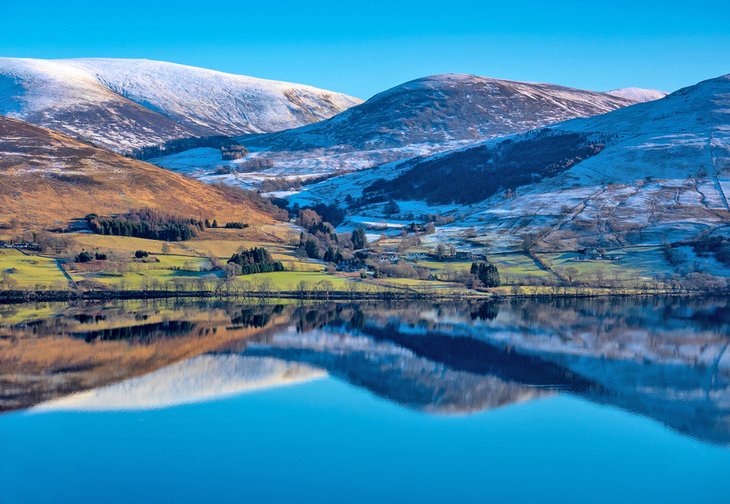
If you're looking for natural beauty, the historic Perthshire region (a.k.a. the county of Perth and Kinross) has it in spades. Nestled in the center of Scotland, this gorgeous area is home to a segment of the Grampian Mountains , dense forests, and picturesque rivers like the splendid Loch Tay .
In winter, these beauties are made more captivating by shimmering ice and snow. Strap on your boots and walk through the Hermitage Forest where you'll gasp over the incredible scenery. Particularly impressive is Ossian's Hall of Mirrors , a Georgian structure built to offer unbeatable views over the Black Linn Falls . This is by far one of the best places to visit in Perthshire in winter.
Stop in the small, charming villages for a warm cuppa while you chat about life with the friendly locals. Lovely Dunkeld sits on the banks of Loch Tay, boasting adorable medieval streets and ancient buildings begging to be photographed.
Pitlochry , which lies serenely beside Loch Tummel , is a wonderful place to unleash your inner tourist – adorable shops line the quintessentially Scottish streets, and the dining options are vast.
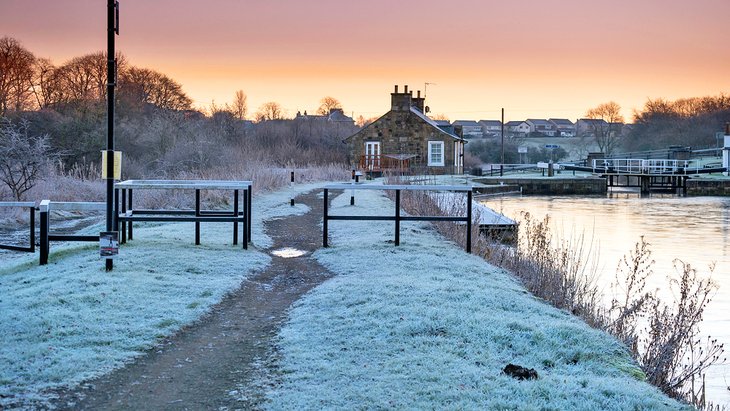
You'll need days to explore the entire 134 miles of the John Muir Trail , dubbed one of the "nicest walks in Scotland." Named in honor of the famed Scottish American naturalist, author, and environmentalist, this massive outdoor route presents visitors with a tranquil way to enjoy the Scottish countryside.
The trail spans central Scotland, from Dunbar on the east coast to Helensburgh on the west. If it's not icy, visitors can bike its length, discovering hidden rivers, bays, and beaches. Walk by sparkling lochs, gaze at rolling hills, and fall in love with enchanting villages on your journey.
Delightful Balloch lies on the shores of Loch Lomond and provides easy access to the vast Loch Lomand & The Trossachs National Park .
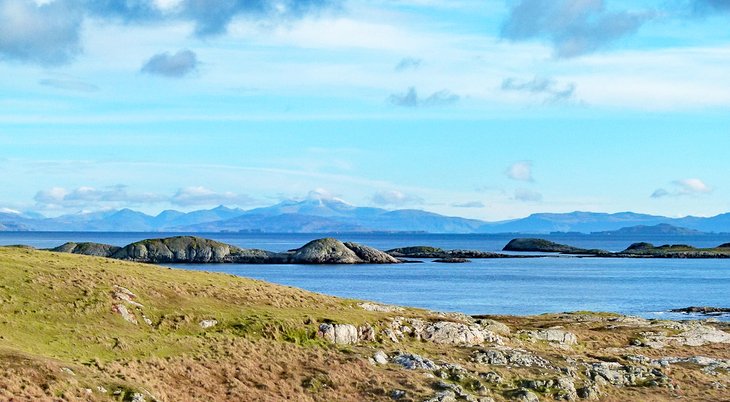
Get back to basics with a trip to the Isle of Coll in winter. Fittingly known as Dark Sky Island, this rustic island is one of the best places to visit for seeing the northern lights in Scotland . The isle has only one small village and no streetlights, hence its unique moniker.
The best time to see the Northern Lights is between 10pm and 12am during December and January, but the lights are often visible on a cloudless night between September and late March also.
During the day, the best things to do in winter include exploring the island's beaches; walking up the isle's highest point, Ben Hogh ; golfing on the nine-hole course at Claid ; and fishing. As always, it's best to be prepared for weather changes by wearing layers.
On this small island, you won't bump into many other tourists on the Isle of Coll, which is ideal if you're hoping for a quiet vacation. Also, beyond a taxi, there's no public transportation available on the island. It is reachable by a two-hour-and-40-minute ferry from Oban or a 55-minute boat from Tiree . Told you it was a place to get back to basics.
Bikes can be rented in the main (and only) village, Arinagour and provide an excellent way to explore this 13-mile-wide island in the Inner Hebrides.
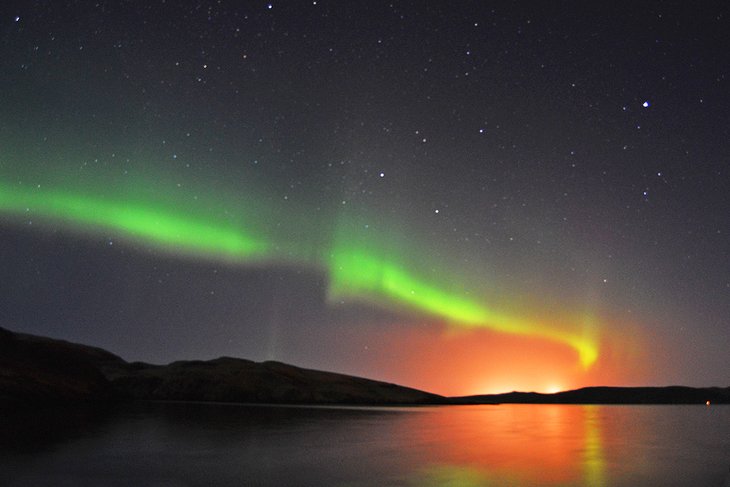
The Shetland Islands also top the list of the best places to view the northern lights in Scotland . It's known here as the Mirrie Dancers , and viewing Mother Nature's spectacular nighttime light show is one of the best things to do in Scotland in winter.
This isn't the only tourist attraction worth seeing during your visit, though. Some museums are still open during winter, including the Shetland Museum in Lerwick .
Winter hikes are a popular activity, especially if you stick close to the coast, where you have a heightened chance of spotting whales and otters. The Knab in Lerwick is one of the best places to hike at this time of year, and lucky visitors can spy seals during their trek.
The Shetland Islands consist of close to 100 isles, each of which is worthy of a visit. Time your trip for the Up Helly Aa festival , which takes place in Lerwick, on the last Tuesday of January. This fun-filled event happens over one day and is linked to the Shetland Islands' Viking heritage. It culminates in a torch-lit procession that ends with the community burning a Viking longship created just for this purpose.
Can't make it to Lerwick? No worries. There are 12 other smaller versions of this festival on other Shetland isles.
More Related Articles on PlanetWare.com
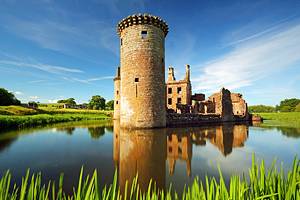
More Places to Visit in Scotland: Now that you know the best places to visit in Scotland in winter, check out the country's best tourist attractions , which include boat trips on Loch Lomond and visiting Urquhart Castle . Along the way, stop off in Scotland's most charming small towns .
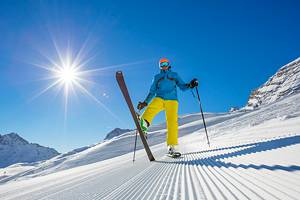
Visit these Winter Havens in Europe: Winter comes but once a year. Enjoy building snowmen, visiting Christmas markets, and seeing some of Europe's best cities aglow with festive lights. A trip to Germany in winter is pure magic, while Prague turns into a fairy-tale land under the snow.

More on Scotland
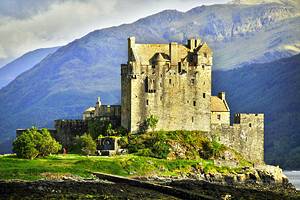
Thanks for visiting nordicvisitor.com! For the very best browsing experience on our website, we urge you to upgrade to the most recent version of your browser . Some of our site features may not function properly on older versions.
Scotland travel update | New tours of the UK!
- Search Suggested Results View All Results
- EUR (€)
- GBP (£)
- Self-Drive i
- Guided Small Groups i
- Privately Guided i
- Multi-Day i
- Scotland & Ireland i
- Scotland, England & Wales i
- Honeymoon i
- Highlands i
- Solo Travel i
- All types & themes
- All Scotland Tours
- Best Sellers
- Special Offers
- Book With Confidence i
- Scotland Travel Update i
- Why book with us i
- Travel Update
- Booking Terms i
- Sustainability Policy i
- Scotland at a Glance i
- Useful Information i
- Scotland Attractions i
- Scotland Blog i
- Scandinavia
- Switzerland
- United Kingdom
- Manage Booking
- Privacy policy
Iceland Bíldshöfði 20 110 Reykjavík +354 578 20 80 View Map
Sweden Scotland View Details
Scotland Tours in February
Visit Scotland in February to experience warm Scottish hospitality and the wintry beauty of the Highlands during the calm low travel season. Come explore the beautiful castles and old cobbled streets on a tour package crafted by the local travel experts at Nordic Visitor.
VISITING SCOTLAND IN FEBRUARY
Curious about Scotland tours in February? We’ve got you covered!
February is one of Scotland’s winter months, so it’s a great time to visit if you want peace and quiet. There are fewer visitors at this time of year compared to the summer, but the scenery is as dramatic and awe-inspiring as ever.
Since we are a Scottish tour operator based in Edinburgh, our travel experts live and breathe Scotland. You’ll be assigned a personal travel consultant for your Scotland tour in February, who will do all the planning for your self-drive adventure or privately guided vacation .
They’ll advise you on what to do and where to go depending on your interests. Plus, you get hand-picked accommodation, transportation reservations, daily breakfast and access to our 24/7 helpline included in your itinerary package.
Get in touch via our live chat or toll-free numbers and we'll happily plan your Scotland tour.
— WHY US?
Why book with nordic visitor.
- Hassle-free & seamless travel experience
- Flexible & customisable tour options
- Value for your money
- Professional service from local experts
- 24/7 emergency helpline during tour
Experience Scotland on a road trip
Explore the Highlands on a self-drive tour. You do the driving, we handle your accommodation booking, route planning and any customisations you desire. Enjoy a personalised itinerary, hand-marked map, attractions guide and more.
Scottish Highlands & Isle of Skye - Winter
Express scotland - winter, travel on a private tour in scotland.
Enjoy more Scottish cultural insights on a privately guided tour with a local driving you around in style. Tours are fully customisable and ideal for those interested in Scotch whisky, Scottish cuisine, Outlander film locations and more.
Scottish Highlands & Isle of Skye Winter - Private
Express scotland winter - private, experience scotland your way.
We have tours for all varieties of travel styles and interests. See our options for exploring Scotland below.
Guided Small Groups
Privately guided, best sellers, culinary experience, scottish heritage tours, the scottish highlands, all travel styles, what do our customers say.
The reviews speak for themselves. See what Nordic Visitor travellers said about their experience with us.
Highlights of Scotland, October 2020
A very good tour with a great information pack..
A very good tour with good information and map with highlighted attractions and a very good information pack.

Express Scotland, October 2019
Absolutely love working with nordic visitor.
I have already traveled twice with Nordic Visitor, and am already in the process of booking a third trip! Absolutely love working with you! Every bed and breakfast we stayed at was amazing. The hosts were so welcoming with great suggestions of things to do and places to eat. The rooms were very comfortable, and the amenities were awesome!
Nancy, United States
Complete scotland, october 2019, would definitely use again.
Our 2nd tour with Nordic Visitor. Would definitely use again.
Moreen, Singapore
Scottish highlands & isle of skye - winter, january 2020, our second time with nordic visitor.
This is our second time using Nordic Visitor.
Lisa, United States
Classic scotland, october 2019, the trip of a lifetime.
Every accommodation was stunning! We were met with enthusiasm and kindness and courtesy. I cannot say enough about our trip and the way it was set up and the accommodations. Everything was spot on and it was the trip of a lifetime for my sister and I. We already have friends who have booked a trip through Nordic as well. I am seriously considering another trip to Scotland next year and using Nordic for sure.
Audrey, United States
Scottish highlands & isle of skye, october 2019, great trip.
All of the hotels had great food and people. Response time was excellent - Agnes was very attentive. The packets were wonderful, we referred to them constantly. The big map was very helpful as well.
Raymond, Canada
Very satisfied.
Our second trip with Nordic Visitor. Recommended friends who went to the Scandinavian countries with Nordic Visitor and they were very satisfied.
Wally, United States
Scottish highlands & isle of skye - private, october 2019.
Our experience was excellent. We had no worries the entire trip.
Matt K, United States
Wonderful trip.
Once in the tour, we realized everything was simple and working out as planned. No issues. It was wonderful!
Scotland Travel Guide
Start preparing for your trip by doing some research before your Scottish adventure.
The starting point of most Scottish adventures is Edinburgh, Scotland’s capital city, where the...
This is one spot where you’ll definitely want to pull the car over for a photo. The Quiraing is...
Sitting at the heart of Scotland, Stirling is where the Lowlands meet the Highlands. Owing to...
What to bring
Come prepared for all seasons and activities with ..
Find out more about the British currency and commo..
What kind of temperatures can you expect in Scotla..
From single malt whisky to traditional delicacies,..
Flights to Scotland
The two biggest international airports in Scotland are in Glasgow, Scotland’s largest city, and in Edinburgh, the capital city and usual starting point for Nordic Visitor tours. Flight times to Scotland are, for example, 6.5 hours from New York City and 1.5 hours from London. Major international airlines with flights to Scotland include (but are not limited to) British Airways, Virgin Atlantic, United Airlines, American Airlines, Delta and KLM.
Scotland and the rest of the UK is on GMT time. If your journey to Scotland involves one or more connecting flights, or if you're crossing several time zones to get here, your dedicated Nordic Visitor travel consultant can add extra nights in Edinburgh to your package so you can rest up after arrival.
Please note that flights to Scotland are not included in Nordic Visitor packages.
FREQUENTLY ASKED QUESTIONS ABOUT SCOTLAND IN FEBRUARY
If you want to know more about Scotland tours in February, read on for our expert advice. We’re here to answer your most commonly asked questions to help you with your Scotland travel plans.
What are the best things to do in Scotland in February?
Thankfully, many of Scotland’s amazing attractions are accessible all year long. What’s more, even with short daylight hours and cooler weather, if you’re going to travel to Scotland in February, you’ll find plenty of things to do.
Here are the 10 best things to do in Scotland in February:
- Drive around the beautiful Scottish Highlands
- Admire the natural scenery
- Attend winter festivals and music concerts
- Visit the buzzing cities, charming towns and fishing villages
- Explore picturesque, ancient ruins and castles
- Discover stunning Scottish islands
- Learn about Scotland’s Viking heritage
- Taste exquisite food and drink, including Scotch whisky
- Walk along the lochs and glens
- Meet the local wildlife
- Explore Scotland winter tours to find your perfect match
- Discover what to visit and where to go in Scotland during winter
What are the best places to visit in Scotland in February?
With fewer visitors compared to the summer, you’ll have more of Scotland’s top places to yourself in February. Take advantage of this to get to know its towns, historic sites and natural highlights at a relaxed pace.
Here are some of the best places to visit in Scotland in February:
- Explore the historic capital, Edinburgh , and end the day wirh a hearty meal.
- Walk in the forests of Highland Perthshire and the Cairngorm National Park
- Admire the dramatic scenery of Glen Coe
- Discover the Isle of Skye’s striking rock formations, like the Old Man of Storr
- Visit popular historic sites such as Stirling Castle , Edinburgh Castle and Eilean Donan Castle
- Soak up the stunning views of Loch Lomond or Loch Ness
- Pop by St Andrews to visit Scotland’s oldest university and the home of golf
- Roam around the standing stones of Clava Cairns
- Visit the picturesque towns of Pitlochry and Dunkeld
What is the weather like in Scotland in February?
It’s winter in February in Scotland, so expect cold weather, wind and rain. It gets particularly wet on the west coast. There is also a chance of snow at this time of year. On average, there are highs of 6°C (42°F) and lows of 0°C (32°F).
These weather conditions needn’t put you off though. One of the great things about a Scotland winter tour is warming up at a cosy guesthouse or pub at the end of a day exploring. There’s nothing like experiencing warm Scottish hospitality with some local food and a glass of whisky.
What are February temperatures in Scotland?
February is one of the coldest months of the year in Scotland, so expect average high temperatures of 6°C (42°F) and lows of 0°C (32°F).
- Check out these classic Scotland holidays to see the iconic castles, cities and mountains
- Read about the best times to visit Scotland depending on what you want to see or do
What to wear in Scotland in February?
Like in many of the Nordic countries, Scots have the saying: “There is no such thing as bad weather, just bad clothing”.
Since the weather is changeable in Scotland, we recommend you wear layers. That way you can remove or add clothes depending on the day’s weather. Make sure to bring some lightweight and warm under layers, as well as a waterproof and insulated jacket.
Here is an essential packing list for your Scotland in February:
- Lightweight layers
- Warm jumper or fleece
- Jeans or warm trousers
- Waterproof and insulated jacket
- Waterproof trousers
- Wool socks for hiking
- Scarf, gloves and a warm hat
- Sturdy boots for forest and hill walks
What are the daylight hours in February in Scotland?
The days are quite short in February in Scotland, although they are gradually growing longer as we approach spring. Depending on where in the country you go and the time of month you visit, you’ll have between 8 and 11 daylight hours per day.
At the start of February, the sun rises at 8:10 AM and sets at 4:45 PM in Edinburgh. At the end of the month, the sunrise takes place at 7:10 AM and the sunset at 5:45 PM.
Does it snow in Scotland in February?
It can snow in Scotland in February, although in the towns and cities it is more likely to rain. If you visit the mountains and rural areas with higher ground, you will have more chance of experiencing snow in Scotland.
- Would you rather visit during the summer? Check out these summer tours of Scotland
- Read about the best places to visit in Scotland for more expert advice
Can I see the northern lights in Scotland in February?
It is possible that you could see the northern lights in Scotland in February, particularly if you visit the northern regions. That said, it’s still a rare occurrence. Scotland lies too far south of the North Pole for the aurora borealis to put on a regular display.
To increase your chances of spotting the auroras, we recommend heading further north, towards the Arctic Circle, between October and March. You could pick a northern lights tour in Iceland , Lapland or Northern Norway .
What are the most popular events in Scotland in February?
Although the weather may be cold in February, there are some great events on to liven things up. During your visit to cities like Edinburgh and Glasgow, you can always find a music concert, play, comedy or other show to entertain you.
Here are some of the best events taking place in Scotland in February each year:
- Celtic Connections, Glasgow
- February Fest, Glencoe
- Bute Gin Festival
- Up Helly Aa, Shetland Islands
- Fort William Mountain Festival
- Glasgow Film Festival
- Inverness Music Festival
- Braemar Mountain Festival
If you’ve heard about the traditional Burns Night and want to experience it yourself, time your Scotland trip for January instead.
On 25 January, Scotland celebrates the national poet Robert Burns. Typically you’ll get to join the locals in their traditional dancing (ceilidh), haggis dinner, poem readings and whisky drinking.
- Check out these Scotland best-selling tours
- Read about the best lochs and castles to visit during your Scotland tour
How to tour Scotland in February?
There are various ways to travel on your Scotland tour in February. Depending on your personal tastes and requirements, you could either go for a guided or self-guided vacation.
Road trip around Scotland February is a good time to visit Scotland on a self-drive tour. As it’s not the peak season, there are fewer visitors and less traffic. The road conditions are usually fine, although you should take care on mountain roads and look out for ice in rural areas.
Pick up your rental car from Edinburgh or Glasgow and drive to iconic locations. You could visit St Andrews, Cairngorm National Park, the Isle of Skye and Fort William, amongst many more.
Driving in Scotland is an adventure that you won’t regret! Especially if you book with Nordic Visitor, as we offer collision damage waiver and a 24/7 helpline for emergencies.
Good to note: In Scotland, and the wider UK, motorists drive on the left. If you are not used to this, we recommend hiring an automatic car. Alternatively, you could choose a guided tour instead and have a local expert do all the driving.
- Love the sound of a self-drive adventure? Find out more about Scotland self-drive tours
- Or visit between April and October instead to enjoy a self-drive tour of Scotland and Ireland
Learn about Scottish history and culture with a private guide On the other hand, you might prefer to be accompanied by your very own local expert throughout your Scotland experience.
A privately guided tour is one of the most exclusive ways to see Scotland and learn all about this beautiful country. You’ll have your own personal guide to show you the best locations and teach you about the local history.
- Book a privately guided tour package of Scotland
- Alternatively, our Scottish small group tours run from May to September if you fancy meeting like-minded travellers
Whatever tour you pick, you’ll take advantage of all our signature benefits. These include charming accommodation, daily breakfast, transportation, such as car rental and ferries, our Nordic Visitor Scotland Travel Guide, and a hand-marked map with your route and highlights.
In addition, all our winter tours include a Historic Scotland Explorer Pass so you can pick the attractions you want to visit.
Good to know: Our Scotland itineraries aren’t set in stone. Our Edinburgh-based Scotland experts know the country inside out. They’ll help you see the country your way, tailoring your itinerary and adding all the best excursions to suit you.
- Find out more about visiting Scotland earlier, in November , December or January
- Or visit Scotland later, in March , April or May
Scroll down to learn more about Nordic Visitor’s services.
— OTHER DESTINATIONS
See more of northern europe.
- Like combining culture with nature? Discover Scandinavia
- Want more stunning road trip ideas? Venture to Iceland
- Want to meet Santa Claus or try dog sledding? Head to Lapland
- Keen to go off the beaten track? Explore wild Svalbard
Our Services
Whether you travel independently or with a guide in your Nordic Visitor package, you will receive personalised service from a designated travel consultant and high-quality travel documents. What's more, all self-drive clients receive a hand-marked map that outlines the driving route, overnights and highlights along the way. Travel with ease knowing that Nordic Visitor has close professional relationships with local service providers , which are carefully selected by our staff for their consistently high standards.
Book With Confidence
- Protect your money & plans with our flexible booking terms .
- 97% of customers say they’d recommend us to friends.
- We work closely with trusted, high-quality suppliers.
- Enjoy personal service from Scotland travel experts.
- Get peace of mind with a 24/7 helpline during your stay.
- We’re here for you in case of unforeseen circumstances.
Whether you’re looking to add a night in Edinburgh, want restaurant recommendations or have questions about your tour, we’re happy to help so get in touch with our friendly team to answer any of your travel queries.
Our Scottish phone number is +44 (0)131 344 4630
How about a live chat with one of our local travel experts?
Read About Scotland
Scotland in winter: what to do and where to go, best time to visit scotland: your complete guide, summer in scotland guide: what to do and where to go, 7 outlander filming locations to visit in scotland.
Whether you have a single question or a special request, we're here for you.

Thanks for visiting nordicvisitor.com! For the very best browsing experience on our website, we urge you to upgrade to the most recent version of your browser . Some of our site features may not function properly on older versions.
- Travel Update
- Search Suggested Results View All Results
- EUR (€)
- GBP (£)
- Self-Drive i
- Privately Guided i
- Guided Small Groups i
- Northern Lights i
- Honeymoon & Romance i
- Ice & Snow Hotels i
- All Travel Styles
- Show all tours
- Best Sellers
- Special Offers
- Scandinavia
- Switzerland
- United Kingdom
- Book With Confidence i
- Why book with us i
- Booking Terms i
- Sustainability Policy i
- Manage Booking
- Privacy policy
Iceland Bíldshöfði 20 110 Reykjavík +354 578 20 80 View Map
Sweden Scotland View Details
Best Time to Visit Scotland: Your Complete Guide
Are you planning to come to Scotland? Or are you intrigued by what this mysterious land of whisky and tartan has to offer? If you’re not sure when is the best time to visit Scotland, let us assure you that there is no bad time!
It simply depends on what you want to see and do.
Scotland is a country that's truly worth visiting all year round. You could experience the snow-dusted mountain peaks of winter, beautiful autumn foliage, or summer's exciting festivals.
This is why, at Nordic Visitor, our travel consultants have crafted tours so you can visit Scotland in summer and winter . If you’re not sure where to start, we've put together this handy guide to help you decide when is the best time to visit Scotland, depending on your interests.
- When is peak season?
- When is best for weather?
Exploring Scotland in summer
Exploring scotland in winter.
- Visiting Edinburgh
- Scottish Highlands
- Wildlife watching
- Taking hotography
- Honeymooners
- Island hopping
- Castle explorers
- Driving the North Coast 500
- Whisky lovers
- Northern lights
- Attending events and festivals
- Combining a tour of Ireland and Scotland
When is peak season in Scotland?
Scotland is a year-round destination, but the summer months, from June until August , attract the most visitors. This high season coincides with summer's better weather, more daylight hours, and plenty of activities and festivals happening around the country.
Many people come during the shoulder season as well, before and after the summer, and enjoy fewer crowds but still agreeable weather. Scotland also attracts numerous visitors over the winter, especially around Hogmanay, which marks the ‘off-season’.
What time of year is the best weather in Scotland?
The Scottish weather’s reputation precedes itself, but as Scotland enjoys a temperate climate, this means moderate temperatures all year round. The average daytime temperatures range from 5°C (41°F) in winter to 17°C (63°F) in summer.
July and August are on average the warmest months of the year, which coincides with the peak season for tourism and summer holidays. April is often the driest month of the year, and shoulder season months May and September also enjoy fair weather, ideal for sightseeing.
It is good to note that the weather is pretty changeable. This means you could encounter all four seasons in one day, regardless of which month you come to Scotland. This is why we recommend always having a few layers with you, especially wind and rain proof layers!
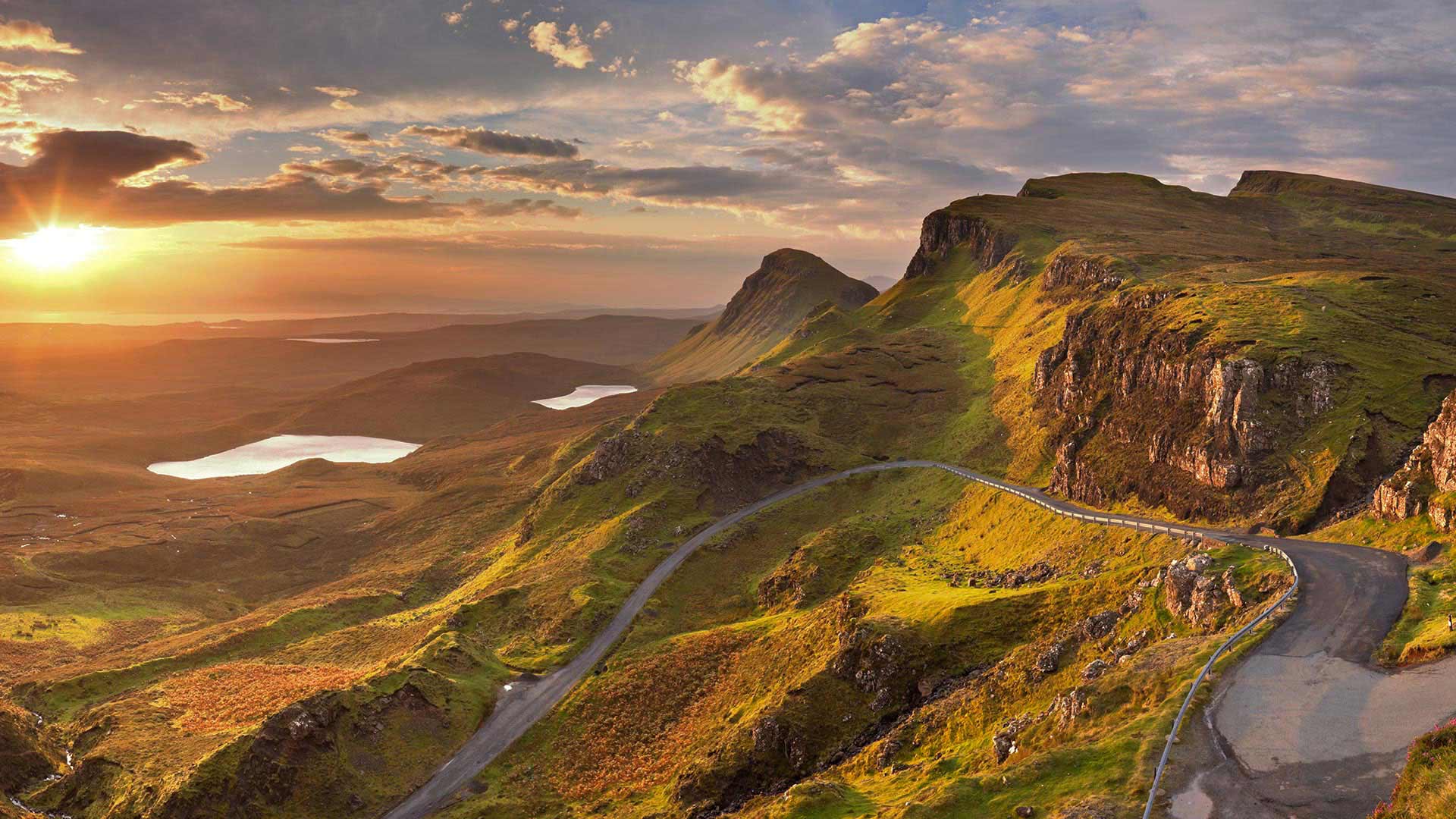
What is the rainy season in Scotland?
Scotland is renowned for being a wet country, but its rainfall depends highly on the region. The east coast gets nearly four times less rain than the western Highlands. The west coast is commonly wetter but warmer, while the east coast has more sunshine hours but is generally cooler.
Summer can be rainy in Scotland, but generally speaking, the rainiest season in Scotland is during the winter. Between mid-October and and late March you can expect wetter and colder weather. January is the rainiest month of the year.
What is the best time of year to avoid midges in Scotland?
Midges are tiny insects that bite, found especially in the Highlands and islands of Scotland. They can be encountered throughout the summer, but visit during the shoulder season, in April, May , or September to avoid midges during outdoor activities.
July and August is usually considered the worst period for midges in Scotland.
They are at their most active in the early mornings and evenings. You can try to avoid being outside in the countryside at those times of the day. Or we recommend carrying midges repellent the repellent.
You can find out more about the weather in Scotland with our handy weather guide .
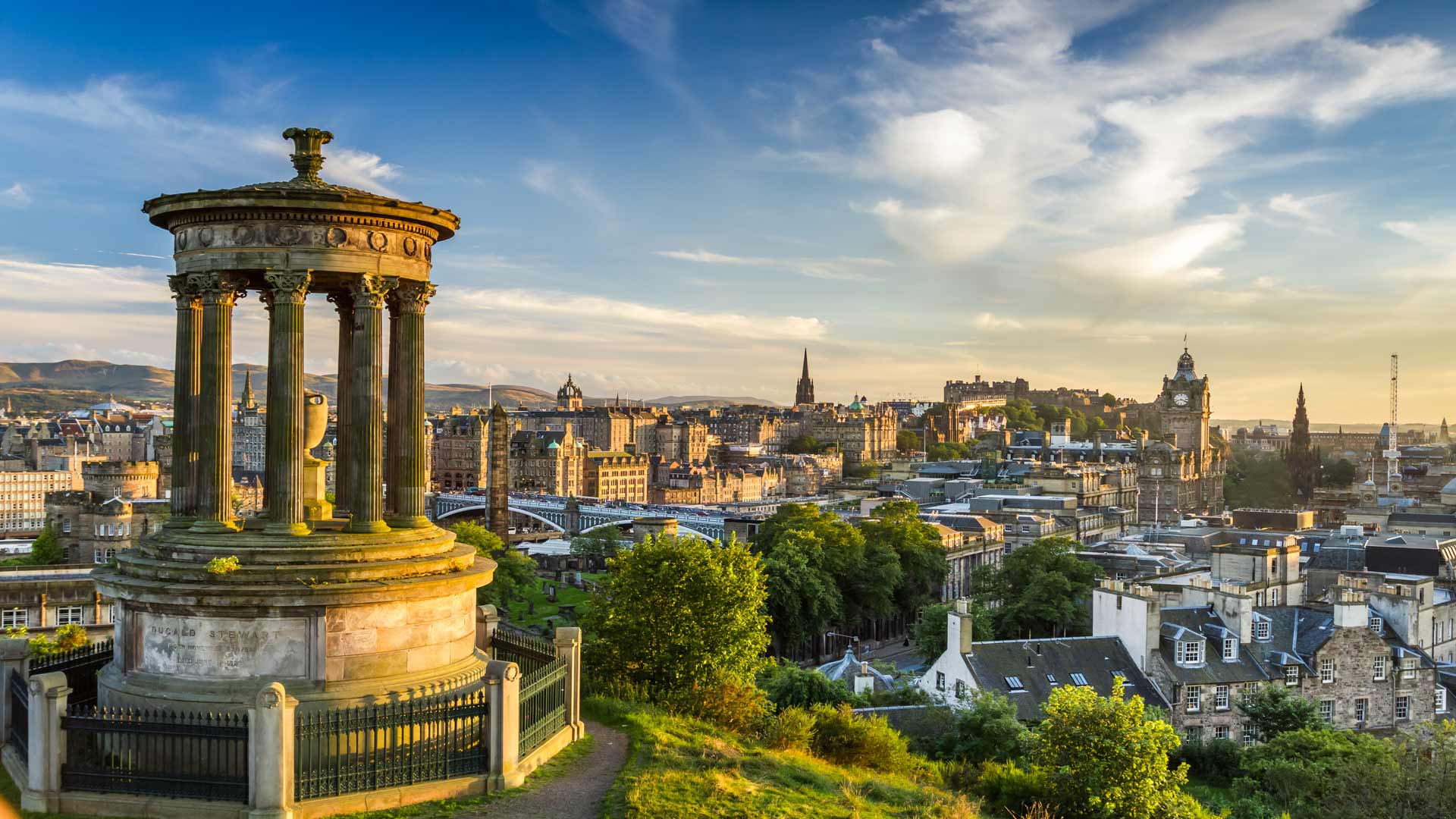
When is the best month to visit Scotland?
Still not sure which month or season is best to explore Scotland? Good news, we’ve written the pros and cons for the summer and winter seasons below. It’ll also be useful if you already have a fixed holiday and coming to Scotland at a particular time of the year, as this may help you know what to expect.
Summer in Scotland is from June to August, which also marks the peak tourism season. It attracts the most visitors because the temperatures are usually higher with averages of 15-17°C (59-63°F). There are also more daylight hours, and countless activities to do and festivals to entertain those interested.
- Explore Scotland in summer with one of these exciting itineraries
- Related : Scotland in Summer - What to Do & Where to Go
The months between April and September are ideal for a driving tour of Scotland as the longer daylight hours give you more time for sightseeing and for using country roads.
You may find this is the easiest time for island hopping as well, as some ferry lines are closed or less frequent during the winter. In the summer they are also less likely to be cancelled due to weather conditions.
Finally, top attractions are also more likely to be open (with longer visiting hours) during the April to September (or even October) period.
On the flipside, the main thing you should consider when visiting Scotland in summer is that you may find it a bit busy.
August in particular attracts the most crowds of the whole year, especially at key tourist attractions such as Edinburgh and its international festivals, as well as the Isle of Skye and the Highlands.
In the Highlands and islands, you may also expect a high likelihood of midges (small flying insects that bite) which can be bothersome. For that reason, we recommend bringing some midge repellent.
While summer is by far the most popular with visitors, the shoulder months of April, May and September are also ideal for those who prefer a quieter holiday. They usually attract less crowds but still feature nice weather.
- Do you dream of a Scottish road trip but don't fancy driving yourself? Consider a small group tour in a comfy minibus with 16 travellers max
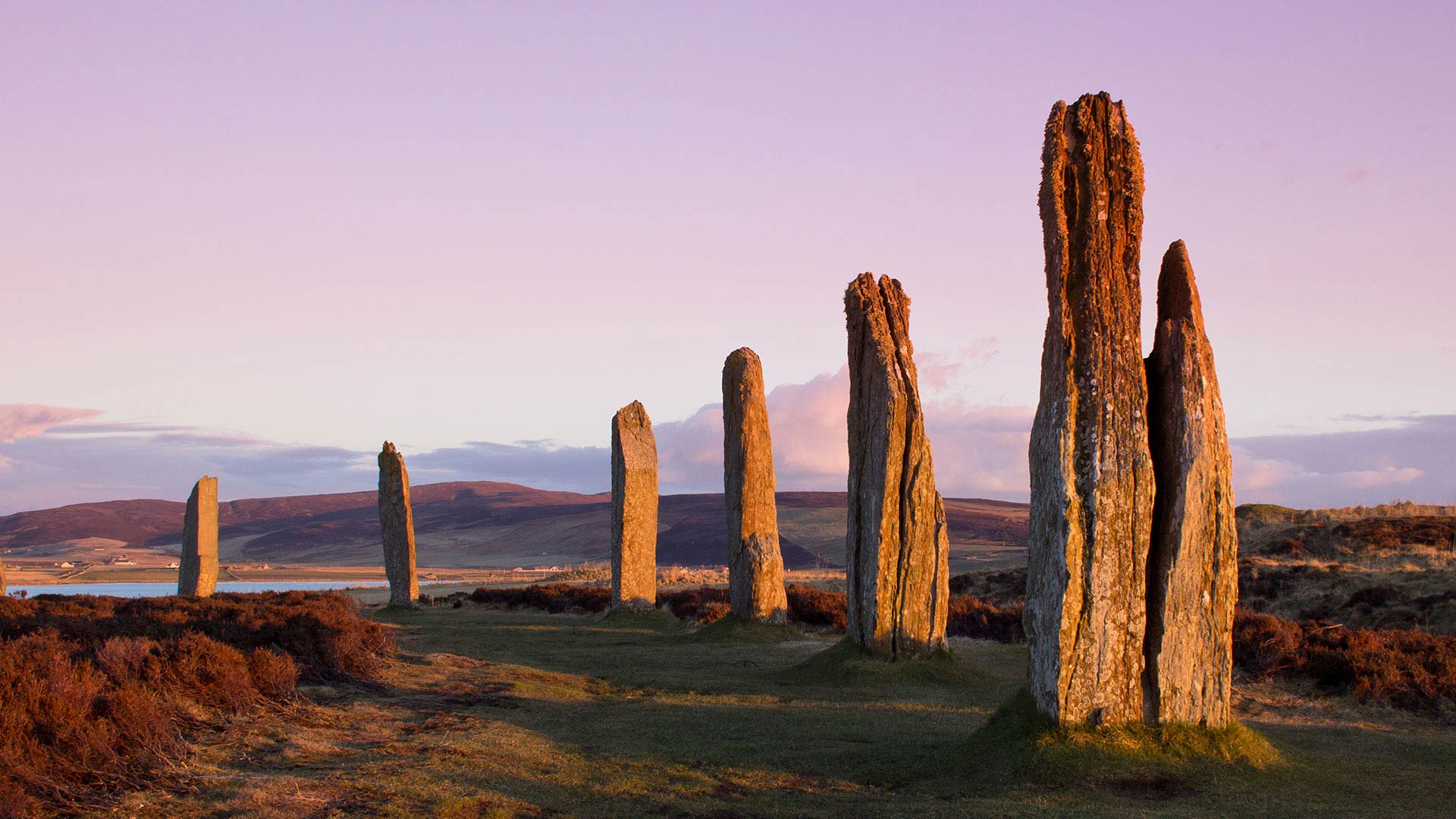
Winter and the ‘off-season' is from October until March. January and February are often the coldest month, with average temperature inching around 5°C (41°F).
Winter is therefore quite mild in Scotland (for a northern country) with conditions being more changeable than in summer, with more wind, more rain and sometimes even snow.
Does it snow in Scotland in winter?
While it rarely snows in the Scottish cities (on average only a handful of days a year), it is a normal occurrence in the mountains during the winter. It is especially likely between January and March .
While we’ve said that Scotland is a year-round destination, there are less activities available at this time of year. Top attractions are closed or have shorter opening hours, island ferries are less frequent, and there is less daylight to take advantage of for sightseeing or driving.
- Browse our winter tours of Scotland for a frosty and enchanting experience
- Related : Scotland in Winter - What to Do & Where to Go
These conditions don’t stop the many visitors that come to Scotland every winter to see its gorgeous and dramatic landscapes. It’s still perfect if you want to experience smaller crowds and have a different perspective on famous attractions, such as Loch Ness with snowy hills in the background.
One of my favourite winter activities is to venture up into the Cairngorms National Park to visit the Cairngorm Reindeer Herd. You have the opportunity to hike up to the hill top where you can walk amongst these beautiful creatures and enjoy the feeling of their soft velvet noses on your hands if you wish to have a go at hand feeding them. – Annie Pepperell, Scotland Travel Consultant
If you want to come to Scotland for a road trip, please be aware that it is definitely possible in the winter. But as the weather conditions are changeable, this can often make the roads and driving conditions unpredictable and difficult, especially in the Highlands and other remote parts of the country.
- For a next-level travel experience, ask for a private tour of Scotland and let an experienced driver-guide take you around Scotland’s top sights in comfort and style
As we say in the Nordic countries, "there is no bad weather, only bad clothing," so make sure to dress properly if you want to come visit Scotland during the winter months. To help you, check out our handy packing guide .
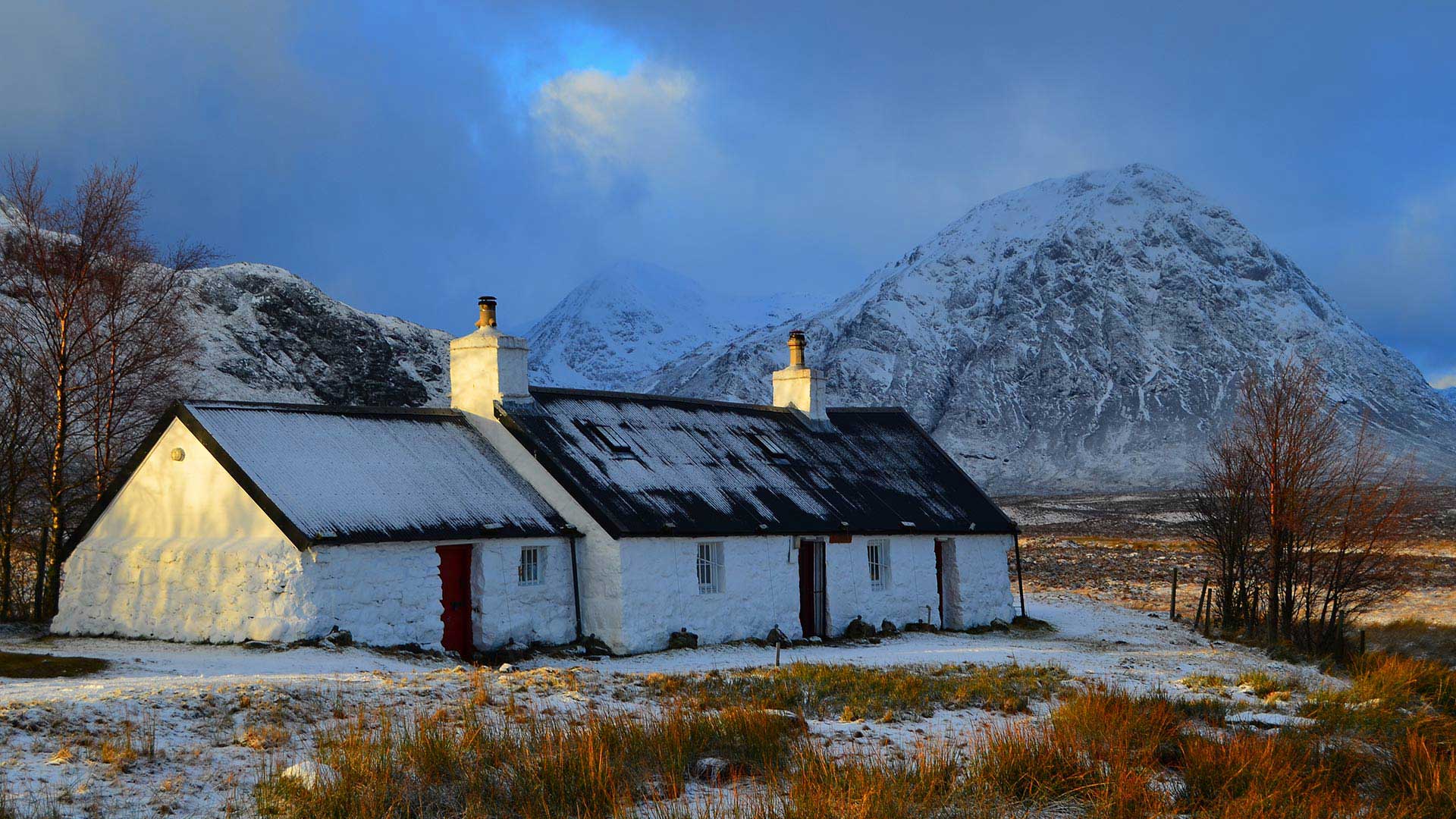
When is best to explore Scotland depending on your needs?
As we’ve mentioned before, there is no bad time to visit Scotland, as its beautiful all year long and there is plenty to do around the country.
Below we’ve highlighted the most requested interests and activities and when is the best time to go to Scotland for each one of them. Look up the one you’d love to experience while in Scotland:
Best time to visit Edinburgh
Edinburgh is a buzzing capital all year long. It rings in the new year with loud festivities and carries on with effervescence well into the spring and summer.
Scotland’s capital is ideal for a city break during any season. Museums are open all year long, and you’ll be able to enjoy some shopping and delicious local meals at all time of year too.
Day tours from Edinburgh are also available during all the months. Visit a nearby distillery or go off on a quick adventure into the Highlands. You may find there is more availability in the shoulder and winter months. For a more exclusive affair, this is when you want to book your tour.
To take part in the energy of the summer festivals, visit in August. Although you may find you have to book in advance for accommodation, flights, and even restaurants reservations.
If it's cosy vibes and festive markets you're after, make sure to head to Edinburgh to celebrate Christmas in Scotland . From November into January, the city will be decked out in twinkling lights and you could soak up views of the wintry countryside on a day trip from the capital.
- Related: Cool facts about Scotland
Best time for touring the Scottish Highlands
You may be wondering when is the best time to visit Scotland’s Highlands? This gorgeous region is one of the most popular locations in the country. You will soon find out why when you visit the Highlands yourself.
It has it all. From sheer mountain sides, to waterfalls, romantic forested areas, and Scottish beaches that look like they're straight out of the Caribbean. And it doesn’t stop there! Not only will you want to take it all in from your car (or bus) window, but you’ll want to be immersed in it.
The summer is a great time to take part in outdoor activities to experience the best that the Scottish Highlands have to offer. Join a boat tour along the grand lochs , go hiking to the tall peaks of the region, or dip your feet into the cold water for some wild swimming.
The landscape of Highland Perthshire is truly at its best in autumn. The foliage is changing colour and you’ll get to feel the crisp air as you go for nature walks.
In winter, as the weather doesn’t drop too much, you’ll still be able to take part in some fun. In the Highlands, especially up the mountains, snow fall is more common and makes the landscape even more enchanting. You could also try skiing at one of the resorts.
- To see the beauty of this region, browse these tours of the Scottish Highlands
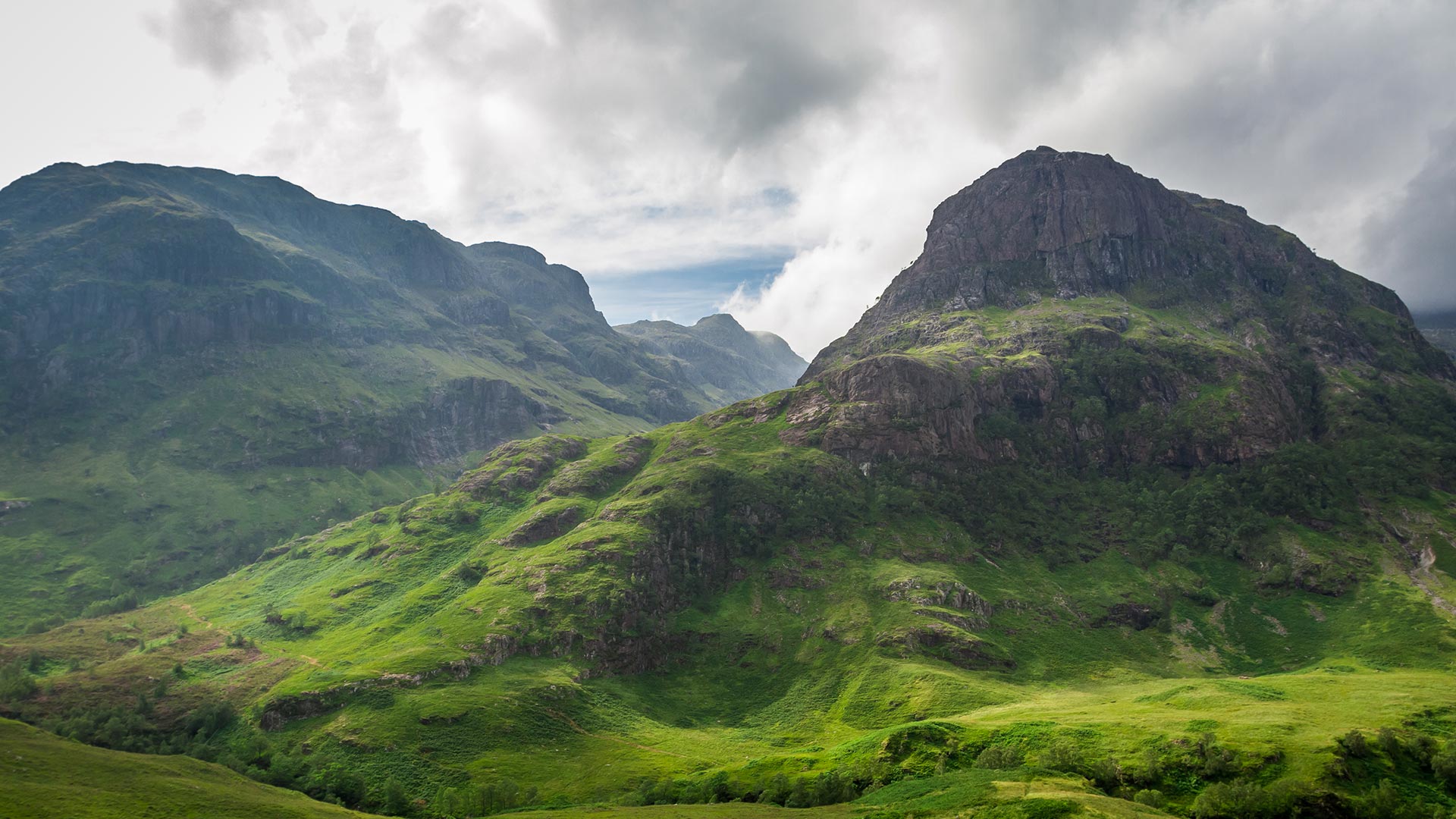
Best time to visit Scotland for wildlife watching
Scotland is perfect for those who love keeping an eye out for wildlife! With its fabulous big five including the red squirrel, red deer, golden eagle, otter and harbour seal, Scotland’s wildlife can be spotted in the sky, the harbours, the beach, the mountains and even from the road.
We’ve put together a few of the most spotted wildlife below, how many will you see during your trip?
Spring is the best time to try to spot puffins off the west coast. These lovely birds are often spotted along the Isle of Mull and the Isle of Staffa, but also up north in the Shetland isles.
Scotland has a large population of red deer, which can be spotted anywhere, even near cities and in people’s gardens. The best place to spot them though will be in the moorlands, such as Rannoch Moor.
These wonderful creatures can be spotted all year long, but are especially active in the morning and in the evening. The best time of the year to see stags (the male deer with antlers) is during autumn, which is their breeding season.
- See the wildlife, castles and iconic highlights on one of our best-selling tours around Scotland
Golden eagle
If you’re lucky and keep an eye out, you may be able to spot a few birds of prey, especially the majestic golden eagle, soaring high above. They are most often found flying over open moors and mountains. The best time to see them may be in early spring.
Red squirrel
Smaller than your average grey squirrel, red squirrels are a special spot. You can find them all year round in the forested areas of the country, including Fife, Perthshire and the Highlands.
This other big five animal is found hunting in water and breeding all year round, especially near the Isle of Skye . As they are quite elusive, look out for them in the early morning or late evening when they are most active.
Scotland’s seas are also populated with two kinds of whales. While rarely spotted, orca (or killer whale) pods can be seen during the summer swimming in the north of Scotland, around the Shetland and Orkney islands.
Minke whales can also be spotted around Scotland between May and October . As they feed in shallow water, you may be able to spot them from the beach in Wester Ross (in Scotland’s northern mainland), Isle of Skye and Isle of Mull.
Sharks in Scotland? Well the waters around Scotland attract the species called basking sharks. Often called ‘gentle giants’ they are a non-threatening type of shark that feeds on plankton. It is the largest fish found in Scotland and the rest of the UK and second biggest shark in the world. They are mostly found along Scotland’s west coast and, while elusive, it is possible to spot them in the summer.
Dolphins may conjure up images of the Caribbean, but you may well be able to spot them in Scotland too! They can often be spotted at low tide (more precisely 1 hour after low tide, when it turns into a rising tide) in the Moray Firth, off Chanonry Point on the Black isle, near Inverness.
The dolphins that swim up the Moray Firth are often hunting for salmon, so the best time of the year to see them would be at the height of salmon migration in late July. They can however also be spotted in spring and autumn.
These seabirds migrate back to Scotland in early spring to raise their babies. From that time of year, you may be able to spot them well into the summer. Europe’s largest colony of gannet is also located right near Edinburgh, on Bass Rock in the Firth of Forth.
Grey seals usually give birth between late September and late November and stay ashore until they are ready to head into the sea by themselves. This means you may be able to see seal pups around Scotland during this time, especially on the west coast.
Bonus: Highland cow
While these aren’t wild, many visitors to Scotland will want to see a highland cow during their trip. As they are usually kept in fields, they can be spotted most often between April and October. If you join a guided tour, chances are the guide will stop to allow you some time to take some photos with these adorable hairy cows!
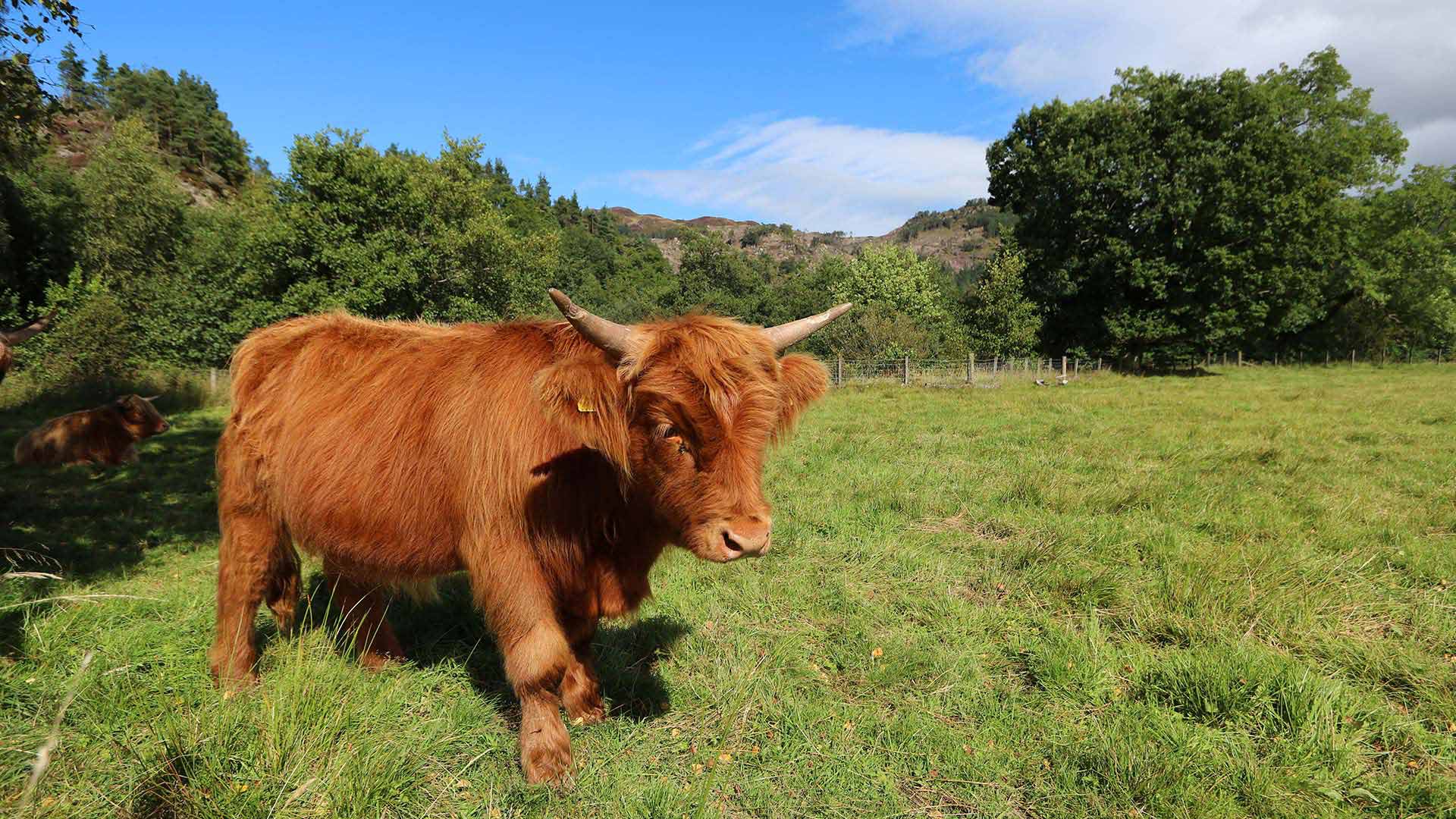
Best time in Scotland for photographers
Photographers will be happy all year long in Scotland with the dramatic clouds or in the windy sunlight, as, we can let you in on a secret, it is really that photogenic!
- Related: Look up our photographer's guide to Scotland for local tips
In winter, visitors who want to take some good blue and golden hour photography will be spoiled as they happen during the day. This means no need to wake up early to take advantage of it!
For example, golden hour in mid-January starts around 9:30am and then 4pm in Edinburgh. Blue hour would then be around 7:15am until 8 followed by night blue hour between 4:40 and 5:30pm.
While the long days of summer will make taking advantage of blue and golden hours difficult as they happen in the middle of the night, it will give you more daylight to enjoy the sights and take photographs of historic monuments or rugged landscapes.
Winter is one of the best times to visit Scotland if you are a keen landscape photographer. There a few places where rugged mountains are so close to the sea, and the stark contrast between the stunning coastline dotted with beaches and the snow-capped peaks, especially along the west coast and on the Isle of Skye, can be great to capture. – Christoph Glauche, Scotland Travel Consultant
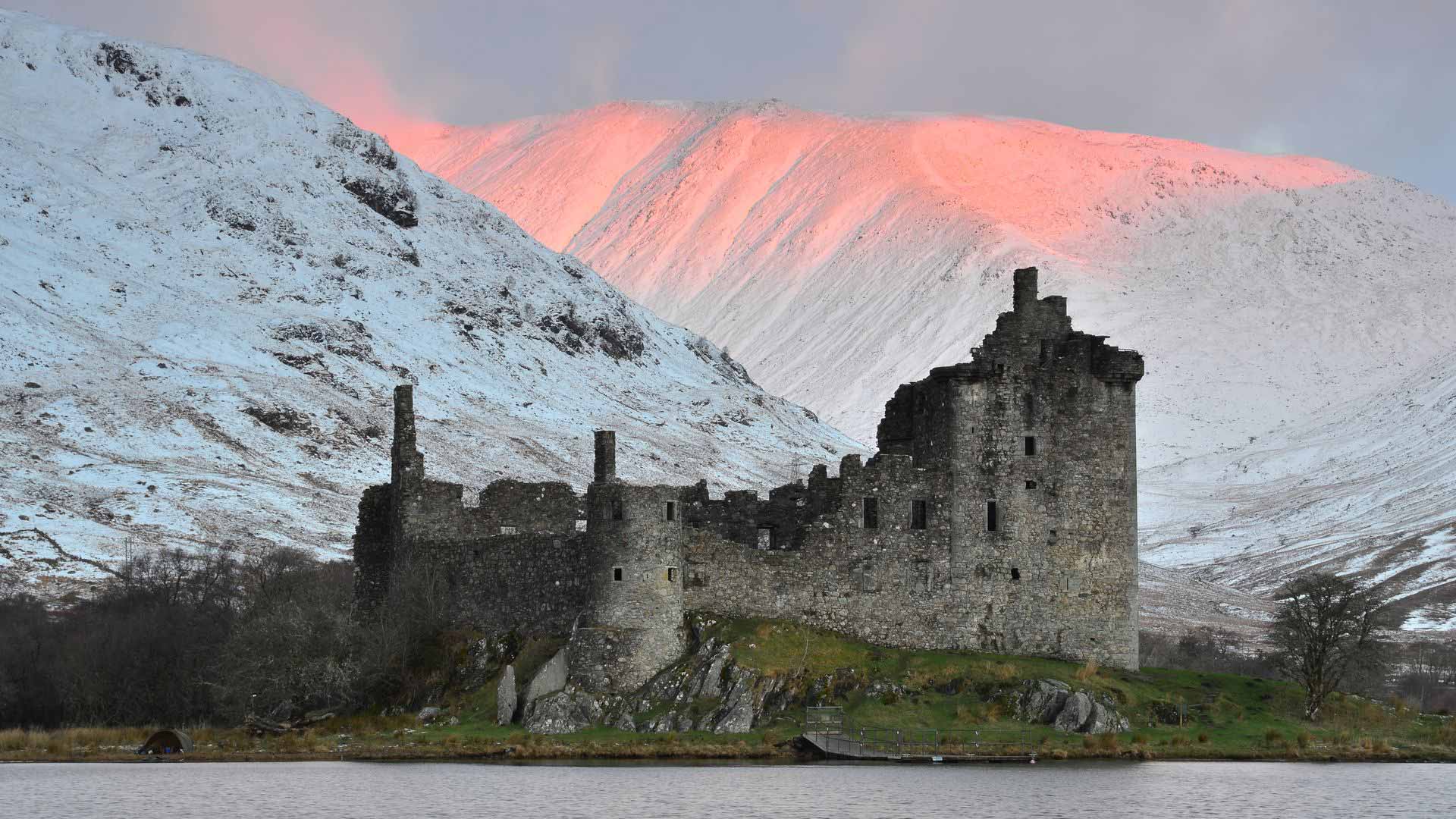
Best time to visit Scotland as a family
Coming to Scotland with your family may depend on school or work holidays, or what you’re looking for as an experience. Do you want to see the northern lights or experience the midnight sun? Look up our above categories to get a better idea.
For families, we would usually recommend a slow-paced summer tour, where you can stop more than one night at the same location. It gives you more flexibility and you can take advantage of the longer daylight hours.
The summer usually has more kid-friendly activities available. This includes boat tours, Highland games or pretend jousting games, and interactive activities where kids can dress up and play. Something to interest all young adventurers!
We would advise to also keep in mind, while you're planning your family trip to Scotland, that young visitors may not be allowed into whisky distilleries for tours. The minimum age for drinking in Scotland is 18.
Best time of year for a Scotland honeymoon
The perfect timing for your honeymoon will depend on when your wedding is of course. But also if you want to head off right away or wait until you’ve had time to plan and save for a dream trip!
And if you’ve always dreamed of a honeymoon in Scotland, the best time to come, may also depend on what you want out of it. Only you can answer that question, but we’re here to help you plan!
Do you want to go hike up the majestic Quiraing on Skye? Summer.
Do you want to visit the remote Shetland, Orkney or Lewis and Harris islands? Summer.
Or maybe your goal is to see the top highlights without crowds, in peace? Winter.
We believe that travelling in the winter time can be very romantic! There are fewer crowds in Scotland at that time of year. This means there will not be as many visitors at each highlight, like Edinburgh Castle or the Isle of Skye, giving you more time together in a more relaxed context.
Finally, our travel consultants would recommend spending more than one night in the locations you’re visiting, to give you the chance of a leisurely stay with your partner.
- Have a romantic trip around Scotland with these honeymoon and romance packages
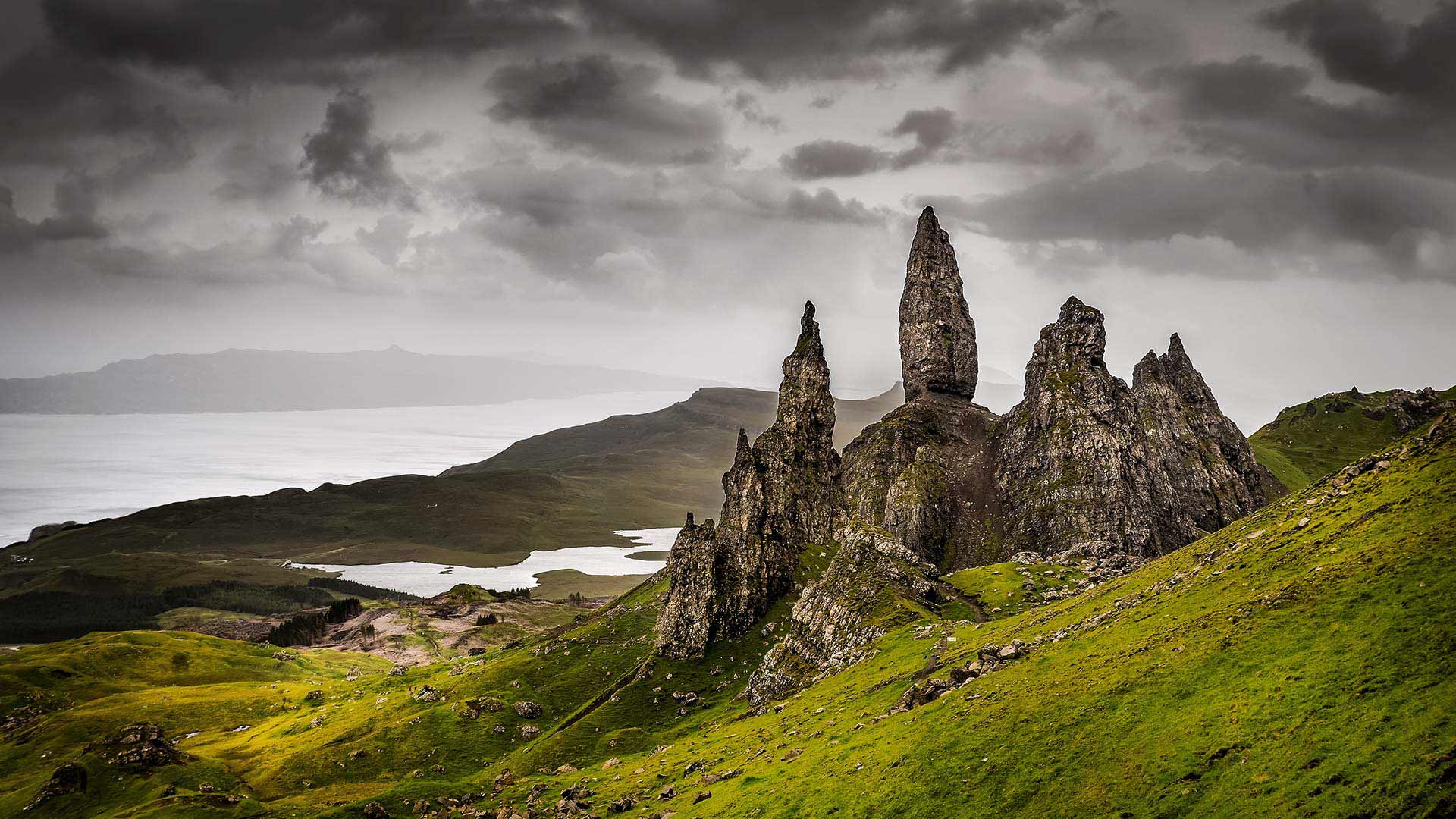
Best time for island hopping in Scotland
Did you know that Scotland has almost 800 islands? Many of which are located in clusters, such as Orkney islands and Shetland Islands, and on the various lochs of the country, such as Loch Lomond .
The islands all offer different landscapes and a variety of attractions and sites. The Shetland islands bring to life the Viking culture of the olden days. Visitors flock to the Orkney islands to visit the UNESCO listed Heart of Neolithic Orkney . You can discover Gaelic culture on Lewis and Harris.
The Isle of Skye however is by far the most popular and most accessible. Visitors can drive to the island all year long via the Skye bridge, which links the island to the mainland.
We would recommend the April to October period for those who really want to see Scotland’s rugged and stunning islands.
As you’ll have read throughout this post, Scotland is beautiful and accessible during the winter. But the low amount of daylight hours will offer you less time to take advantage of their beauty and make days of exploration shorter.
There are also less ferry connections throughout the winter, the seas are rougher, and ferries can be cancelled due to bad weather.
I would usually recommend the months of the summer, between May and September, as there is warmer weather, and the ferry crossings are available more often and tend to be more pleasant too! My personal favourite is Orkney, where you can explore Skara Brae, a stone-built Neolithic settlement, before watching a romantic sunset at Yesnaby Cliffs. - Agne Dobrovolskyte, Scotland Travel Consultant
- Explore one, two, or even more of the Scottish isles with one of these fantastic itineraries
Best time to visit Scotland for castles and history enthusiasts
Scotland, with its rich royal and clan history, is full of castles , estates and mansions. You could spend your entire holiday in Scotland visiting, learning and discovering more about clans and their homes.
If you want to do the castle trail, and see many of these historical sites, you may want to come between spring and autumn.
This is because some castles close completely to visitors during the winter, some have reduced hours, and some are only opened during certain days (usually weekends). Most places are also closed during the Christmas and New Year’s holidays.
For example, Blair Castle in Perthshire is closed between November and March inclusively. From October to March, Crathes Castle and Drum Castle are only opened over the weekend days.
One of Scotland’s most famous castle, Balmoral Castle, the Scottish home to the British Royal Family, is only opened to the public from April to July.
Perhaps you're keen to also discover history and retrace the steps of popular fictional characters, such as Jamie and Claire from Outlander . The historical filming locations also operate on reduced hours, such as Doune Castle and Linlithgow Palace, or shut completely during the low season, such as Hopetoun House.
- Walk where kings, queens and clanlords once did on these tours with Scottish castles and palaces
- Witness the inspiring real-life settings and filming locations of Outlander with these Outlander tour packages
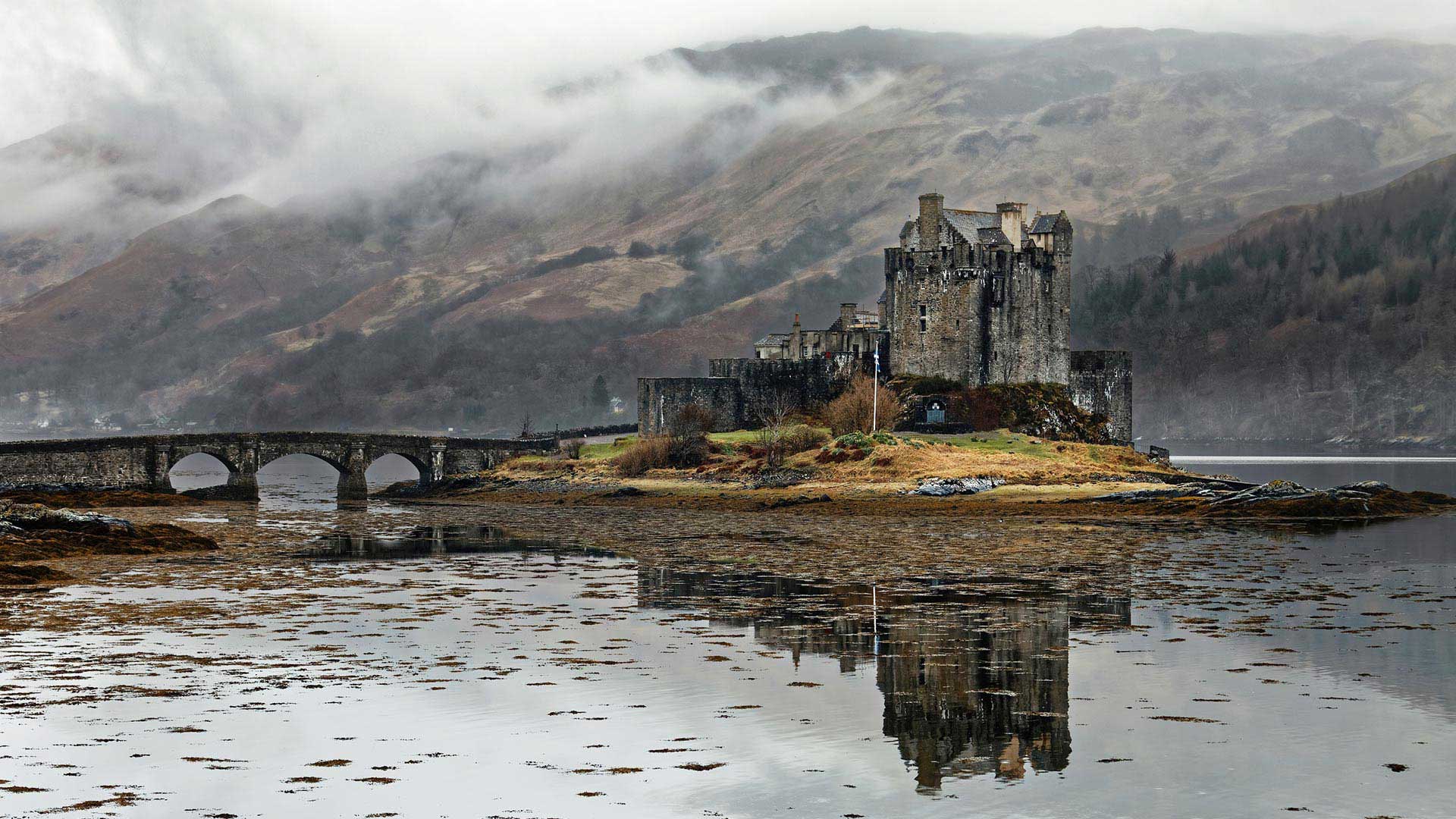
Best time of year to drive Scotland's North Coast 500
The North Coast 500 is the (mostly) coastal road that circles the northernmost part of Scotland’s mainland . It has become an increasingly popular destination, with visitors coming to Scotland just to experience it. As it comprises 500 miles, it takes, on average, between 5-8 days to complete it comfortably.
Whether you want to take on the full road, or drive parts of it, we recommend the shoulder months, of April, May and September, for the best experience.
This is because, while in the winter it is possible to make the drive, there are less activities, sights, accommodation, and daylight hours to take advantage of during the low season.
Roads may also be closed due to bad weather, which is more likely during the winter months. If you do plan on coming during this time, make sure to be prepared and have a flexible schedule.
In contrast, the summer brings about the warmer weather, plenty to see and do, and long daylight hours to take advantage of for long driving days. It will of course coincide with the busiest time along the road, especially as the NC500’s popularity has soared in the last few years.
The late spring and early autumn should usually involve nice weather, longer daylight hours than the winter, and less crowds than in the summer.
- Explore self-drive tours for a road trip to remember in Scotland
Best time of year to visit Scotland for whisky lovers
Fans of whisky, or ‘water of life’ as they call it here, will not be disappointed in Scotland! There are over 100 distilleries dotted around the country, some in the cities, countryside and remote areas. There are five whisky regions, with distinct tastes, including: Speyside, Highlands, Lowlands, Islay, and Campbeltown.
The summer (usually between April and September) would be the best period as most distilleries are open daily. In the winter months, distilleries usually have reduced availability. This includes reduced hours and tours, but also only opening for certain days of the week.
May is the whisky month in Scotland, with World Whisky Day on the 18 th May. With the Spirit of Speyside festival taking place the first week of the month, and the Feis Ile – the Islay Whisky Festival – at the end of the month, there are plenty of events to learn more about our whisky production and, of course, sample some of our water of life – uisge beatha . – Sarah MacLachlan, Scotland Travel Consultant
- Explore all our whisky tours with options to visit distilleries
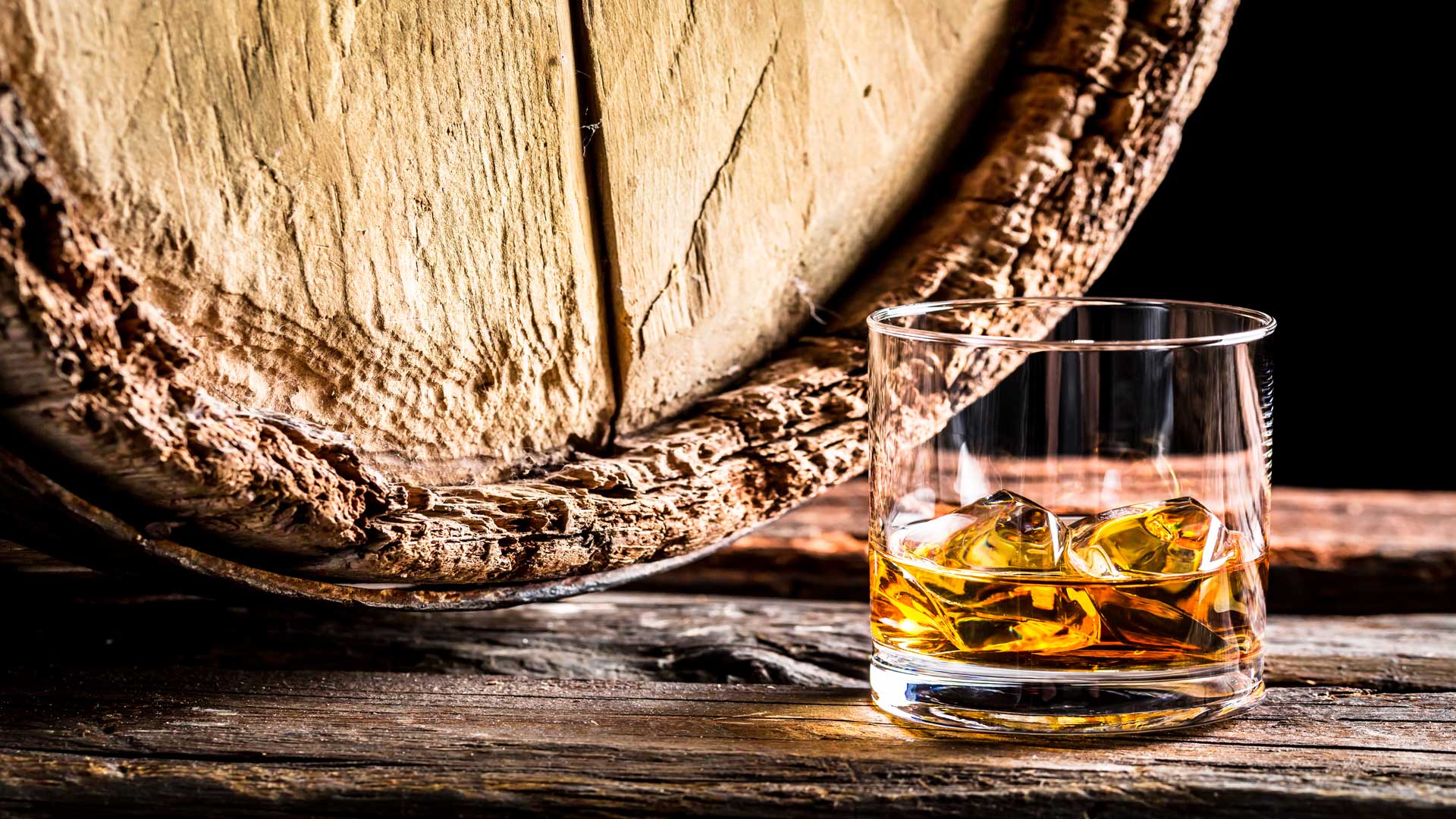
Best time to enjoy northern lights in Scotland
Aurora borealis are one of the most wonderful natural phenomena to witness and while visitors rarely come to Scotland for this, it is possible to see them here.
Scotland has some northern lights activity during the winter months, especially in the northern parts of the country. The sky is often too cloudy to be able to witness them.
However in late autumn and early winter, if the weather is on your side and northern lights activity is high, you may just be able to see them if you’re away from light pollution.
We recommend downloading and checking an aurora forecast app, and keeping an eye out especially in the northern isles like Shetland, Orkney, Lewis and Harris.
Best time to visit Scotland for hikers
Hiking in Scotland is a spectacular affair that will truly be worth the physical effort! From smaller walks to full mountain hikes, there is something for everyone and for every level.
The trails are stunning, whether on local hills (like Arthur’s Seat in Edinburgh) or the famous ‘munros’ (mountains over 3,000 feet), including the UK’s highest mountain Ben Nevis near Fort William.
The best time to come enjoy hill or mountains walks in Scotland is the April to September period. During these summer and shoulder season months, the trails are more accessible and there is more daylight to take full advantage of them and Scotland’s natural beauty.
In the spring, you may find that the tops of the highest mountains are still covered in snow. The weather is also very changeable at this time, especially while going up in altitude. Therefore we recommend bringing warm layers, being careful not to put yourself in danger, and being ready for the different weather conditions.
The summer of course brings the best weather of the year, but this doesn’t mean you shouldn’t be ready for all seasons in one day (or one hike!). We recommend bringing lighter layers as well as warmer layers to make sure you’re safe and comfortable.
In the summer, if the weather is in your favour and ends up sunny and warm, make sure to bring a hat and plenty of water to keep hydrated!
In the autumn, make sure to be ready for slightly cooler temperatures and changing conditions, with more rain and wind. This is a great time to go for hikes or hill walks to witness and enjoy the beautiful autumn foliage.
- To go on hikes and other adventures off the beaten path, check out these tours
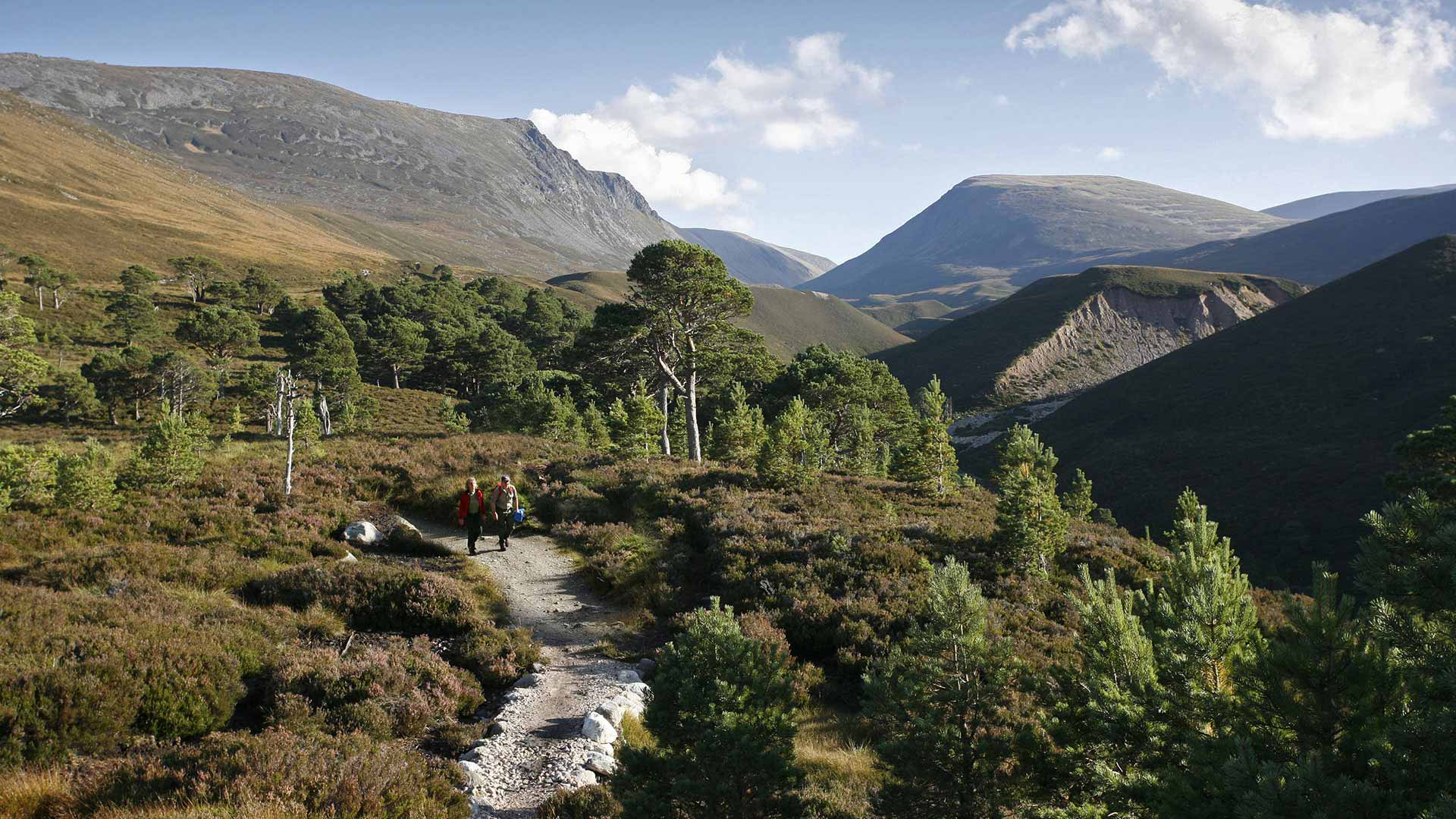
Best time of year for golfers to Scotland
As Scotland is a popular destination for golfers, it’s no wonder people flock every year from across the globe for golfing holidays. Or you may want to at least try your hand at a round while you're touring the country.
All year long, in any weather, you can see determined golfers walking from hole to hole, clubs in hand.
Those who aren’t bothered by the weather may want to visit during the cold and dark winter months. However, there are limited daylight hours to take advantage of the course, and the weather is cold, wet and windy.
We recommend the autumn or springtime, when the weather is more stable, the days become longer, and the tourists and fellow golfers haven’t flocked to the courses yet. You may still need to bring wind and waterproof layers along with you though!
The summer of course brings the best weather conditions for golfing, however, as everyone has this in mind, it means bigger crowds. On some golf courses, the queues to get slots for the day start as early at 5am, especially in St Andrews , famous for being the home of golf.
Best time of year for events and festivals in Scotland
The Scots love a good party and Scotland is a great place to take part in or attend events and festivals. There is a bit of everything for everyone, with festivals and events on all kinds of subject such as film, art, theatre, military, literature, Scottish history and culture.
Hogmanay kicks off the start of the year in style! If you want to experience one of the biggest street parties in Scotland, attend the Edinburgh Hogmanay on New Year’s Eve and party until the wee hours of the morning.
If you don’t enjoy crowded events, fear not! This is a big event marked all around Scotland, with most towns and cities hosting their own Hogmanay parties.
- Celebrate the festive season on one of these Scotland multi-day tours
- Related : Y our guide to Hogmanay – New Year's in Scotland
In January, many places in Scotland celebrate Burns Night, in honour of national poet Robert Burns . This is marked on the 25th January, although celebrations are held in and around that week depending on the location. Dinners are organised and usually involve whisky and haggis, toasts and ceilidh dancing.
You may already know that August is by far the most event and festival filled month of the year! This is especially true in Edinburgh, which gets artists, tourists and locals flocking to the city centre for the many festivals including:
- Edinburgh Fringe Festival
- Edinburgh International Festival
- Edinburgh International Book Festival
- Edinburgh Military Tattoo
Throughout the summer, there are also Highland games held in many towns and cities around the country. This is a traditional festival, including highland dancing, pipe bands, and athletic events such as the caber toss and hammer throw.
The world’s largest are at the Cowal Highland Gathering held in Dunoon on the west coast at the end of August every year.
In October and November , the autumnal woodlands around Pitlochry are home to the Enchanted Forest, a light and sound show that attracts plenty of visitors.
On the 30th November every year, Scotland celebrates its national day, St Andrew’s Day, named after the patron saint of Scotland . You can find dinners, dances and events held in his honour all around the country.
What is the best time to visit Ireland and Scotland?
For a true Celtic adventure, you may want to combine a tour of Ireland and Scotland in one incredible trip. Imagine spending time visiting the castles and rugged hills of Scotland before exploring the coastal beauty of Ireland.
You could visit ancient castles, listen to live traditional music, and taste the local whisky (or whiskey). All while learning about what connects both countries.
The best time for a joint adventure is between the spring and autumn seasons. While there are many benefits to visiting in winter, you’ll find a more in-depth and complete experience during the summer.
For example, in Scotland some ferries don’t run during the winter. If you want to discover more of the isles, the shoulder and peak months are ideal for this. In both countries, you’ll want to walk through the countryside, visit popular castles and experience the white sand beaches.
In summer, you’re more likely to experience better weather for all these activities.
- Browse these tours of both Scotland and Ireland for an epic trip
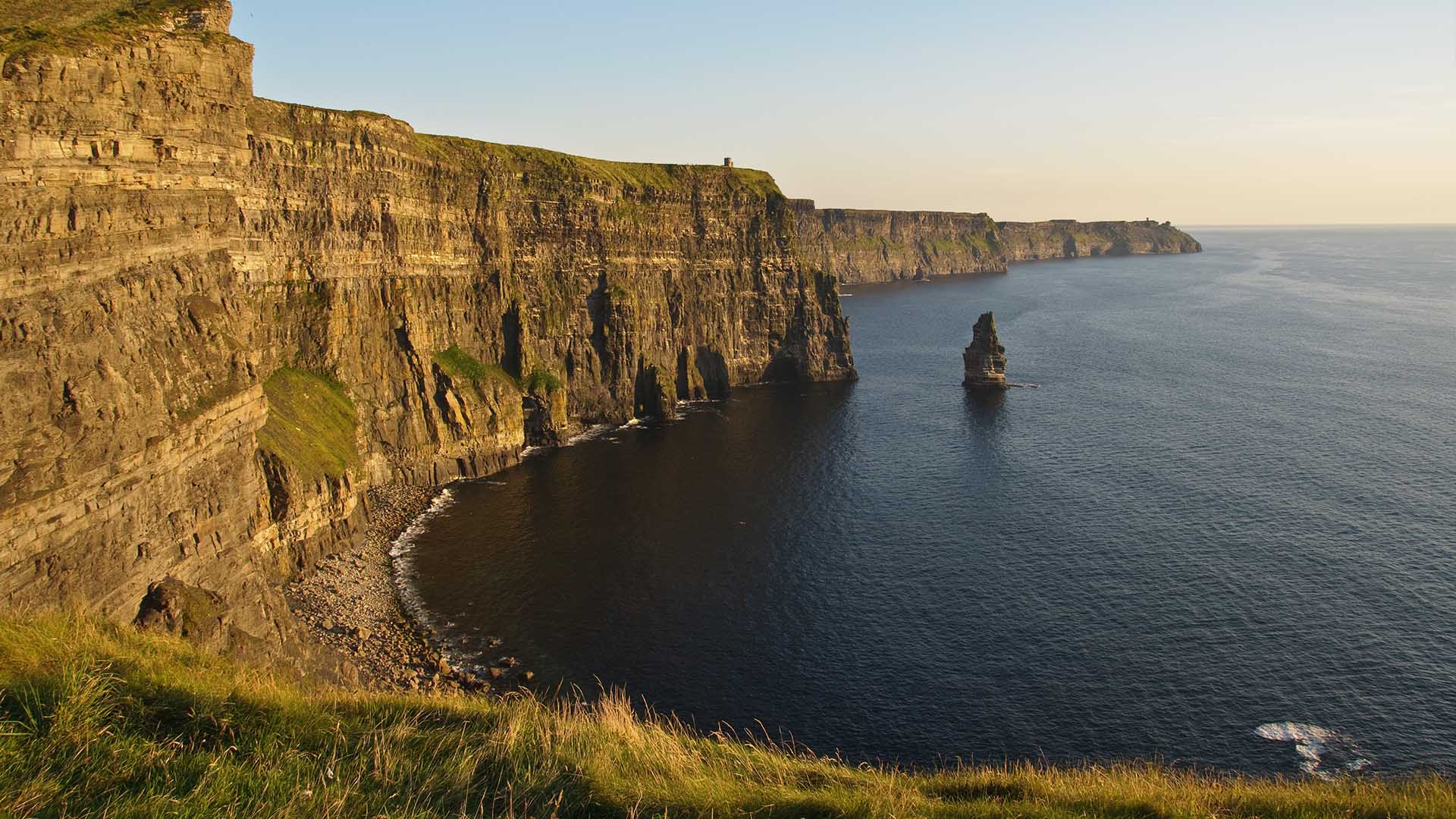
In conclusion, there is no bad time or best time to visit Scotland. It all depends on what you want to take from your trip to this beautiful country. We hope you found this guide helpful to plan your upcoming tour.
If you're ready to make your dream trip a reality, browse our itineraries or contact our travel consultants . Our Scotland team is based in Edinburgh and will use their insider knowledge to help you craft the best tour, tailored to your interests.

Camila grew up between the French Canadian and Chilean cultures, before moving to Scotland in 2012. When she’s not travelling or writing about travels, Camila loves to read, run, and puzzle. Her favourite destinations have been Reykjavík, Copenhagen, Estonia and Cape Town.
Find Camila on LinkedIn .
Getting there
We'd love to give you the same amazing travel experiences as you read about in our blog! To visit the destinations and attractions mentioned in this post - and to discover a few new highlights along the way - check out these recommended Nordic Visitor tours.
CLASSIC SCOTLAND
- USD ($)
- CAD ($)
- AUD ($)
WONDERS OF SCOTLAND
Highlights of scotland, related posts, visiting the uk: travel tips from a local expert.
Blogs , In Focus , Scotland , Road Trips , Guides
10 Cool Scottish Facts
Best time to visit ireland: your complete guide, scotland in winter: what to do and where to go.
Change location
- UK / International
- Call toll-free from 9am EDT 617-223-4521 617-223-4752 or
- REQUEST A QUOTE
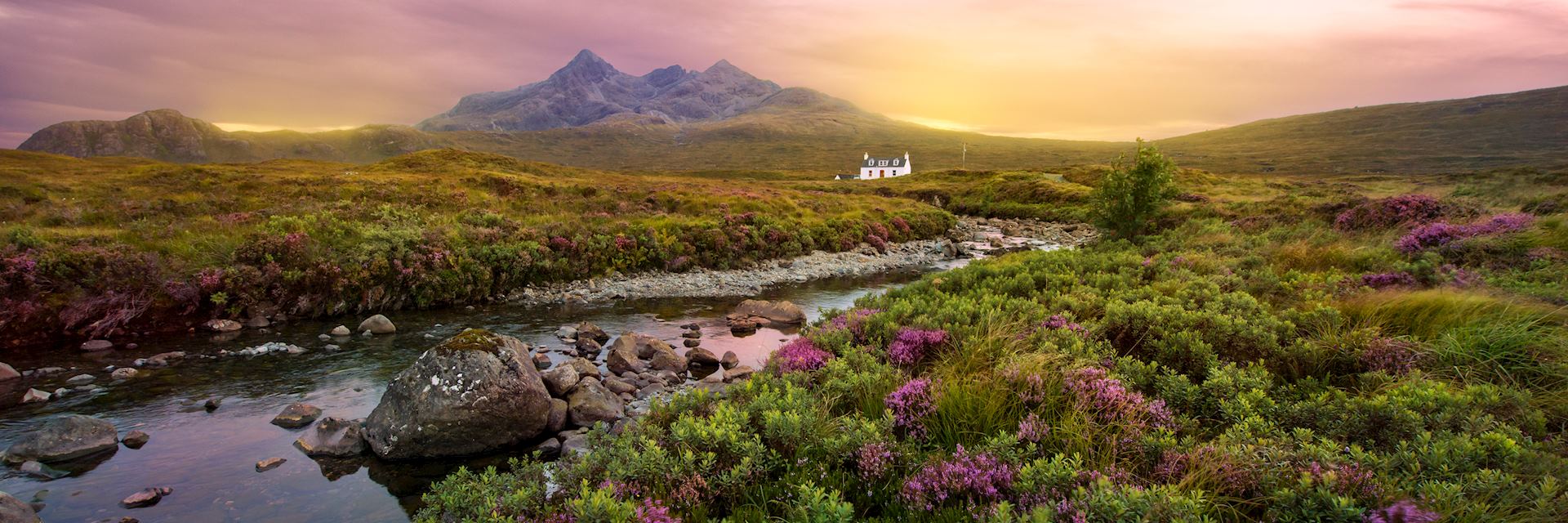
When is the best time to visit Scotland?
- The Highlands
- Month-by-month
The best time to visit Scotland is during spring (late March to May) and fall (September to November).
Temperatures are warmer by spring, with averages of 43°F to 59°F, although there will still be snow in the mountains of the Highlands and the Cairngorms. The summer months (June through August) are the warmest of the year, with extensive daylight hours in July and August the further north you go.
The crowds begin to disperse from late October. Early to mid-November can be a wonderful time to see Scotland’s glorious fall foliage. However, many sites close for winter from mid-October. Snowy conditions in December through to February can make travel tricky, although you’ll be rewarded with spectacular wintery scenes and roaring log fires.
- Make an inquiry
- Request a brochure
Month-by-month guide for traveling in Scotland
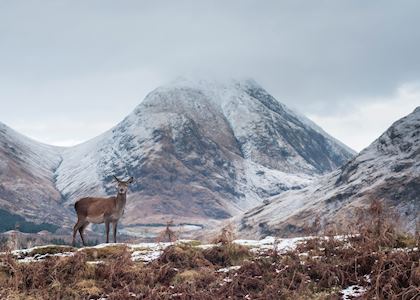
Visiting Scotland in January
January is bitterly cold in Scotland, especially in the east of the country where average temperatures hover around freezing during the daytime. Edinburgh is beset by icy winds from the coast, and much of the country is under snow, especially the mountainous areas. Hogmanay is the Scottish festival for New Year, usually marked by live music, fire dancers and fireworks. Burns Night, a celebration of national poet Robert Burns, is on the 25th of the month and is usually observed by poetry readings accompanied by whisky and haggis.
Events & Festivals
- Burns Night is a celebration of Scotland's national Poet, Robert Burns, usually celebrated with poetry readings, whisky and haggis.
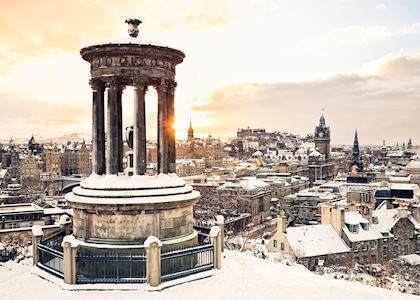
Visiting Scotland in February
February is still a cold month and receives a fair amount of snow. The Fort William Mountain Festival is held during February, celebrating all things mountainous with films, events and talks by famous mountaineers.
- The Fort William Mountain Festival is a celebration of all things mountainous, with talks by famous mountaineers, films and events.
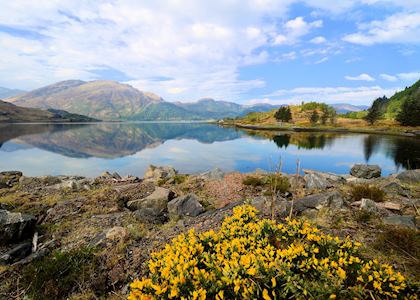
Visiting Scotland in March
In the south of the country temperatures start to rise and spring begins to emerge. In the Highlands and Cairngorms , snow remains on the mountains but the lower slopes may begin to melt.
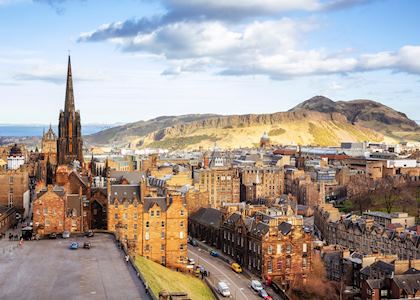
Visiting Scotland in April
Temperatures are slightly warmer, although again the mountainous areas will remain cold with snow on the peaks. This is usually when the ski areas of the West Highlands and the Cairngorms close. April is typically the driest month in Edinburgh. Beltane, a pagan fire festival, is held at the end of the month, marking the end of winter. In Edinburgh, thousands climb Calton Hill for a pagan and fire-themed performance.
- Beltane is held at the end of the month, a pagan fire festival marking the end of winter.
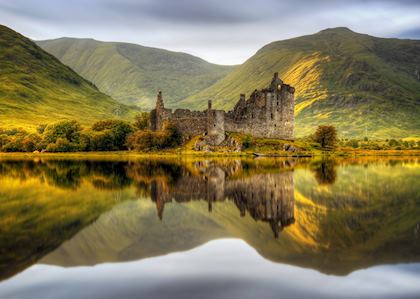
Visiting Scotland in May - June
Spring flowers and foliage really emerge in May and into June, with the snow mostly melting from all but the highest peaks. Public holidays at the beginning and end of May make these weekends particularly busy. From June, Scotland’s midges make an appearance, lasting through until the end of September. Daylight hours are long, with around 17 and a half hours by the end of June in central Scotland, increasing the further north you travel. Many Highland games are held in May and June, although these do continue through to September.
- The Highland Games feature heavy athletic events such as tossing the caber, tug-o-war as well as dance competitions and piping.

Visiting Scotland in July - August
This is peak summer in Scotland, with temperatures averaging at around 66°F. Schools break for the summer in July and this is the busiest time of year to travel. Edinburgh Festival Fringe is held throughout August, coinciding with the Edinburgh Military Tattoo, a spectacular military parade in front of the castle.
- The Edinburgh Festival Fringe is the world's largest arts festival. Held during most of August, it features all kinds of performances including comedy, dance and theater.

Visiting Scotland in September
September is the wettest month in Scotland, and temperatures decrease a little. Despite the schools returning, this is still a busy time of year to travel. The most famous of Scotland’s Highland games, the Braemar Gathering, is held in September just north of Pitlochry.
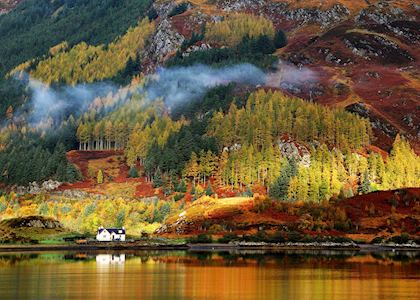
Visiting Scotland in October
Vibrant autumn foliage reaches its glorious peak toward the end of October, and the weather is typically cool and slightly drier than in September. Certain hotels and sites start to close toward the end of the month.

Visiting Scotland in November
Temperatures are fairly cold across Scotland in November, particularly in the north and the east. Autumn foliage still on the trees at the start of the month drops toward the end, and the first snowfall is often in November. This is a much quieter month to visit Scotland, although some sites may be closed. St Andrew's Day, held on the 30th of the month, is a celebration of Scotland’s patron saint, marked with feasts, music and dancing.
- St Andrew's Day is a celebration of Scotland's patron saint, marked with feasts, music and dancing, held on the 30th of the month.

Visiting Scotland in December
December has the shortest amount of daylight of the year, with long nights and cold days. It’s a relatively dry month and can see beautifully crisp, clear and sunny days.
- Hogmanay is the Scottish festival for New Year, usually marked by live music, fire dancers and fireworks.
Scotland Climate Guide
Why travel with audley.
- 100% tailor-made tours
- Fully protected travel
- Established for over 25 years
- 98% of our clients would recommend us

Travel advice
Practical tips for traveling to Scotland, from social protocols to guidance on money matters, with a link to the latest US State Department travel advice.

Request our brochure
Covering all seven continents, The World Your Way shows you how you can see the world with us. It features trip ideas from our specialists alongside hand-picked stays and experiences, and introduces our approach to creating meaningful travel experiences.
Trip ideas and travel guides for exploring Scotland
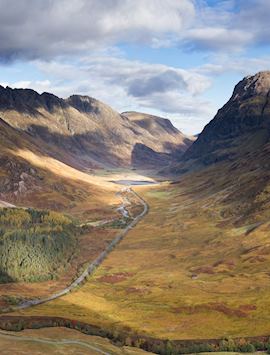
Self-drive wild Scotland & Ireland
10 days from $7,230pp

Deluxe castles of Scotland & Ireland
12 days from $19,880pp
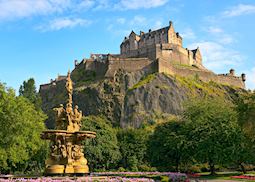
Edinburgh for first-time visitors
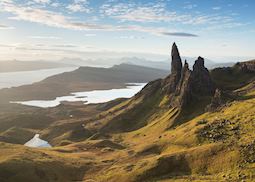
Highlights of the Isle of Skye
The 14 best places to visit in Scotland

Nov 19, 2023 • 10 min read
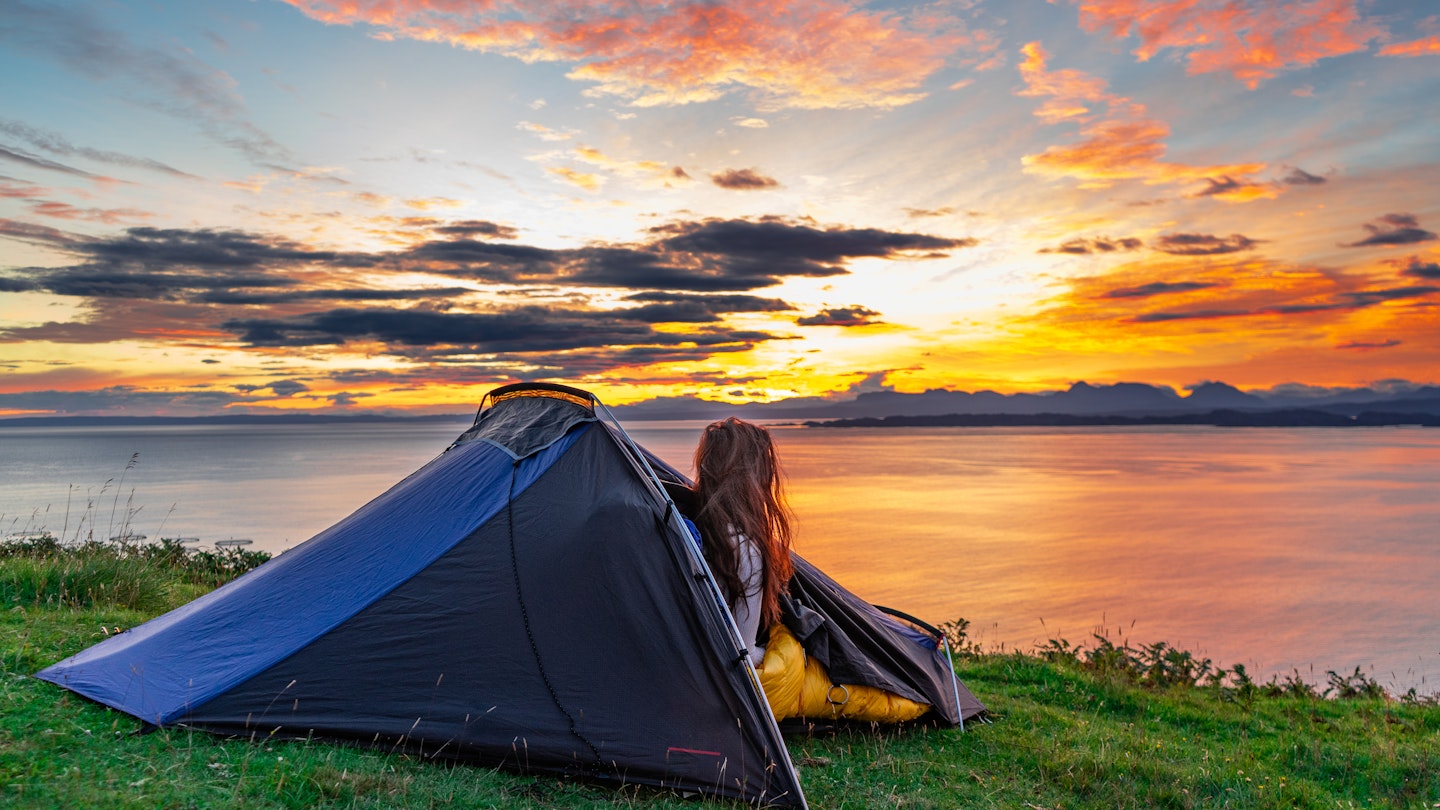
Pack your camping gear (and your rainproofs) and head to some of the best places to visit in Scotland © Robert Coppinger / Shutterstock
Some of the best places to visit in Scotland will be instantly familiar to anyone who’s ever gazed at a whisky label or shortbread tin. Think dramatic peaks, lonely glens, lochs, tartan and haggis!
From spectacular Skye and historic Edinburgh to the rolling rivers of Speyside, Scotland’s big sights are as glorious as you’d imagine. But scratch the surface of this proud nation and you’ll find a varied and engrossing place, dotted with prehistoric villages, wild clubs, rich seafood and ruined abbeys.
So, where to start? Once you've decided on the best time for your visit , you need to decide on the best places to go while you're there. Here is our pick of the best destinations in Scotland to get you started.
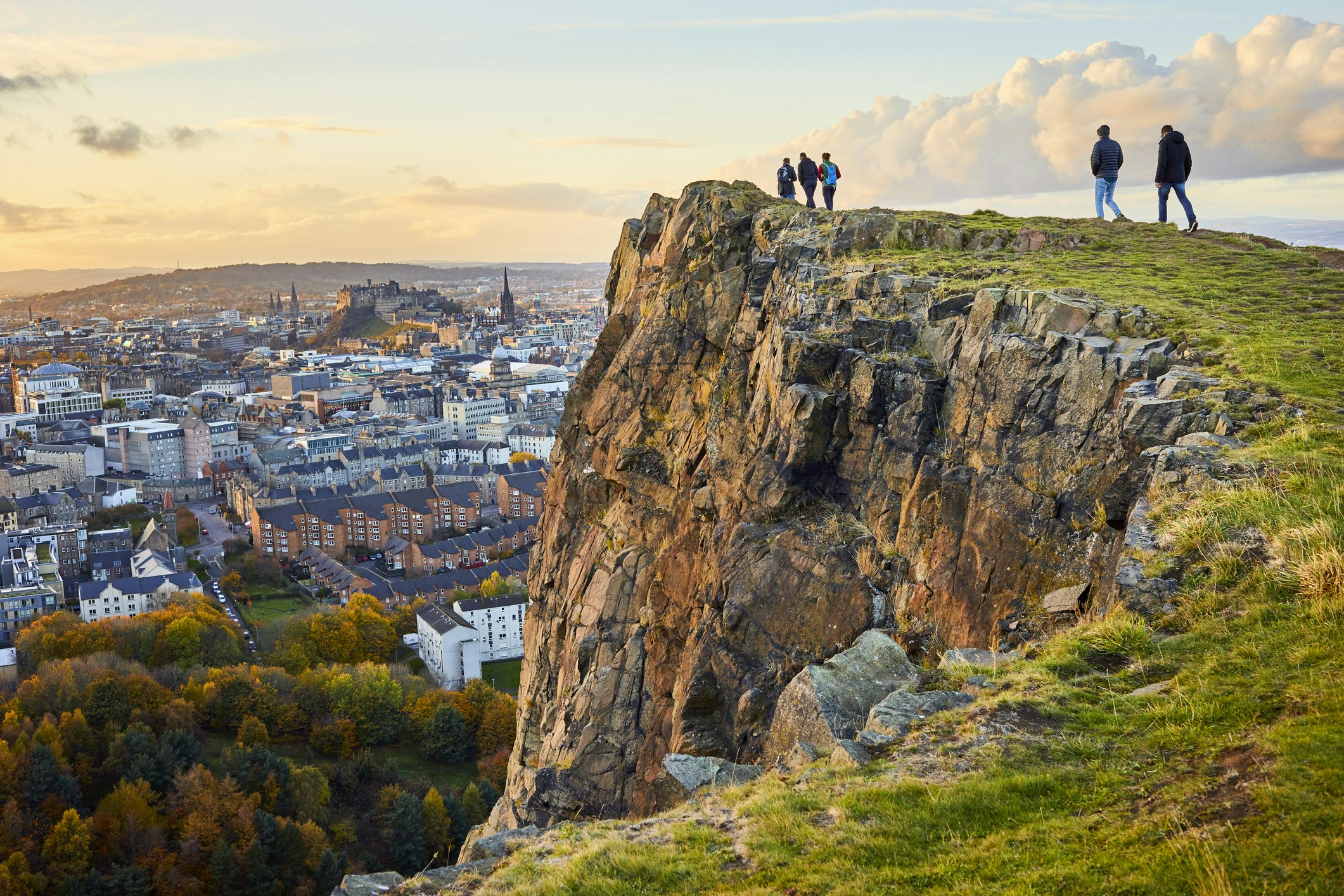
1. Edinburgh
Best place for year-round entertainment
Scotland's capital may be famous for its festivals, but there's much more to the city than that. Edinburgh is a place of many moods: visit in spring to see the Old Town silhouetted against a blue sky and a yellow haze of daffodils, or on a chill winter’s day for fog snagging the spires of the Royal Mile, rain on the cobblestones, and a warm glow beckoning from the windows of local pubs. With a world-class modern art gallery , top museums , spooky historic sites and a majestic 12th-century castle , there's plenty to keep you entertained whatever the season.
Local tip: Start your visit to Edinburgh with a climb up Arthur's Seat , an extinct volcano for panoramic views over the city.
2. West Highland Way
Best place for long-distance hiking
The best way to really get inside Scotland's landscapes is to walk them. Here, peaks tower over lochs and sea cliffs gaze over the wind-whipped sea, but there are short woodland trails and charming strolls through valleys dusted with purple heather, too. Top of the wish list for many hikers is the 96-mile West Highland Way from Milngavie (near Glasgow) to Fort William , a weeklong walk through some of the country's finest scenery, finishing in the shadow of its highest peak, Ben Nevis.
If you don’t have the time or energy for a long-distance trek, it's possible to do just a day's hike along part of the trail. For example, you could walk the section from Rowardennan to Inversnaid, returning to your starting point using the Loch Lomond waterbus . Whichever section you take on, pack waterproofs and midge repellent. Rail lovers should note that sleeper trains run south from Fort William all the way to London, making for an easy exit after a walk.
Detour: The 1,345m (4,413ft) summit of Ben Nevis is within reach of anyone who's reasonably fit: treat the peak with respect and your reward (weather permitting) will be magnificent views that can stretch as far as Northern Ireland.

3. North Coast 500
Best place for a scenic road trip
Breathtaking views abound in the Highlands , but the far north is where things become truly awe-inspiring. This is the best place in Scotland to explore by car (you can also cycle it), with some of the finest roadside scenery in Europe.
The North Coast 500 starts and ends in the likable city of Inverness , and loops past the lochs, sand dunes and golf courses of the east coast before taking in the remote cliffs and beaches of Cape Wrath, the rugged peaks of Assynt and Torridon’s desolate beauty. These sights, and the nooks of warm Highland hospitality found in the region's classic rural pubs and old crofting villages, make this an unforgettable weeklong tour.
4. Isle of Skye
Best place for photographers
In a country famous for stunning scenery, the Isle of Skye takes the top prize. From the craggy peaks of the Cuillins and the bizarre pinnacles of the Old Man of Storr and the Quiraing to the spectacular sea cliffs of Neist Point, there's a photo opportunity awaiting you at almost every turn.
Skye is also one of the best places in Scotland to see golden eagles, and you’ll find convivial pubs and top seafood restaurants if you can tear your eyes from the natural world. Of course, all this tourist appeal makes Skye one of Scotland's most popular destinations. The crowds tend to stick to Portree , Dunvegan and Trotternish – it’s almost always possible to find peace and quiet in the island’s further-flung corners.
Planning tip: Come prepared for changeable weather – when it’s fine, it’s very fine indeed, but all too often it isn’t.
5. Loch Lomond
Best place for a lakeside hike
Despite being less than an hour's drive from the bustle and sprawl of Glasgow, the bonnie braes (banks) of Loch Lomond – immortalized in the words of one of Scotland's best-known songs – comprise one of the most scenic parts of the country.
At the heart of Scotland's first national park , the loch begins as a broad, island-peppered lake in the south, its shores clothed in bluebell-sprinkled woods before narrowing in the north to a fjord-like trench ringed by mountains.
Detour: The summit of Ben Lomond (974m/3,031ft) is a popular climb – follow the well-maintained path for a 7-mile round-trip on the popular Tourist Route (allow around 5 hours).

Best place for live music and pub culture
Scotland's biggest city may lack Edinburgh's stunning setting, but it more than makes up for it with a barrelful of things to do and a warmth and energy that leaves every visitor impressed. Edgy and contemporary, it's a great spot to browse art galleries and museums , and to discover the works of local design hero Charles Rennie Mackintosh .
Glasgow’s infectious vitality is best sampled via its lively pubs and clubs, which host one of the world's great live music scenes.
Local tip: Check out upcoming (mostly alt-rock) acts at the Barrowland (crowned the UK's best music venue by Time Out magazine in 2023), a legendary former ballroom, or try the Sub Club for house and techno, the Clutha Bar for roots and rock, or Nice N Sleazy , a classic indie dive.
7. Stirling
Best place for castle fans
With an impregnable position atop a mighty wooded crag – the plug of an extinct volcano – Stirling ’s beautifully preserved Old Town is a treasure trove of historic buildings and cobbled streets winding up to the ramparts of Stirling Castle . This fortress has seen serious action – it was bombarded by the Warwolf, a giant 14th-century English siege engine, and was besieged during the 1745 Jacobite rising, as well as sending troops to the battle of Bannockburn (the decisive battle celebrated at the end of Braveheart ), just a few miles south.
Today, views that stretch to the Highlands, glorious tapestries and juicy history make this Scotland’s best castle – and a great family attraction.
Planning tip: It's best to visit in the afternoon; many tourists come on day trips, so you may have the castle almost to yourself by 4pm.

8. St Andrews
Best place for golfers
Scotland invented the game of golf, and the city of St Andrews is still revered as its spiritual home by hackers and champions alike. Links courses are the classic experience here – bumpy coastal affairs where the rough is heather and machair (coastal grass) and the main enemy is the wind, which can make a disaster of a promising round in an instant.
St Andrews, the historic Fife university town, is golf's headquarters , and an irresistible destination for anyone who loves the sport. And if you're not so keen, well, the city has impressive medieval ruins , stately university buildings , idyllic white sands and excellent guesthouses and restaurants .
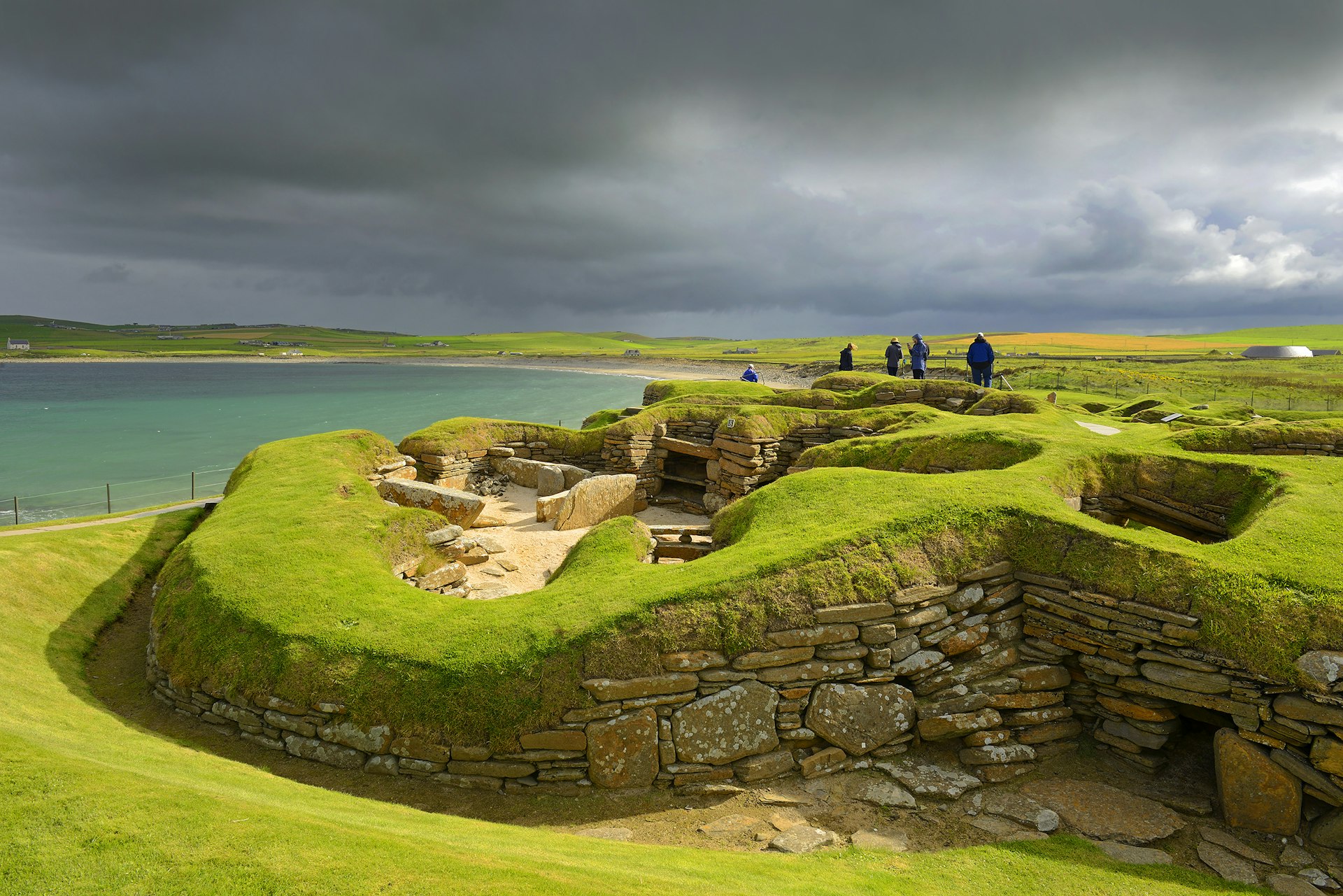
9. Skara Brae
Best place for lovers of ancient history
When visiting ancient sites, it can sometimes be difficult to bridge the gulf of years or build a connection with the people that built them, but Scotland’s superb prehistoric remains have an immediate impact. Few places offer a better glimpse of everyday Stone Age life than Skara Brae in Orkney with its carefully constructed fireplaces, beds, cupboards and water cisterns.
This Neolithic village – which, at 5,000 years is older than Stonehenge or the Pyramids of Giza – lay buried in coastal sand dunes for centuries. Even today, it can feel as though the inhabitants have just slipped out to go fishing and could return at any moment.
10. Glen Coe
Best place for clan history
Scotland's most famous glen combines two essential qualities of the Highlands: dramatic scenery and a deep sense of history. The peace and beauty of this valley today belies the fact that Glen Coe was the scene of a ruthless 17th-century massacre, when the local MacDonalds were murdered by soldiers of the Campbell clan.
Some of the glen's finest walks – to the Lost Valley, for example – follow the routes taken by fleeing clanspeople, many of whom perished in the snow.
Planning tip: Start at the Glencoe Visitor Centre for more information on this beautiful place and its tragic history.
11. Perthshire
Best place to enjoy nature's bounty
In Perthshire , the heart of Scotland, picturesque towns bloom with flowers, distilleries emit tempting malty odors and sheep graze in impossibly green meadows. There's a feeling of the bounty of nature that no other place in Scotland can replicate.
Blue-gray lochs shimmer, reflecting the changing moods of the weather; centuries-old trees tower amid riverside forests; majestic glens scythe their way into remote wildernesses; and salmon leap upriver to the place of their birth.

12. Shetland Islands
Best place for birdwatching
Close enough to Norway to make Scottish nationality an ambiguous concept, the Shetland Islands are Britain’s most northerly outpost. The stirringly bleak setting – recognized as a precious UNESCO geopark – still feels uniquely Scottish though, with deep, naked glens flanked by steep hills, twinkling, sky-blue lochs and, of course, wandering sheep on the little-trafficked roads. It's the birdlife, however, that really draws visitors here.
From their first arrival in late spring to the raucous feeding frenzies of high summer, the vast colonies of gannets, guillemots, skua, puffins and kittiwakes at Hermaness , Noss, Sumburgh Head and Fair Isle provide some of Britain's most impressive birdwatching experiences.
Local tip: Shetland is one of the best places in the UK to spot orcas (and the Northern Lights).
13. Speyside
Best place for whisky tasting
Scotland's national drink is whisky – from the Gaelic uisge beatha , meaning “water of life” – and this fiery spirit has been distilled here for more than 500 years. More than 50 distilleries are in operation in Speyside, Scotland's most famous whisky area, famed for fruity, lightly spicy flavors (head over to Islay for peatier varieties).
Ask at the Whisky Museum about the Malt Whisky Trail, a self-guided tour around the local distilleries. If you just have time for one, the Balvenie Distillery is a good bet as it still uses a traditional malting floor – the smell is glorious!
Planning tip: Dufftown lies at the heart of the region and is host to the biannual Spirit of Speyside Whisky Festival.
14. The Scotland Borders
Best place for a country ramble
Many visitors to Scotland race up to Edinburgh and then hightail it to the Highlands, missing the Scottish Borders entirely . That's their loss. Once fought over by war chiefs and cattle thieves, the Borders region is rich in history and packed with good cycling and hiking routes.
There are grand country houses, too – Traquair House brews Jacobite Ale and has a concealed room that once hid Catholic priests – and a series of gorgeous ruined abbeys – Gothic Melrose Abbey is the best – plus birds and sea cliffs at St Abb’s Head. More active types can fish for salmon or thunder down the mountain bike trails at Glentress and Innerleithen.
This article was first published May 2021 and updated November 2023
Explore related stories
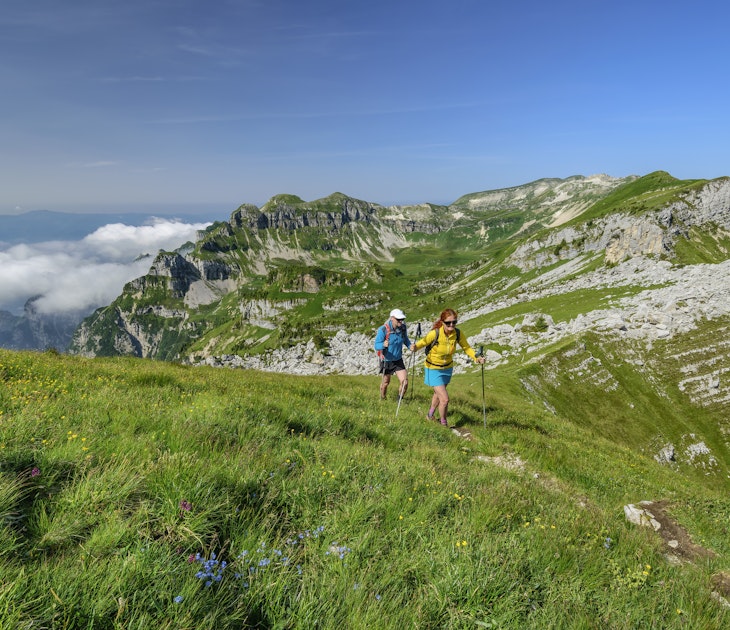
Mar 14, 2024 • 16 min read
Experience some of Europe's best wildlife, nature and landscapes this summer at these national parks.

Mar 6, 2024 • 7 min read
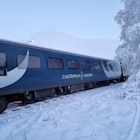
Feb 8, 2024 • 7 min read

Jan 30, 2024 • 19 min read

Jan 16, 2024 • 8 min read

Jan 2, 2024 • 8 min read

Jan 2, 2024 • 11 min read

Dec 28, 2023 • 9 min read
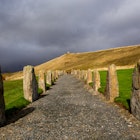
Dec 5, 2023 • 7 min read
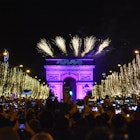
Nov 22, 2023 • 7 min read
Finding the Universe
Travel tales, photography and a dash of humor
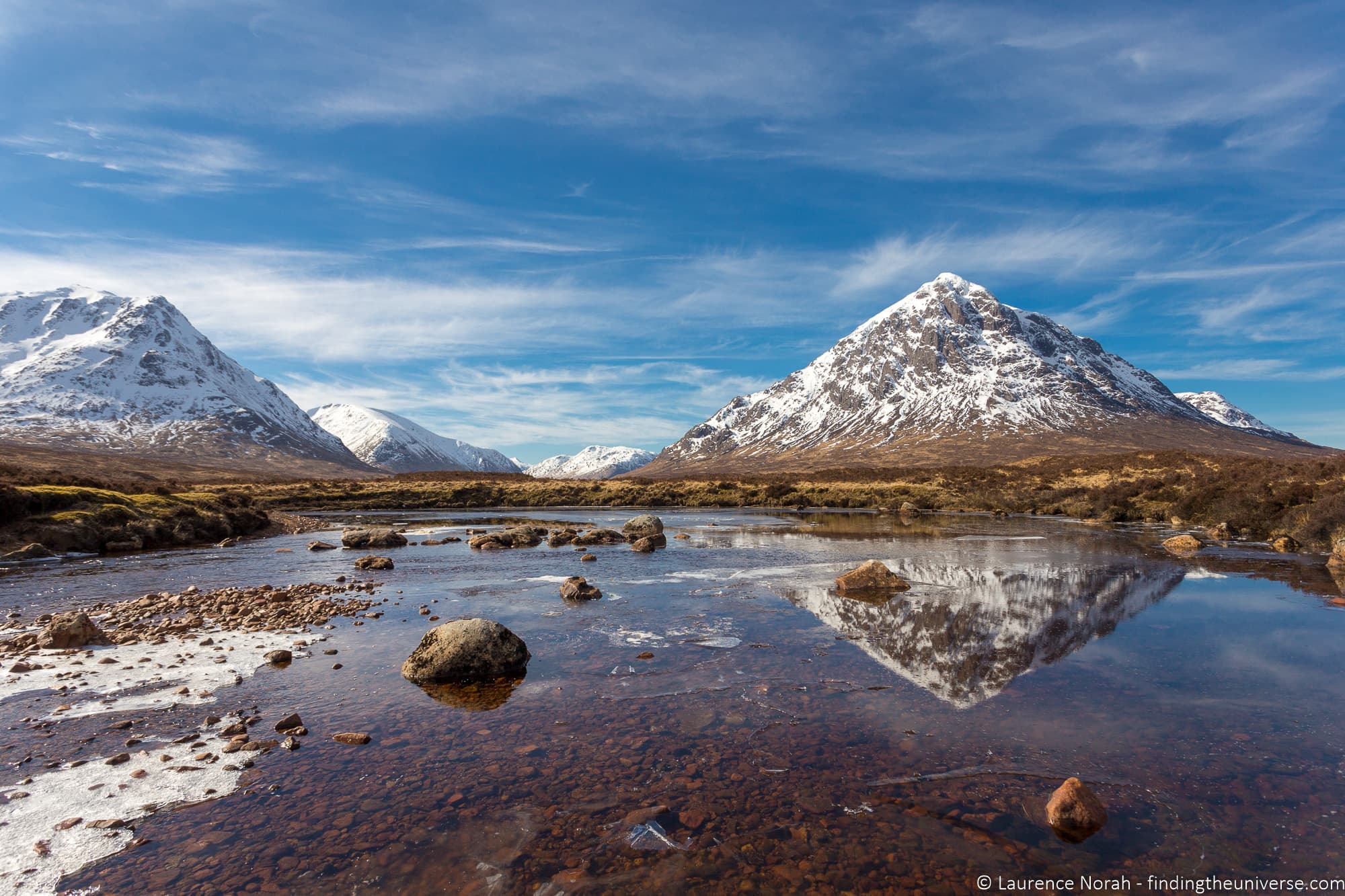
Scotland in Winter: Things to Do, Planning Advice, Tips and More!
Last updated: December 10, 2022 . Written by Laurence Norah - 13 Comments
Whilst the most popular time to visit Scotland is the summer months, there is plenty to do if you visit Scotland in winter.
We’ve travelled throughout Scotland in winter, and with a bit of preparation and planning, a visit at this time of year will reward you with quieter and less crowded attractions (with some notable exceptions!) and wintery landscapes in the Scottish Highlands.
In this post we’re going to go through some of the many highlights and reasons to visit Scotland in winter, including some of our favourite things to do in winter, as well as some tips for preparing for a winter visit to Scotland. Let’s get started!
Things to do in Scotland in Winter
First, we want to go through some of our favourite activities in Scotland in winter. Some of these are exclusive to the winter time, others can be enjoyed year round.
Scotland is home to five outdoor ski resorts, found in the more mountainous regions of the country. These include three resorts in the Cairngorms National Park , and one in the beautiful Glen Coe valley.
There are also a number of other artificial ski slopes in the UK, but if you want real snow, the ski resorts in Scotland are the only place in the UK to come for ski slopes with real snow.
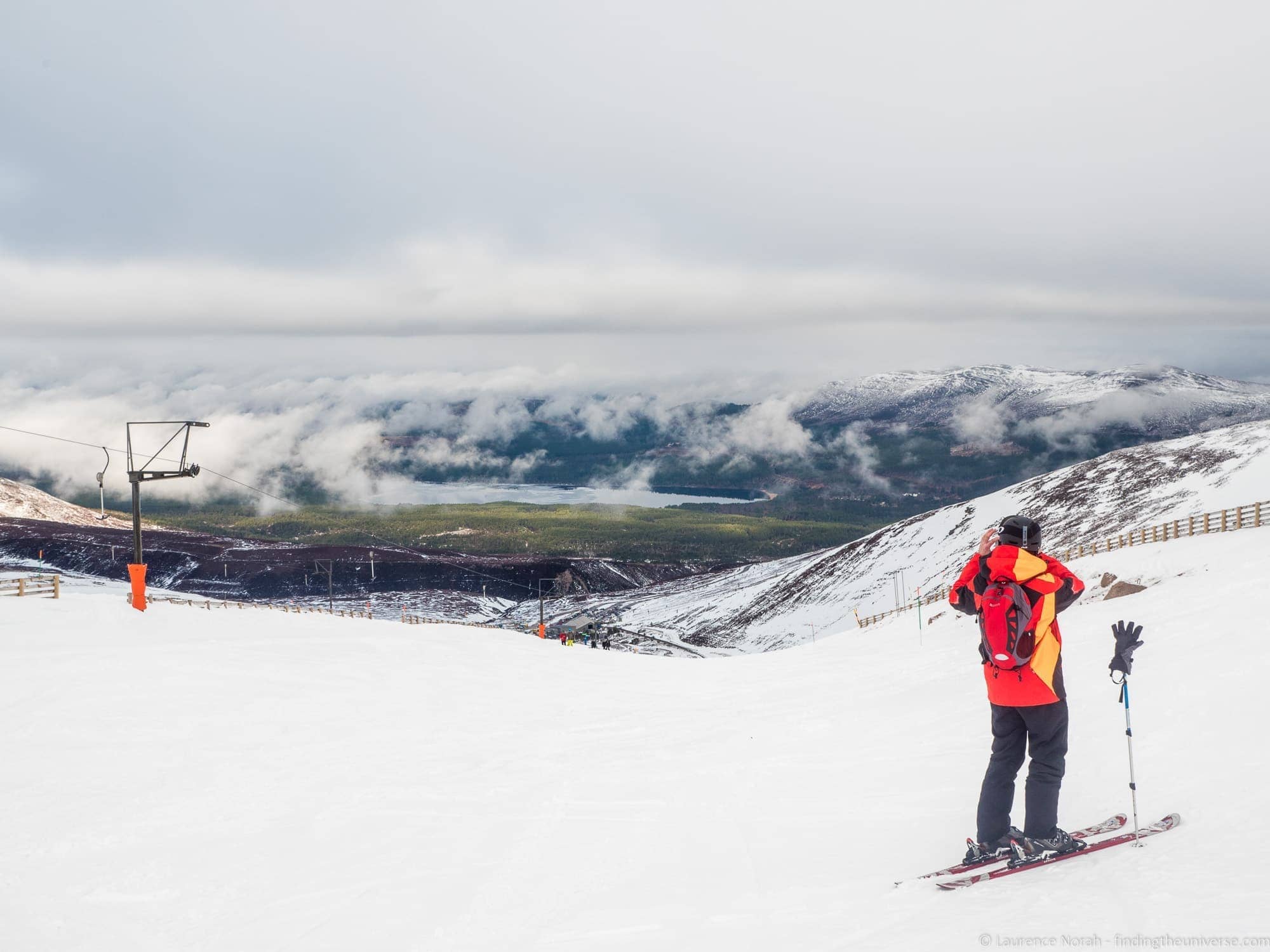
Whilst the mountains in Scotland are not as high as those you might find in say the Swiss Alps or the Colorado Rockies, there is certainly good skiing or snowboarding to be had, with all the resorts offering everything you might expect, including well groomed slopes and ski lifts.
Generally, the ski resorts in Scotland are open from around December through to April, but this will depend greatly on the weather conditions and snowfall. February is generally the month with the most reliable snow cover.
We have a full guide to all the skiing in Scotland , plus a detailed overview of our experience skiing on Cairngorm Mountain , to help you plan your own Scottish skiing adventure!
Attend Hogmanay or the Christmas Markets
If you’re visiting Scotland in December over the Christmas and New Years Eve periods, then you might want to look into the many events and activities that happen around this time.
Many of the cities and towns across Scotland host some sort of Christmas event, which may be anything from festive Christmas light shows through to Christmas markets.
In Edinburgh for example, the Edinburgh Botanic Gardens is often festooned with a special light display, and the Edinburgh Christmas Markets run from the end of November through to the beginning of January. See more about what’s on in our guide to Edinburgh at Christmas .
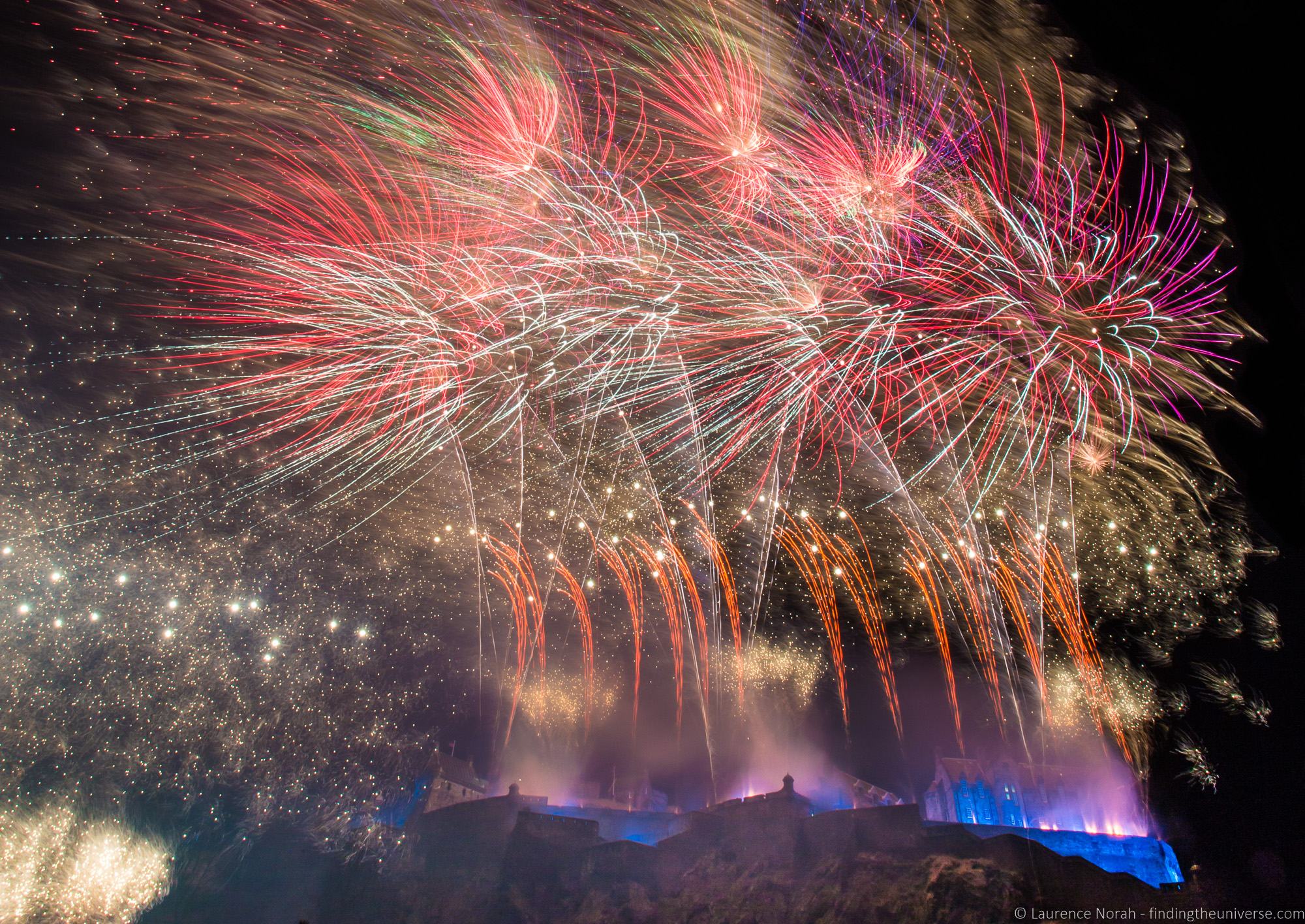
If you happen to be in Scotland for New Years Eve, you are definitely in for a treat. New Years Eve, known as Hogmanay in Scotland, is a massive event here, with a wide range of events happening across the country.
Certainly one of the most popular places to be for Hogmanay is Edinburgh, which hosts one of the world’s largest New Year’s Eve celebrations. This includes a massive street party, traditional Scottish dances, performances from musicians and street performers, and a huge fireworks display over the castle to mark the event.
There’s also a huge torchlight procession through the streets of Edinburgh on the 30th of December, as well as the annual Loony Dook on the first day of the New Year, as well as a number of other events. If you plan on visiting, check out our detailed guide to Hogmanay in Edinburgh . You might also consider taking a Christmas themed walk with a local!
Take a Wintery Road Trip
We love road tripping in Scotland in winter. There are far fewer cars on the roads, accommodation prices (especially for high end castle properties like this ) are incredibly reasonable, and the scenery is just as spectacular.
Other advantages are the wonderful light, and your chances for seeing some wildlife like deer are increased, as they come down from the high mountains to find food that isn’t covered in snow.
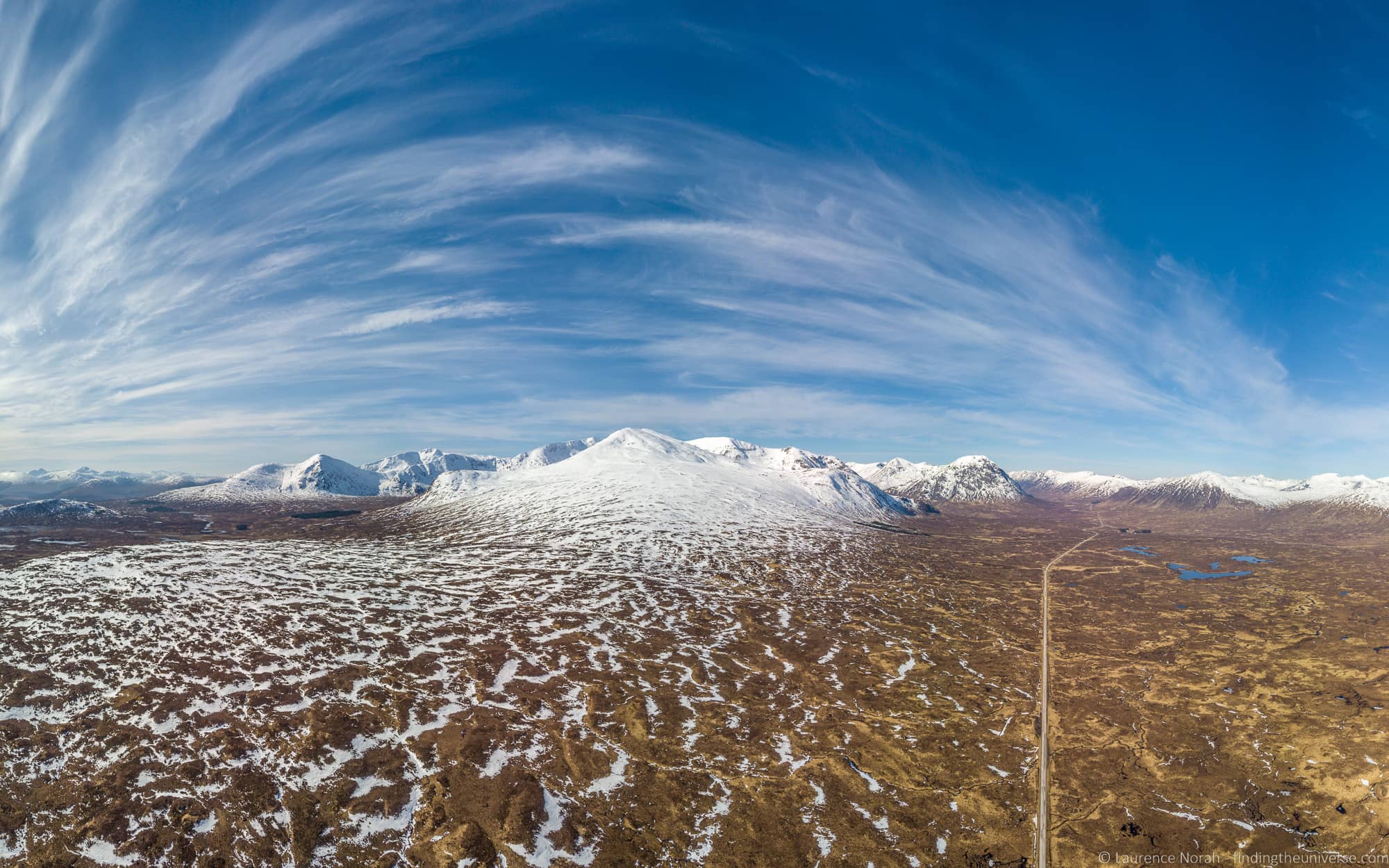
Of course, there are a few things to be aware of. Roads can be icy or snow-filled (especially in the mountainous areas and up north), and the hours of daylight are much shorter, giving you less time to fit everything in. So you will have to plan accordingly and you will want to be flexible.
Also note that many attractions outside of the larger cities close during the winter or have reduced winter hours. So keep this in mind when considering when you want to visit and in your trip planning.
With proper planning though, a road trip in Scotland in winter is definitely worth considering. We’ve driven the North Coast 500 in winter , as well as the Cairngorms , the Isle of Skye ,, and the North East 250 .
We usually carry snow chains in our car (we’ve not had to use them yet!) if heading to northern Scotland. Then it’s just a question of planning the itinerary so we don’t go too quickly, and checking for hotels that are open, as many are closed through the winter months. We have been snowed in once, but as we had a flexible schedule, we just ended up staying an extra night where we were.
Here’s an example of a 1 week NC500 itinerary that you might enjoy following over winter.
Cosy Up in a Far Flung Hideaway or Castle
If there’s one thing we love about Scotland, it’s the huge amount of wilderness and the potential it has for a romantic escape. We’ve travelled all around Scotland and stayed in some gorgeous properties, from romantic castles to cosy cottages.
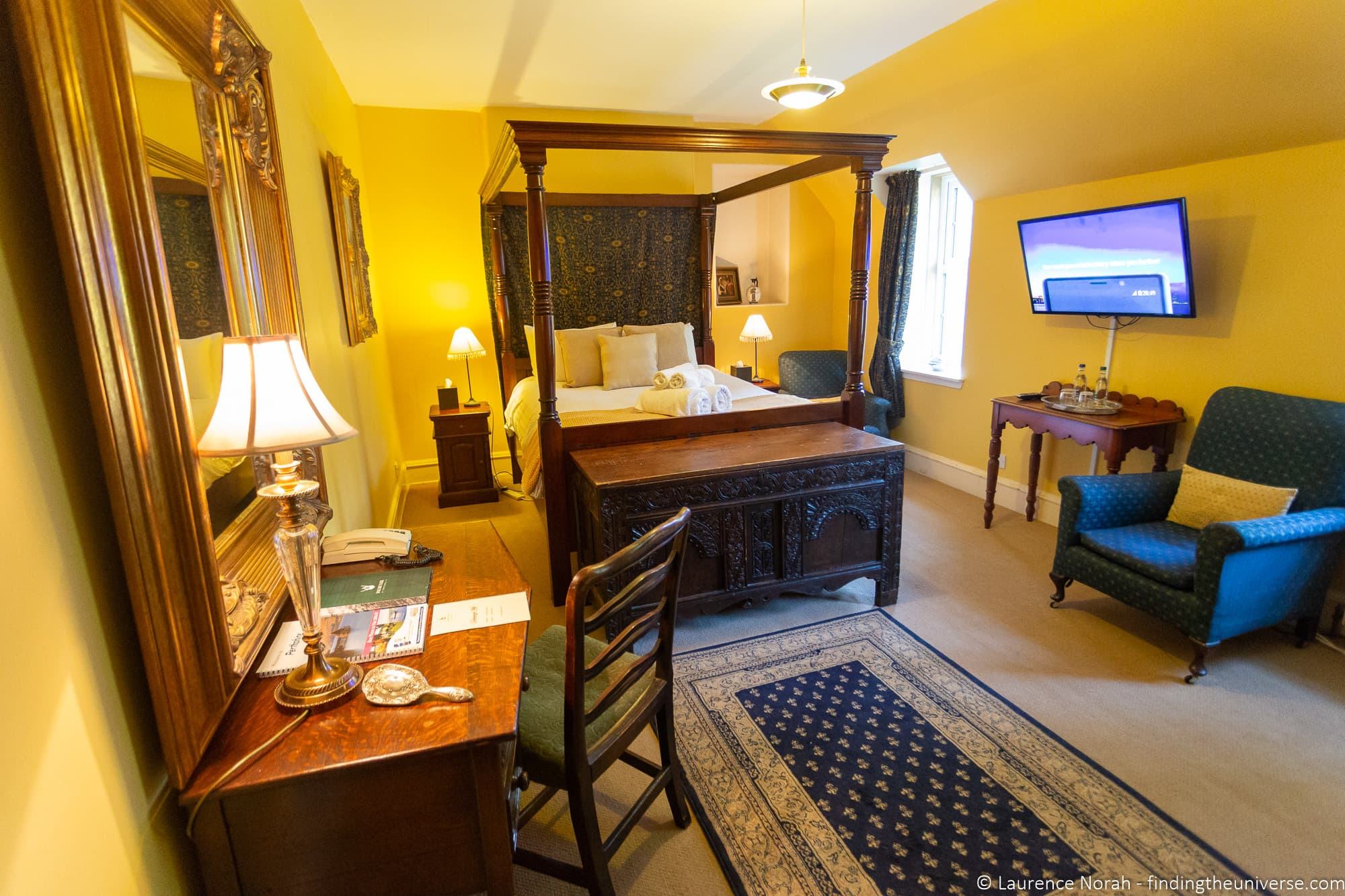
It’s worth bearing in mind that some of the more remote properties aren’t open all through the winter. We recommend looking at listings on booking.com , Sykes Holiday Cottages , or Plum Guide to get started.
We also have a comprehensive guide to the best websites for booking holiday cottages in the UK for lots more ideas!
Winter Festivals
If you miss Hogmanay or the Christmas Markets, fret not. There are lots of other festivals through the winter months in Scotland.
In Scotland in January for example, Burns Night is celebrated. This celebrates the life of Scotland’s most famous poet, Robert, or “Rabbie” Burns, and is held on the 25th January each year – the birthday of the poet.
The festivities vary, but the most common celebration is an evening meal, which will feature readings of poetry, traditional Scottish food, and traditional Scottish dancing. Various locations across Scotland hold different events at this time, from formal dining at locations like Prestonfield House through to festivals like the Dumfries Big Burns Supper .
See our full guide to celebrating Burns Night in Scotland , which has lots of events and information to help you plan.
Other festivals including the Up Helly Aa viking festival in the Shetland Islands at the end of January, and the celebrations of Scotland’s Patron Saint, St. Andrew, on the 30th November.
Do some Winter Activities
If skiing or snowboarding doesn’t float your boat, there are plenty more opportunities for winter fun in Scotland.
For example, in the Cairngorms National Park you can go sledging at a variety of locations, and even go snowshoeing.
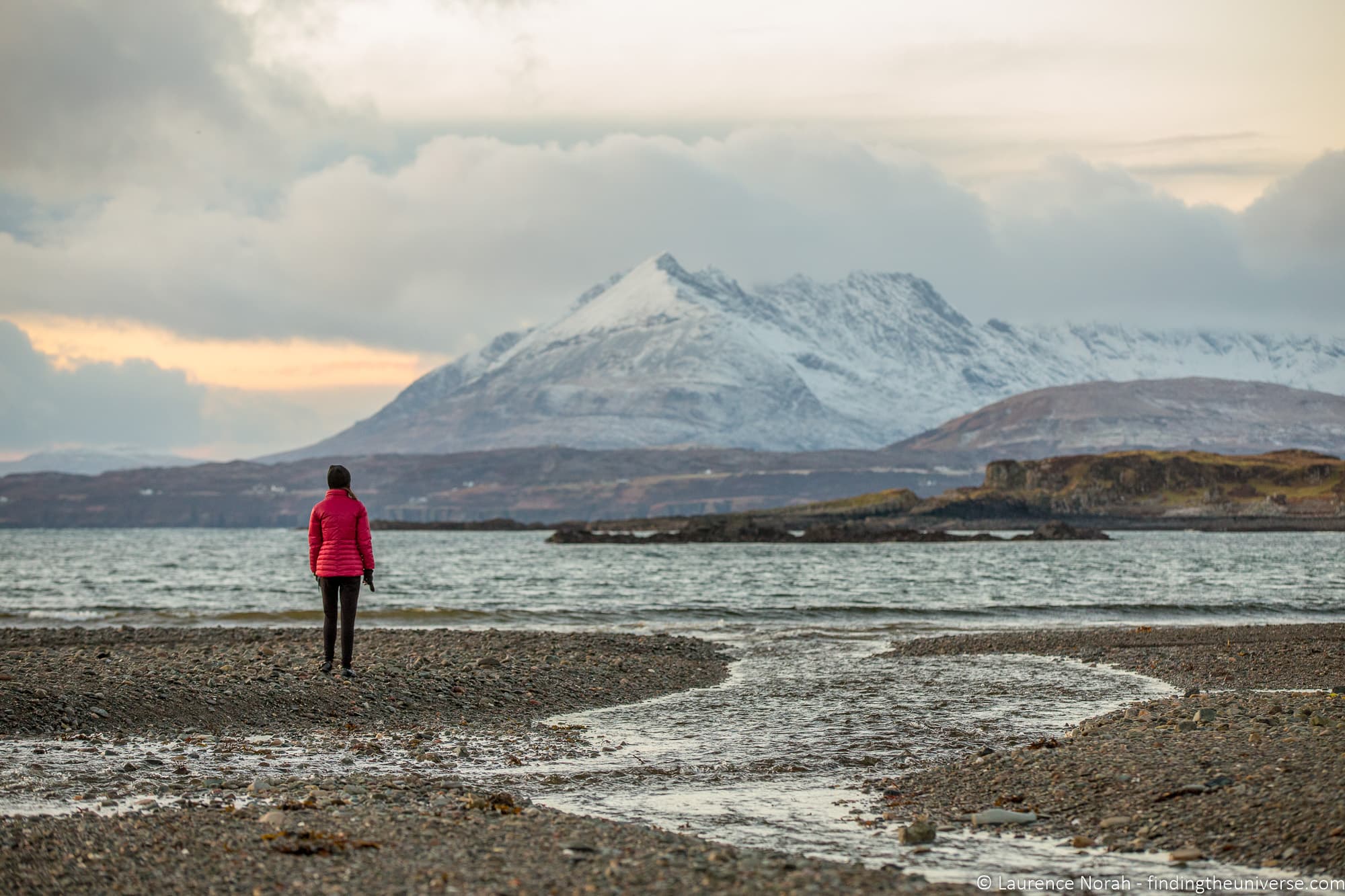
Across Scotland, there are a wide variety of options for wintery activities, from ice climbing to winter mountaineering . If this sounds like your sort of thing, we recommend getting in touch with Tim from Hamlet Mountaineering , who should be able to arrange something fun to do! You can read our experience of a hike up Suilven and overnight camping trip here .
Or, you could just go for a nice walk and enjoy the snowy landscapes. Whatever works for you!
Take in Scotland’s Cities
With the notable exception of the period over Christmas and New Year, visiting Scotland’s cities in winter will reward you with a quieter experience. This will let you enjoy all the attractions they have on offer, but with fewer fellow visitors around you.
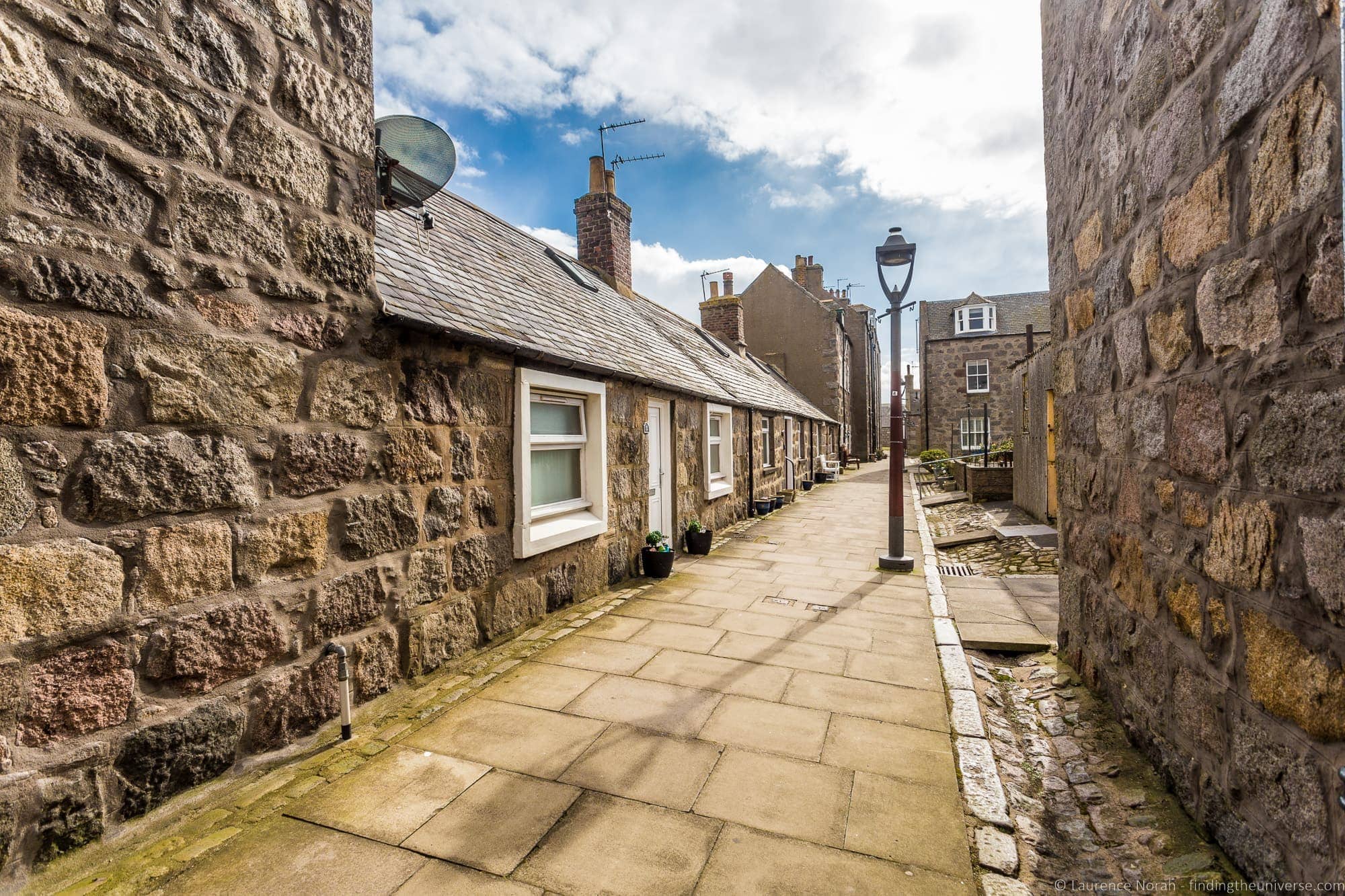
In our experience, most of the major attractions in Scotland’s cities remain open throughout the year, and of course there are plentiful restaurants, shops and cafes as well. The colder weather won’t matter so much if you spend your time indoors, and if you visit in the run up to Christmas, you’ll be able to appreciate the pretty Christmas lights as well.
As examples of popular attractions that are open year round, but which are generally much less busy in the winter, there’s Edinburgh Castle and the Royal Yacht Britannia. These are some of Scotland’s most popular attractions, with millions of visitors a year, and winter will be a much quieter time to visit.
Another popular activity in Scotland is a cruise on Loch Ness , and these also run year-round. This can be done as a day trip from Inverness , Glasgow or Edinburgh . See our guide to visiting Loch Ness for more information.
Of course, you’ll want to be sure that any holidays don’t affect operating hours. The major holidays at this time of year are the 25th and 26th of December, and the 1st and 2nd of January. It’s also worth being aware that school holidays, Christmas and New Year are generally busier times in Scotland’s larger cities.
The three cities we’d recommend for the most attractions open year-round are Edinburgh, Glasgow, and Aberdeen. But you’ll also find things to do year-round in other cities such as Inverness, Dundee, Stirling, and Fort William.
These cities also make for a good base to explore the surrounding areas, especially if you are visiting Scotland without a car. We have guides to the best day trips from the major cities in Scotland if that sounds of interest to you, including:
- The best day trips from Edinburgh
- The best day trips from Inverness
- The best day trips from Aberdeen
- The best day trips from Glasgow
We also have some guides to visiting Scotland’s major cities, including things to do in Edinburgh , things to do in Glasgow and things to do in Aberdeen , which will get you started with planning your adventure.
Take a Whisky Tasting Tour
What could be more Scottish than sipping a whisky (preferably by a roaring fire), whilst the winter weather howls at the door? Pretty much nothing.
Even if, like Jess, you’re not a huge fan of whisky, we would suggest that a whisky tasting tour is still an essential part of any visit to Scotland, and you can read about our experience taking a whisky tour from Edinburgh here .
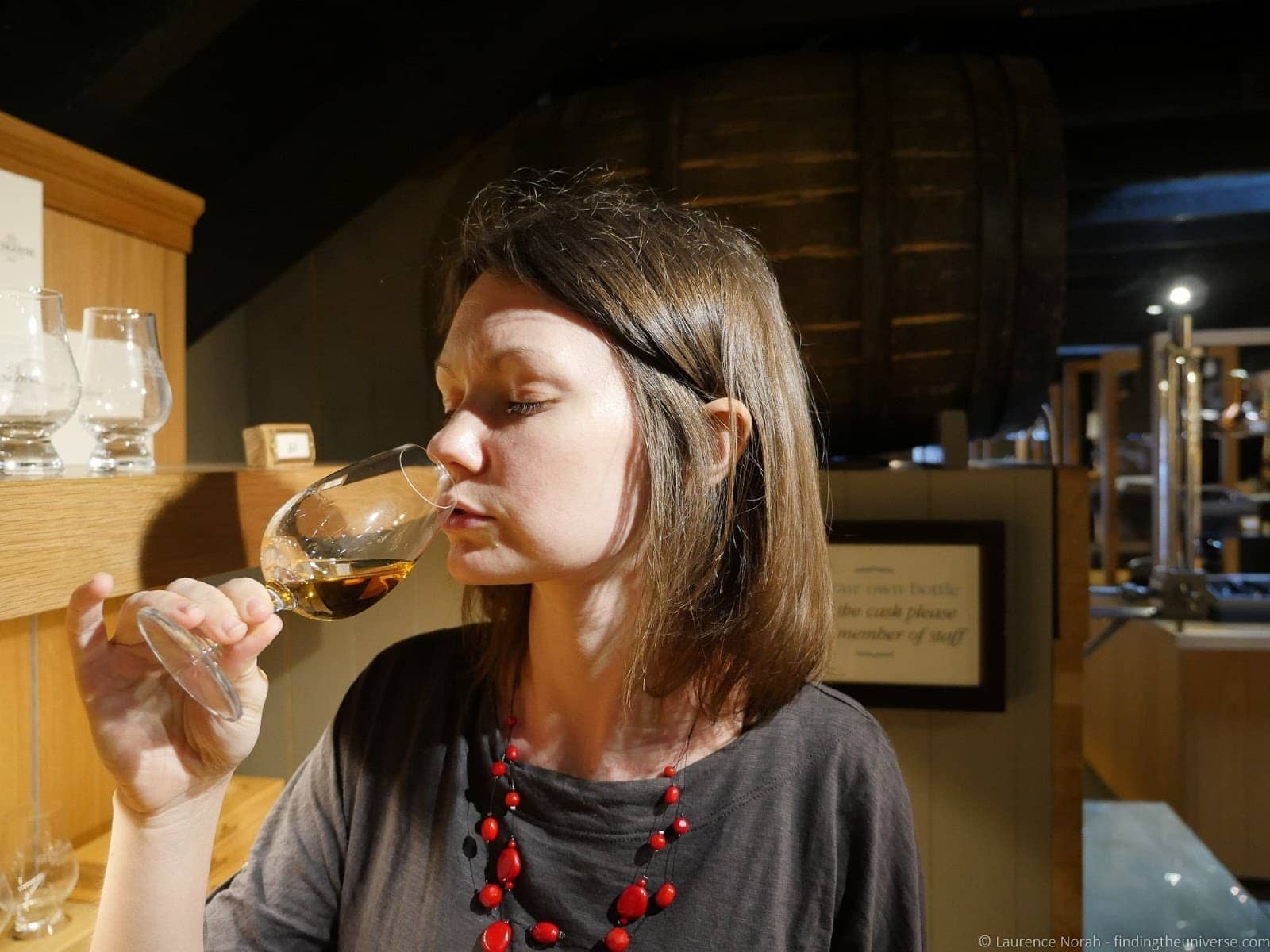
When you visit one of the distilleries, you’ll learn all about the way that whisky is made, what makes Scotch whisky so special, the different varieties and flavour profiles of whisky in Scotland, and of course, you’ll get to try some of the good stuff.
There are a wide range of whisky tours you can take in Scotland, which range from day trips like this to multi-day experiences like this .
Another option, if you’re in Edinburgh and don’t want to commit to a day out, is to visit the Scotch Whisky Experience on the Royal Mile. This will take you on a journey through all of Scotland’s whisky distilling areas, teach you all about how whisky is made, and even take a look at the largest Scotch whisky collection in the world before sampling a dram of the good stuff.
There are also a number of whisky walking tours in Edinburgh like this one . You can also see more here .
Hunt the Northern Lights
You might not know this, but it is actually possible to see the Northern Lights, or Aurora Borealis, from Scotland. Of course, you have to be fairly lucky – there needs be a strong enough solar storm to make the lights visible this far south, and the skies have to be clear.
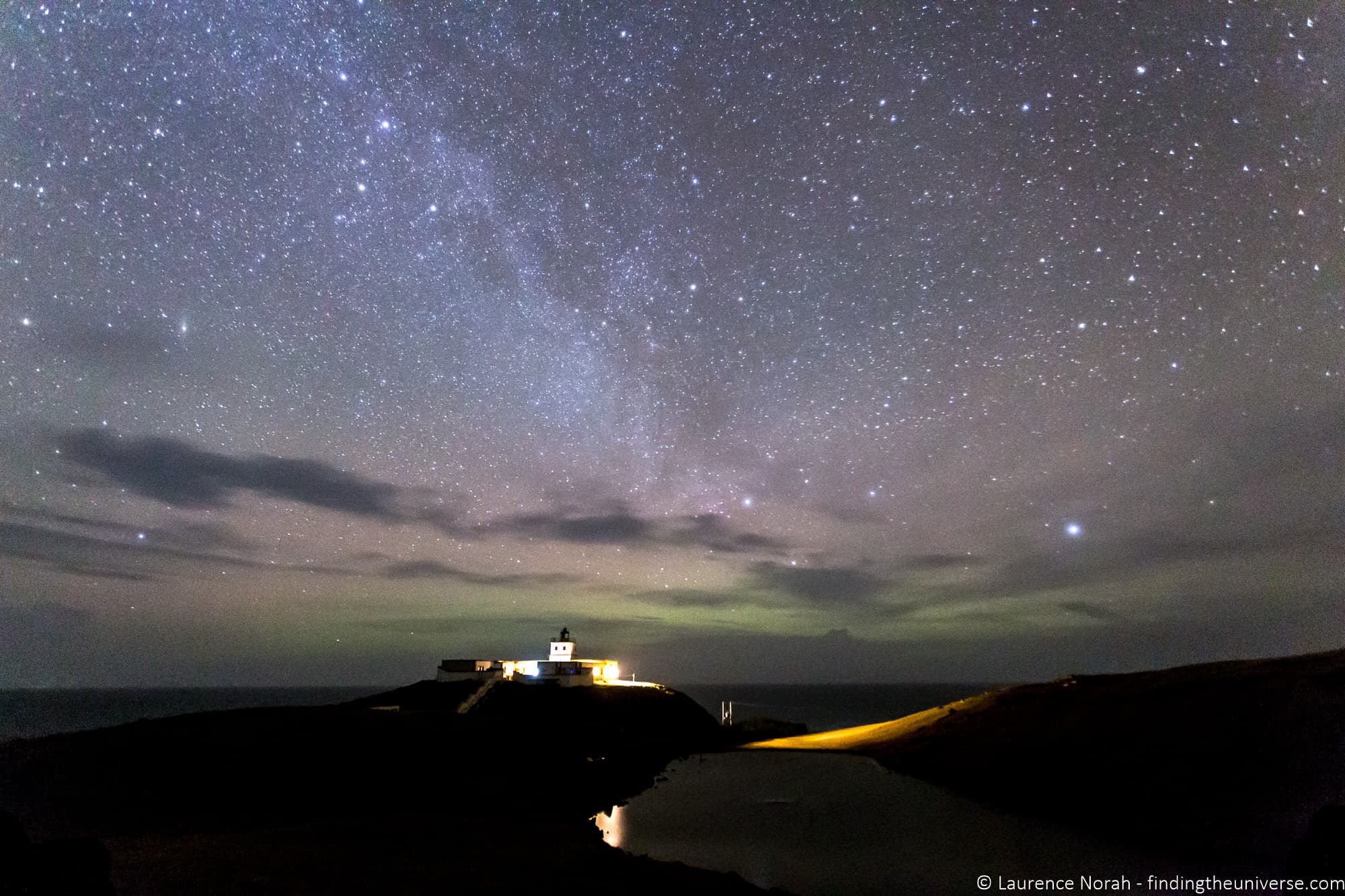
If these two factors happen to come together (this does happen rarely!), then you may be rewarded with a spectacular display. The Northern Lights have been seen in Scotland as far south as Edinburgh and the Scottish borders region, so you don’t even need to head to the far north of the country – although your chances of seeing them are much higher if you go further north.
In addition, as the population density in the northern parts of Scotland is much lower, there is far less light pollution. Along the north coast of Scotland and in the highland regions in particular there is very little artificial light, meaning the views of the night skies are pretty stunning.
Even if you don’t get to see the Northern Lights themselves, if you are lucky enough to have a clear night you will be rewarded with gorgeous views of the stars.
Take Advantage of the Winter Light for Photography
One thing that we love about travelling in Scotland in winter is how wonderful the light can be for photography. Whilst the days are shorter, the sun stays low in the sky, meaning that it’s pretty much golden hour all day.
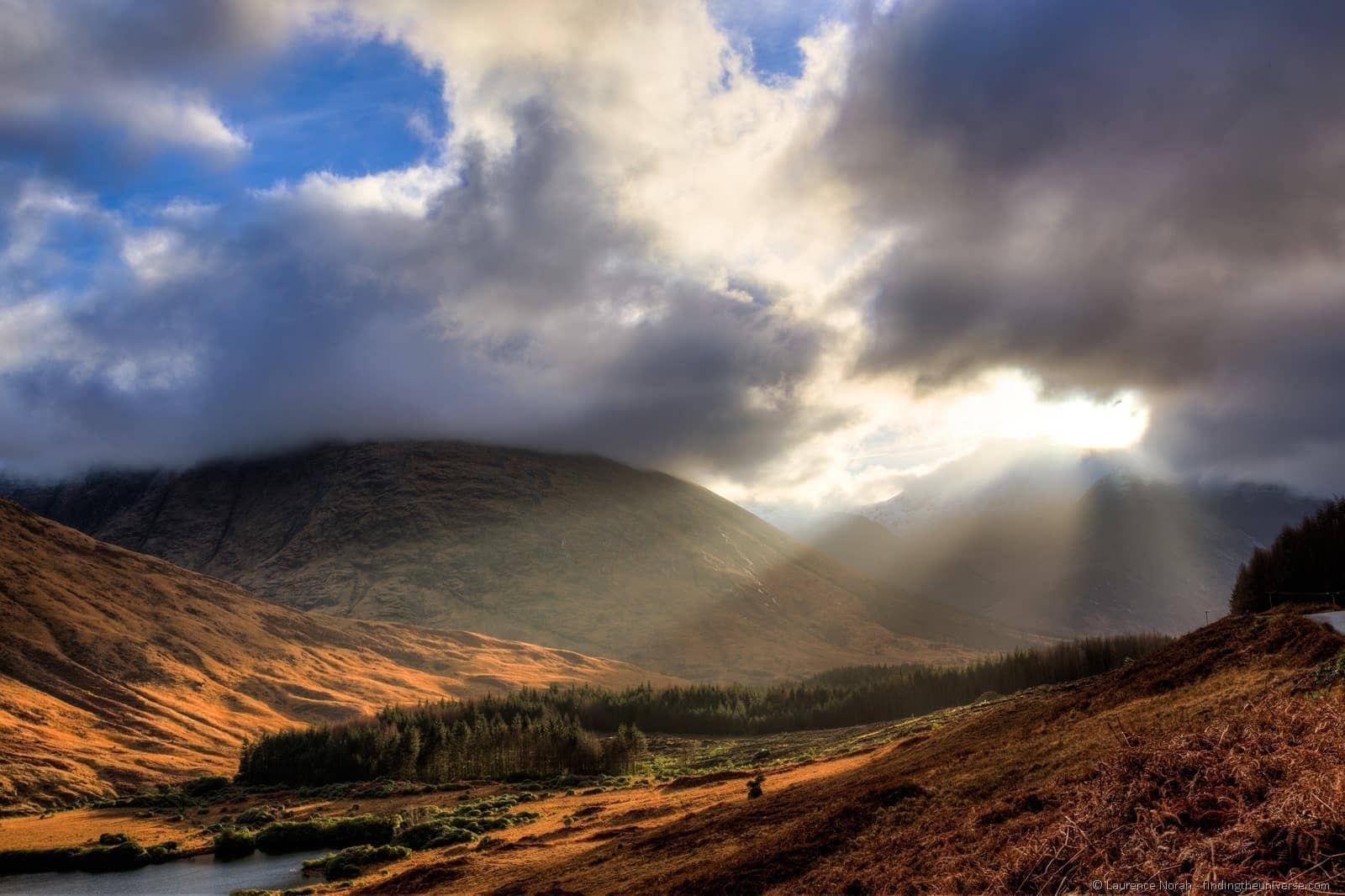
If you happen to be lucky enough to have a little bit of dramatic cloud cover, but not so much as to obscure the sun, then you could end up with some really stunning photos.
There’s no shortage of fantastic photography locations in Scotland to take advantage of the light. Some of our favourite locations to shoot include Glencoe , these photography location on the North Coast 500 , and these photo spots on the Isle of Skye .
For some tips for shooting at this time of year, see our guide to cold weather and winter photography .
Planning Advice for Visiting Scotland in Winter
Hopefully all of the above have given you some inspiration for planning your winter trip to Scotland. Now, to help you prepare for your trip, we wanted to give you some planning advice so you can make the most of your adventure.
When is Winter in Scotland?
Officially, the Scottish winter runs from the 21st of December through to the 20th March. However, you will usually experience wintery conditions from late October through to early March in our experience.
Weather in Scotland in Winter
Despite its northerly latitude Scotland has a relatively mild climate year round. This means you don’t get temperatures far below freezing in winter, or much above 25C / 77F in summer.
That said, winter in Scotland can certainly be cold, especially if the wind is blowing from the north, which can make the perceived temperature much lower. Snow in the lowlands is possible but uncommon, whilst in the Scottish highlands snow is more likely from December through to March. Rain is also a possibility throughout winter as well.
Temperature wise, from December to March you can expect temperatures in the range of just below freezing to around 12C / 53F.
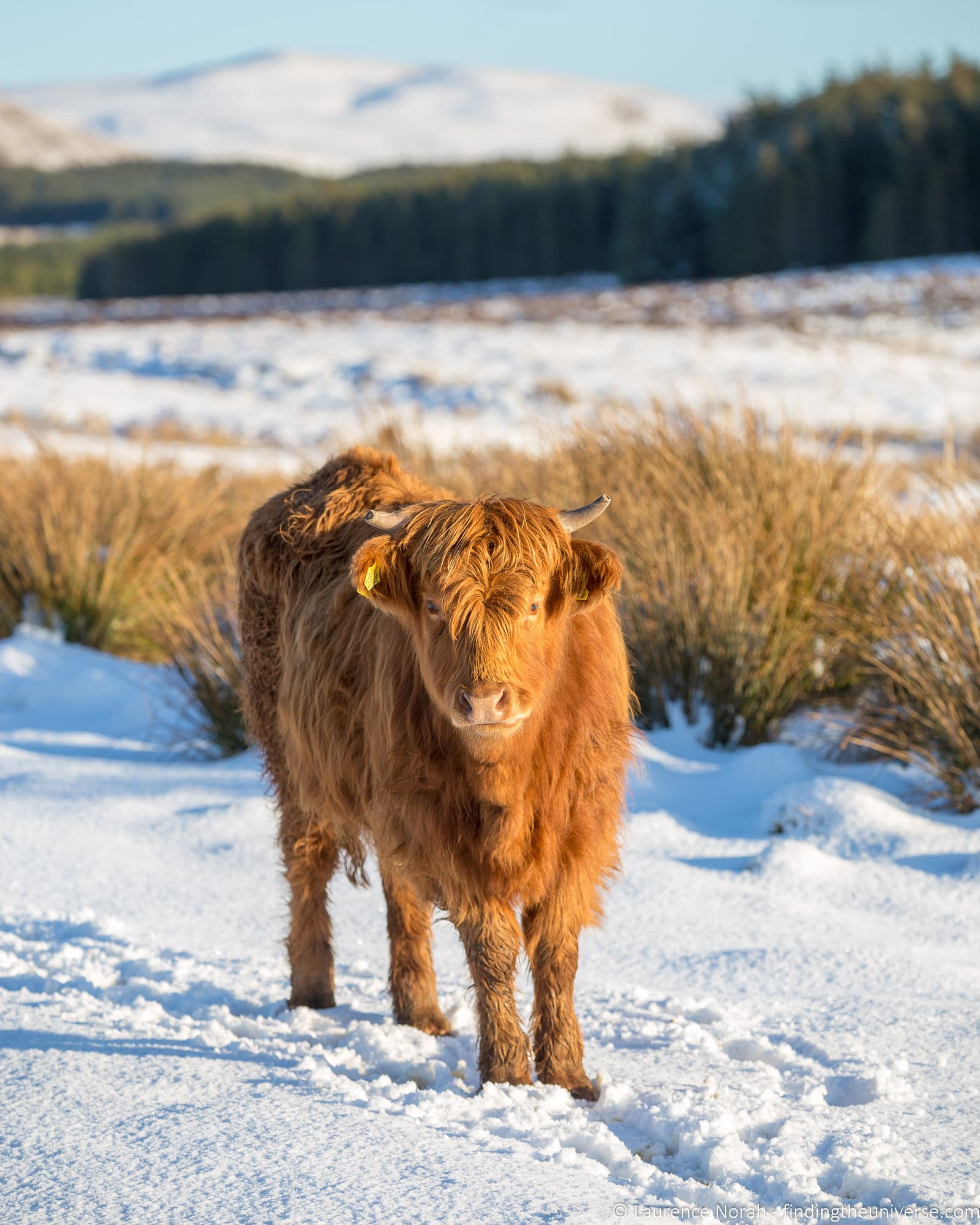
What to Pack and Wear in Scotland in Winter
As you see from the above, you can expect a range of weather conditions in Scotland in winter! As such, our advice is to pack a variety of lightweight layers that you can put on and take off as the conditions change.
We would suggest thermal base layers for the coldest days, a fleece mid-layer , and, perhaps most importantly, a warm coat . Qualities to look out for in a coat include wind and water proofing.
We would also suggest you bring a warm hat and a warm scarf , as well as a good pair of hiking pants . We have a guide to travel scarves here if you need some more inspiration!
Gloves are super important for keeping your hands warm. I use these which are specifically designed for photography, with a warm merino wool lining and magnetic finger caps.
For rain – we advise a rainproof jacket with hood or bring a poncho or very sturdy umbrella that can withstand wind. If hiking, bring a waterproof cover for your pack and gear.
For footwear, if you’re planning on hiking, then a sturdy pair of shoes are recommended, and we’d generally recommend waterproof shoes anyway as wet feet can quickly make a day miserable.
If you’re visiting Scotland from outside the UK, you are likely going to need a travel adaptor like this so you can plug your devices in. See more on travel adapters and how to choose one for your trip in our guide to the best travel adapters .
If you’re like us and have a lot of electronic gear, we suggest you travel with a power strip like this , which you can plug into your adaptor.
Daylight hours
This might seem obvious, but it’s worth remembering that Scotland in winter has far fewer hours of daylight than Scotland in summer.
For example, in mid December, you only get seven hours between sunrise and sunset. This is important to keep in mind if you are planning a road trip or other activities that are best done in the daylight. Our advice for this sort of trip is to reduce the number of things you try to do each day, and try to avoid driving at night if you can, as you’ll miss out on the scenery that you came here to see!
Driving Tips
Driving in Scotland in winter is definitely a different experience to driving in summer. In the northern parts of the country, and especially the highlands, snow is not uncommon, and icy conditions can make roads dangerous to drive on. Deer and other animals are also common on the roads after dark.
We’re not saying you shouldn’t drive in Scotland in winter, but you should definitely drive to the conditions, and stick to the more major roads where possible, which are more likely to have been treated for snow and ice. For more advice, see our guide to driving in the UK .
If you’d rather not drive yourself, there are plenty of group and private tours available in Scotland year-round. Our favorite company Rabbies is based in Edinburgh and offers day trip and multi-day trips throughout Scotland. Tours are often not full this time of year so it’s a good time to take one.
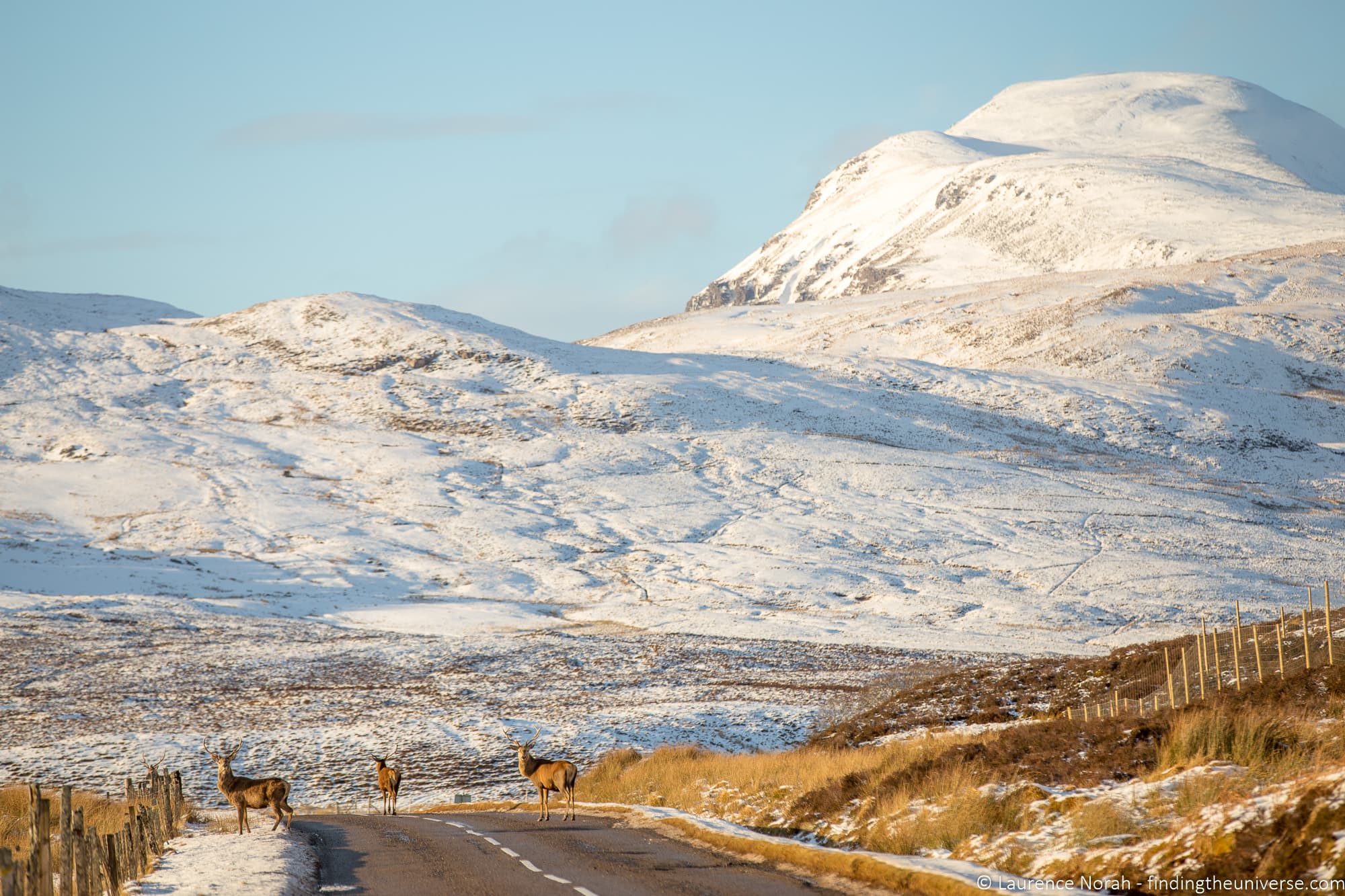
Where to Stay in Scotland in Winter
Finding accommodation in the major Scottish cities in winter shouldn’t be a problem, as the majority of the hotel and other accommodation options are open year round. The only time of year where accommodation becomes a bit harder to find in the cities is around New Years Eve, particularly in Edinburgh, where the city becomes very busy. See Edinburgh’s listings on booking.com here .
The story is a bit different when you head out of the cities, and particularly into the highlands of Scotland or the North Coast 500 driving route.
In these regions, a lot of properties have traditionally closed over the winter periods, especially the B&B’s and smaller guesthouses. This is either because they are unable to get staff, or because there hasn’t been enough visitors at this time of year to make opening.
This presents the traveller with both challenge and opportunity. The challenge is to find properties that are open. The opportunity is that many hotels offer incredible deals at this time of year – especially the higher end properties that stay open year round.
As examples of some hotels we’ve stayed at for fantastic deals in the winter months, take a look at Inverlochy Castle near Fort William or Bunchrew House near Inverness. Otherwise, it’ll just be a question of putting your dates in to booking.com and planning ahead. We know that one of our favourite B&B’s on the North Coast 500 is open year round for example.
For more interesting accommodation options, take a look at either Plum Guide or AirBnB .
Plum Guide doesn’t have quite so many choices, but they carefully curate their listings so their options tend to be of a very high quality whilst still being available at a range of price points. See their listings for Scotland here .
We’ve also used AirBnB all around the world, and they consistently have the most options to choose from. See their listings for Scotland here .
If you can’t find what you want from the above choices, or you want some new options to try out, we wrote a whole post on the best alternatives to AirBnB which you should check out. We also have a guide to holiday cottages in the UK for specific UK focused options.
Further Reading
Hopefully this post has given you some ideas of what to do in Scotland in winter! To help you further plan your trip we have written a number of other posts about travelling in Scotland and the wider UK . Here are some to get you started.
- For Edinburgh, we have a guide to winter in Edinburgh , as well as guides to Hogmanay in Edinburgh , Christmas in Edinburgh , and a general guide to things to do in Edinburgh
- For Glasgow, we have a guide to things to do in Glasgow , a suggested 2 day Glasgow itinerary, and a guide to our favourite day trips from Glasgow
- We also have a guide to things to do in Aberdeen and the best day trips from Inverness
- If you’re looking for road trip inspiration, we have a Skye and Highlands itinerary , a guide to the North Coast 500 , a 3 day North East 250 road trip itinerary and a 5 day NC500 itinerary to get you started!
- We have a detailed guide to visiting Glen Coe which has everything you need to plan your trip
- We also have lots of content across the wider UK, including a 2 week UK road trip itinerary , a guide to visiting Oxford , a 3 day London itinerary and lots more!
- For general planning information, see our guide to the cost of travel in the UK , as well as our guide to driving in the UK .
- Finally, if you would like a guidebook for your trip, we recommend the Rick Steves Scotland guide
And that’s it! As always, we’d love to hear your questions and feedback about this post, or travelling in Scotland in general. Just use the comments section below, and we’ll get back to you as soon as we can!
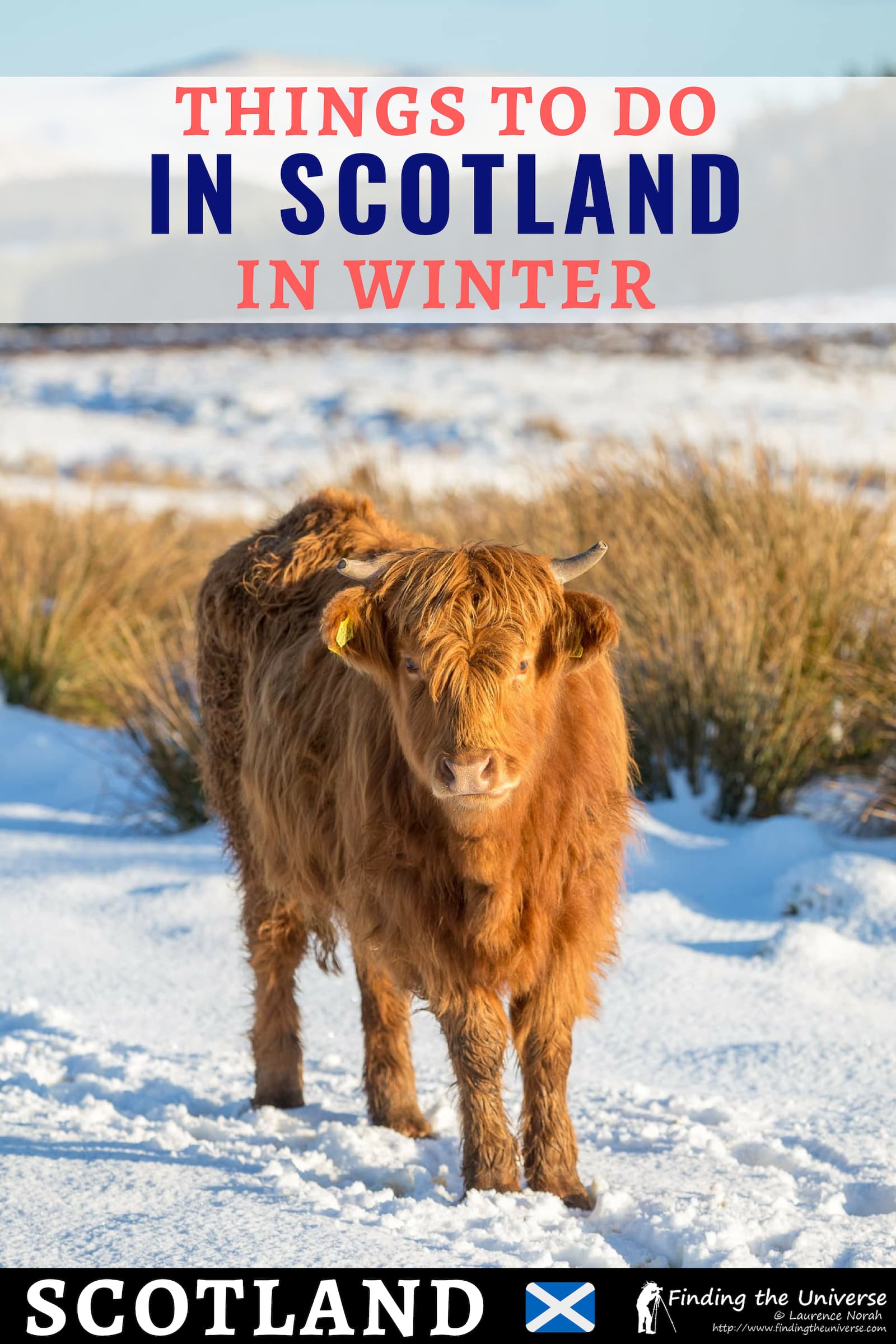
Enjoyed this post? Why not share it!
There are 13 comments on this post
Please scroll to the end to leave a comment
Graeme Stewart says
26th October 2023 at 11:36 am
If you want to see the aurora borealis then I would recommend https://aurorawatch.lancs.ac.uk/ which tracks geomagnetic activity and can give advance warning when it will appear. One thing to be aware of is that the Scottish mountains, while not high, can have close to artic conditions on the tops. There is only a few hundred miles of sea between them and Iceland and it’s the wind that is the real problem. You can get 20 degrees C of wind chill.
Laurence Norah says
26th October 2023 at 1:23 pm
Thanks for your tips Graeme, and I agree, Scottish mountains can be cold places for sure!
Debbie Allen says
23rd October 2019 at 11:09 am
Hi, Love reading about your travels. Can I please ask a question? We’re travelling to Scotland in December and will be in Edinburgh for Hogmanay. It’s part of a larger European trip for our family of 5, kids aged 22, 17 and 12. We’ll have an extra 4 days and were hoping to see the Highlands but I’m unsure about where to base ourselves pending the unpredictable weather! I currently have Inverness and Dunkeld booked to use as a base but obviously need to pick one. What would be your recommendation pls? We’re from Australia so driving on the left is no problem. Snow and ice might be though! Thanks so much
24th October 2019 at 12:45 pm
Thanks very much 🙂
My recommendation would be to book Inverness – it’s an excellent base for a number of day trips, including Loch Ness, Fort George, the Black Isle, Cairngorm national park and so on. We actually have a guide to day trips from Inverness for some ideas. Plus the city has lots of places to eat and some indoor attractions (although you’ll want to check opening hours over Christmas). Have a wonderful time!
Meghan Macer says
20th October 2019 at 10:17 pm
Hi there, we hope you can help!! My husband and I would like to take our 4 boys (ages 3-13) to Scotland for Christmas. We only require 3 things within a close proximity to a holiday let: snow, otters and a good pub. Of course, we’re not afraid to journey out and drive for adventure. We’ve been searching and are definitely overwhelmed with narrowing down. PLEASE HELP!!!!!!!
20th October 2019 at 10:24 pm
I will certainly try 🙂 My instinctive reaction as soon as I read your comment was to suggest the Cairngorms National Park. This is where you are likely to find the most reliable snow in Scotland (although it is by no means guaranteed unfortunately). Otters are of course tricky, but the Cairngorms are a good place for a chance. We can recommend a company called Speyside Wildlife who do tours, but please don’t get your hopes too high for otters. That said, red squirrels, badger etc are more of a possibility. There’s even a reindeer herd – can’t get more Christmas than that! Naturally there are also plenty of pubs!
Glencoe / Fort William area is another option, but I’d focus on the Cairngorms if I were you.
Let me know if this helps 🙂
20th October 2019 at 10:47 pm
Thanks very much! Ok- I also have a budding astronomer who has mentioned the Northern Lights. I’m also googling the heck out of this… any recommendations? Northern lights plus snow and a toy otter might just tick all the boxes!!
20th October 2019 at 11:17 pm
My pleasure! So the northern lights can be seen in Scotland, but they are pretty rare! I’ve only seen them myself a couple of times over three years – the problem is getting the right combination of clear skies and activity is difficult. But the Cairngorms would be a good location as they are relatively far north and there isn’t much light pollution 🙂 I wouldn’t plan around seeing them though!
Robert Walker says
12th May 2019 at 10:32 am
Hi, loved you article, so informative thank you. I’m planning a small family reunion in Scotland over the Xmas period and visualised a snowy castle with big open fires and cosy sofas with plenty of walks nearby. Any suggestions? Thanks, RW.
12th May 2019 at 7:15 pm
We’re big fans of Inverlochy Castle, which should fit the bill pretty well. It’s near Fort William and there are lots of walks as well as snowy mountains nearby.
Just be aware that most hotels over Christmas in Scotland will require booking well in advance, and will likely have a special package that will include a minimum number of nights stay 🙂
Have a wonderful trip!
travlermb says
25th January 2019 at 12:04 pm
Great article as always…..have to get back to Scotland soon!
Question: Where to stay…particularly up north? Do many places close for the season? Thanks
25th January 2019 at 2:33 pm
Thanks very much! This is a great question 😀 So good that I’ve added a whole section to the post about it. You are correct though, many places do close for the season, although we have driven the northern parts of Scotland in February and have always found options. Some of the really nice hotels also do incredible deals at this time of year, so you can stay in luxury castle hotels at a fraction of the price that you would pay at the rest of the year 😀
26th January 2019 at 12:15 am
Wow, very fast response! Thanks for the additional information…..
Leave a Reply Cancel reply
Your email address will not be published. Required fields are marked *
Let me know when there's a reply to my comment (just replies to your comment, no other e-mails, we promise!)
Subscribe to our monthly Newsletter where we share our latest travel news and tips. This also makes you eligible to enter our monthly giveaways!
We only ask for your e-mail so we can verify you are human and if requested notify you of a reply. To do this, we store your data as outlined in our privacy policy . Your e-mail will not be published or used for any other reason other than those outlined above.
- Destinations
- Where to Stay
- See & do
- My dashboard
- Planning tools
- What's nearby
- My favourites
- Log your travels
- Weekly journal

February in Edinburgh By Shawna Law -->
By Shawna Law
February in Edinburgh
Writen by Shawna Law
The days are slowly lengthening, temperatures inching up, and snowdrops are peeping their heads above ground, reminding us that Spring will soon be on its way. In the meantime, February promises a range of wonderful events in Edinburgh

Scottish Snowdrop Festival (throughout February, Various Locations)
Taking place between 25th January to 11th March, the Scottish Snowdrop Festival is celebrated in gardens across the country. In Edinburgh, the Royal Botanic Garden is one of the best places to admire the emergence of the dainty white flowers in their various varieties.
MANIPULATE Festival (28th January-5th February, Various Locations)
MANIPULATE Festival is back and will host the very best of Scottish and international puppetry, visual theatre and animated film to adult audiences in Edinburgh and beyond.
Edinburgh International Improv Festival (18th-20th February, Scottish Storytelling Centre)
The Edinburgh International Improv Festival will be held at the Scottish Storytelling Centre and offers three days of workshops and shows celebrating the best in improv from around the world.
Scottish Blues Weekend (18th-20th February, Assembly Roxy)
The Scottish Blues Weekend is back and will take place on the third weekend in February, both online and in-person. The festival will host ten of the best Scottish blues bands with a closing concert from award-winning blues guitar phenomenon Mike Zito at Assembly Roxy.
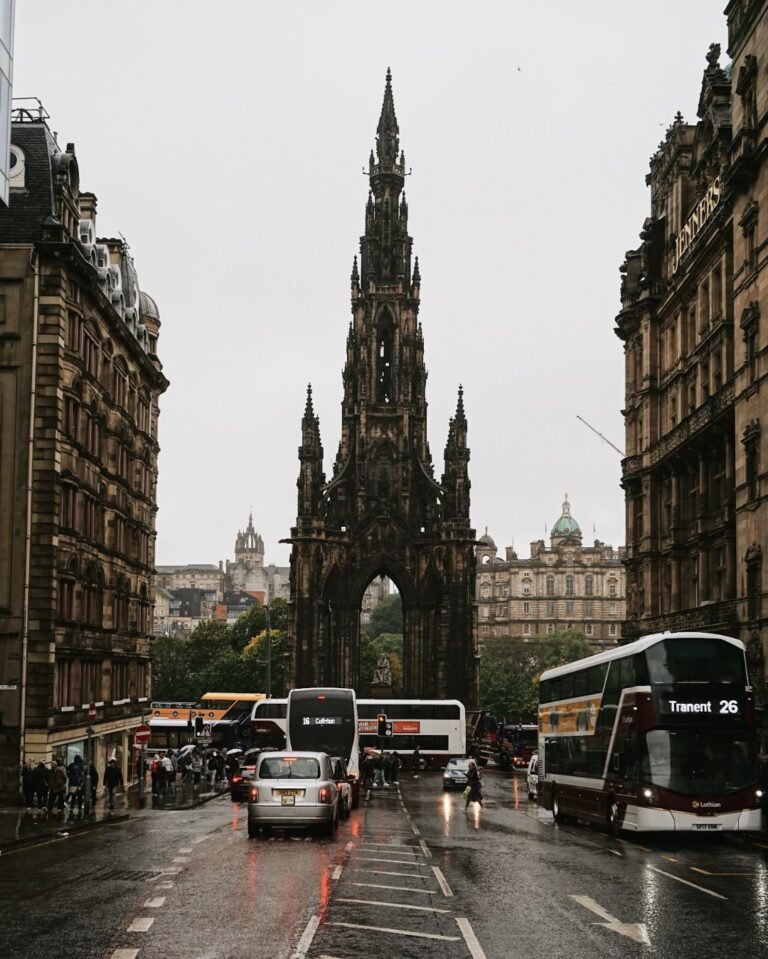
ENTERTAINMENT
The days are beginning to lengthen but February is also known for its unpredictable weather so, it’s the ideal time to visit a few art exhibitions, spend an evening at a show, or attend a concert. Here are just a few events and exhibitions to keep in mind.
Jazz Sundays (every Sunday at 5pm, Söderberg Pavilion)
The Art of Wallpaper – Morris & Co. (throughout February, Dovecot Studios, £10.50)
H-E-L-L-O by Cauleen Smith Exhibition (throughout February, Collective, Free)
Ray Harryhausen ‘Titan of Cinema’ (until 20 th February, Scottish National Gallery of Modern Art – Modern Two, £14)
The Lion, the Witch and the Wardrobe (8th-12th February, King’s Theatre, From £21.50)
Bat Out Of Hell (8th-19th February, Edinburgh Playhouse, £22)
Valentine’s Vivaldi by Candlelight (11th February, St Giles Cathedral, from £19)
Audubon’s Birds of America (from 12 th February, National Museum of Scotland, £10)
The Mansfield Traquair Centre Open Day (13 th February, Mansfield Traquair Centre, Free)
Bedknobs and Broomsticks (16 th –20 th February, Festival Theatre, from £26.50)
Exhibition: Our Voices (19 th February, Fruitmarket Gallery, Free)
The Rocky Horror Show (21 st –26 th February, King’s Theatre, from £31.50)
The Late Show @ The Comedy Attic (26 th February, Beehive Inn, £10.15)
SEASONAL EVENTS IN FEBRUARY
Unlike the past few months, February is a quieter month with regard to seasonal events. However, for those that celebrate, there are a few Valentine’s Day-themed events plus the Six Nations is back! #BackingBlue
Six Nations at the Ghillie Dhu (5th February-19th March, Ghillie Dhu)
The Ghillie Dhu is hosting its annual Six National celebrations. Watch every minute of Scotland’s latest adventure live on the Ghillie Dhu’s big screens with plenty to eat and drink.
Casablanca (13 th February, Cameo Filmhouse)
If you enjoy classic movies, The Cameo Filmhouse will be showing one of the greatest film romances, Casablanca, this month as it was the Valentine’s movie of choice by the cinema’s members.
GALentines Punch Needle Art Workshop (13th February, We Make)
Not a fan of Valentine’s Day? Why not grab a few of your friends and take part in a fun workshop. We Make are hosting a Punch Needle Art Workshop where you’ll enjoy a cosy and creative afternoon over a glass of prosecco!
Valentine’s Moonlight Sonata by Candlelight (14th February, St Giles Cathedral)
St Giles Cathedral will be filled with the music of Beethoven, Chopin, Gershwin and Rachmaninov, played by British concert pianist, Daniel Grimwood, under the warm flicker of candlelight.
LITERARY EVENTS IN FEBRUARY
Edinburgh is known for its rich literary history with many well-known authors calling the city home for a period of time. Both new and second-hand independent bookshops are an integral part of the city and several host regular literary events, here are a selection:
Topping & Company (2 Blenheim Place)
Beginning with Edinburgh’s largest independent bookshop, Topping & Company will be welcoming two authors this month: Kate Humble (16th February) will be chatting about her new book ‘Home Cooked’ a celebration of simple, seasonal home cooking and Louise Welsh (23rd February) with her book ‘The Second Cut’, a thrilling look into the dark side of the twenty-first century Glasgow.
Lighthouse Bookshop (43-45 W Nicolson Street)
Lighthouse Bookshop has arranged five interesting literary events for February including ‘Me & White Supremacy: The Young Adult Edition and Other Fruit’ (Online, 10th February), ‘Blueberries: A Night with Ellena Savage’ (10th February), and ‘Women In Translation: Fragments of Sappho’ (21st February).
Blackwell’s Bookshop (53-62 South Bridge) As well as Blackwell’s monthly book quiz (7th February), Dr Elizabeth Cripps, senior lecturer at the University of Edinburgh, will be discussing her new book ‘What Climate Justice Means and Why We Should Care’ (3rd February) and Donald Thomson will be performing pieces from his brand-new publication ‘Celtic Piano Music’ (12th February).
Portobello Bookshop (46 Portobello High Street)
Lastly, Portobello Bookshop is welcoming three authors this month including Louise Welsh with her novel ‘The Second Cut’ (3rd February), Elle McNicoll for the launch of her third middle-grade book ‘Like A Charm’ which is set in Edinburgh (4th February), and an online event with Alex Hyde in celebration of her debut novel ‘Violets’ (10th February).
MARKETS IN FEBRUARY
Edinburgh is fortunate to have a variety of weekly neighbourhood markets to visit. With things the way they are, it’s unsure if all of these markets will all go ahead as planned so, please check their websites before you visit.
Grassmarket Market (every Saturday, from 10am-5pm) A weekly market offering freshly baked goods, seasonal produce, and local craftwork.
Leith Market (every Saturday, Dock Place, from 10am-5pm)
Sitting beside the Shore, Leith’s weekly market hosts predominantly food stalls as well as a few local makers.
Stockbridge Market (every Sunday, Saunders Street, from 10am-5pm) Stockbridge is one of Edinburgh’s busiest markets selling a range of street food and lifestyle products.
Edinburgh Farmers’ Market (every Saturday, Castle Terrace, from 9am-2pm) Drop by Edinburgh Farmers’ Market to browse seasonal produce such as fruit, vegetables, locally sourced game, and more.
The Pitt Street Food Market (every Friday-Sunday, Pitt Street) This hugely popular street food market is back and will be hosting a range of street food traders with live music.
Sunday Clothes Swaps (13th February, SHRUB Coop) Sunday Clothes Swaps is a monthly clothes swap market where you can browse and exchange clothes and accessories. The café will also be open for hot drinks and delicious vegan baked goods!
The Edinburgh Kilo (19th February, The Out of the Blue Drill Hall)
Head along to Out of the Blue Drill Hall to browse a huge range of vintage, retro and branded fashion for £20 per kilo. Don’t forget to bring a tote bag and book ahead of time as the event is ticketed to help maintain social distancing.
WORKSHOPS IN FEBRUARY
Edinburgh is filled with a host of creative individuals and if you’d like to learn from them and discover a new hobby or hone a skill, here are just a few suggestions to inspire you:
EDINBURGH WELCOMES
- Locavore Edinburgh (118-126 Dalry Road)
- Haar Restaurant Edinburgh (69 N Castle Street)
- Kestin (7 Baker’s Place, Stockbridge)
- Twelve Triangles (9 Comely Bank Road, Stockbridge)
- Krem Karamel Cafe & Bookshop (68 Inverleith Row, Canonmills)
- Ocelot Chocolate Shop and Café (Coming Soon to 11A Portgower Place)
- Banh Mi Bar (Coming Soon to Bruntsfield)
- Argonaut Books (Coming to 15-17 Leith Walk in March)
- Krema Bakehouse (Coming Soon to 21 Leith Walk)
- Fortitude Coffee (Coming Soon to Newington Road)

Written by Shawna Law

No listings with this search
HIDDEN SCOTLAND
Follow us on Instagram

Your journey awaits
Join our mailing list to receive our weekly journal, where a journey of discovery awaits.

- The Magazine
- My Travel Stories
- Where to stay
- Things to do
- Tours to take
- Exclusive Use Venues
A 2 NIGHT STAY
AT THE GART MANSION

This prize includes a champagne reception, three course meal and a breakfast hamper on both mornings. And is worth over £10,000.
Already have an account? log in here
You are now signed up for the Hidden Scotland Journal, a free weekly email. Would you also like to gain free access to the full features of Hidden Scotland? To find out more sign up below.
Join Hidden Scotland Today
Already have an account ? Log in here
By entering your email, you agreee to recieve marketing emails from Hidden Scotland
or sign up with email
Sign In To Hidden Scotland
Don't have an account ? Sign up here

13 BEST Things to do in Scotland in Winter
From wild walks and hikes, to mind-blowing events in the cities, scotland in winter is full of great things to do – just remember to wrap up warm .
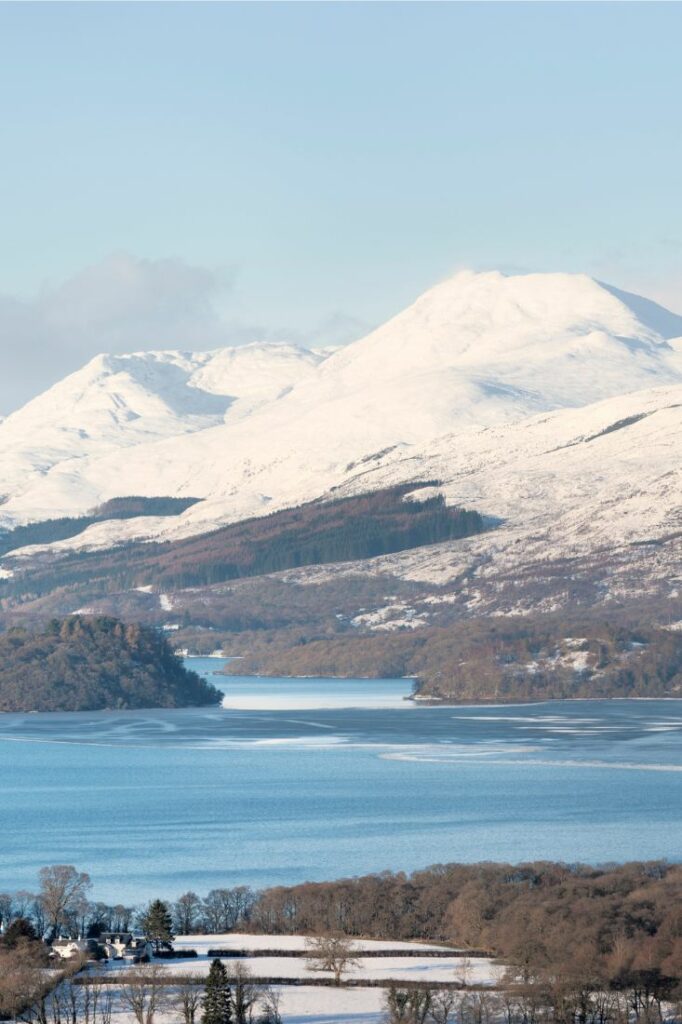
If you love exploring the great outdoors, then warming up by a cosy log fire, then Scotland in winter is the place for you! Whether you want to hit the slopes with some fresh snow, take part in massive cultural festivals, or see nature at its finest, you need to visit Scotland during the winter months.
Some of the best-loved Scotland winter activities take place out in nature. Personally, I love wrapping up in a huge coat and gloves for a snowy hike or for a ski session, before heading to a local pub to sit by a roaring fire and sip a wee dram of whisky. Sounds festive, right?
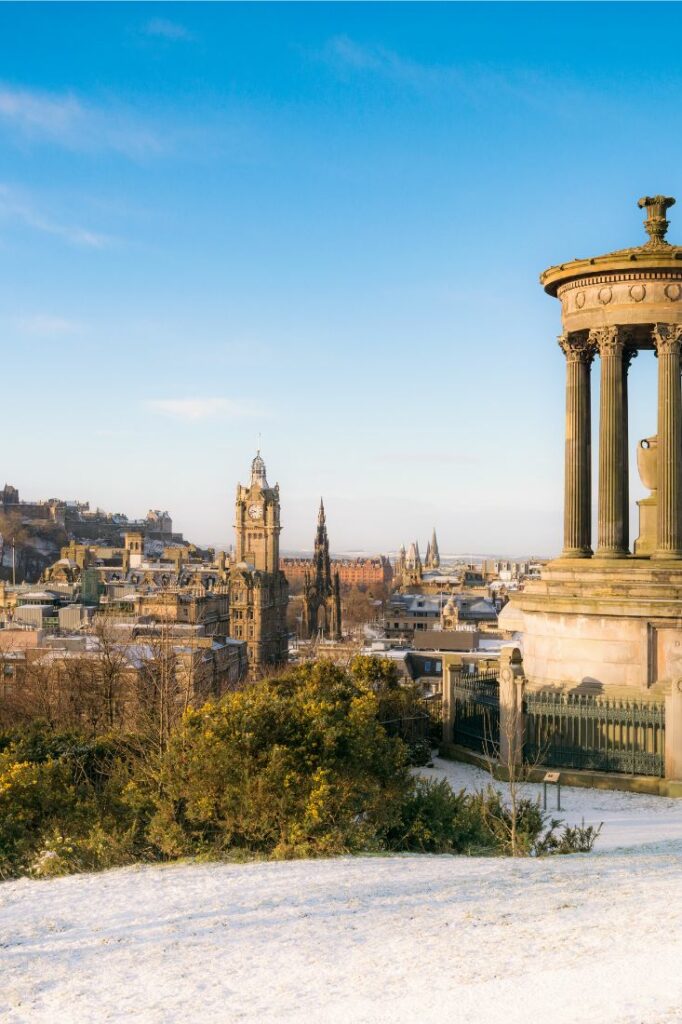
From diving into Viking festivals in the Shetland Island or learning a new snow sport in Glencoe, to celebrating Scotland’s most famous poet in Edinburgh , I know you’re going to find a winter activity in Scotland that you absolutely love.
So, let’s dive right in and check out some of the best things to do in Scotland in winter.
If you’re planning a visit for a different time of year, don’t miss our guide to the best things to do in Scotland in summer , our top picks for autumn and our favourite places to visit in Scotland in spring .
Scotland winter weather
There’s no getting around the fact that Scotland in winter is cold. In fact, you can expect highs of 5°C (41°F) – yep that’s the high… so you’ll need to pack all your winter warmers! You’re likely to encounter some snowfall during the winter months, with around 10-20 snowy days throughout the season. This rises to an average of 40 snowy days if you’re up in the Highlands where the ski resorts are.
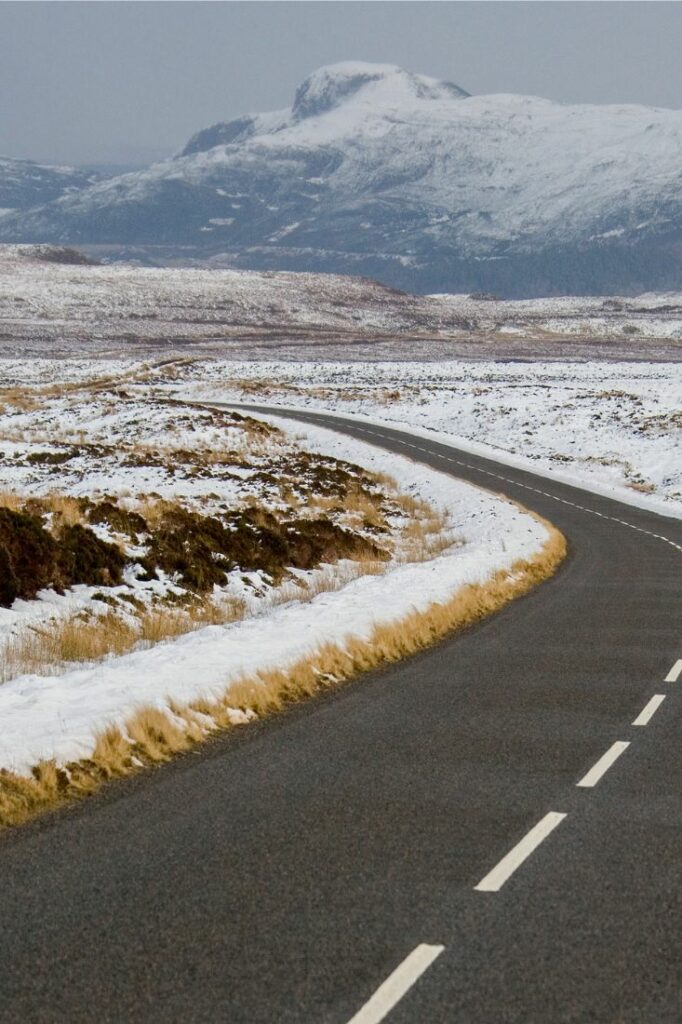
Best things to do in Scotland in winter
Welcome in the new year at hogmanay.
If you find yourself in the Scottish capital around New Year’s Eve, you’re in for a treat. Honestly, I think Hogmanay is one of the best New Year’s celebrations around. With tons of fireworks, music, ceilidhs, drinking, and just general fun, it’s the perfect way to welcome another year.
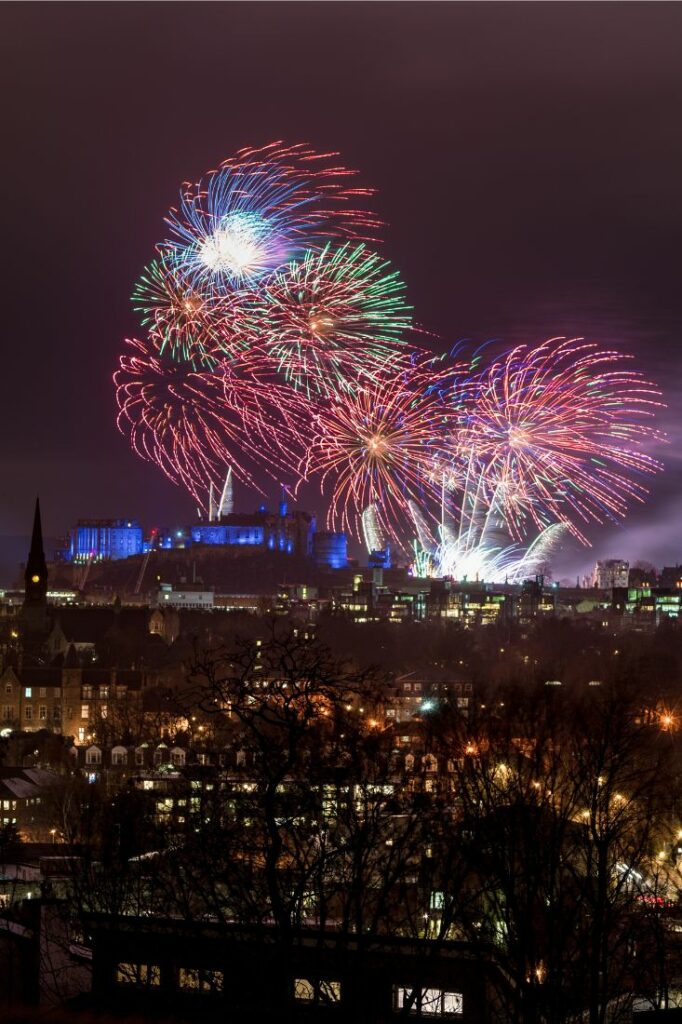
Be aware that prices for accommodation do go through the roof around Hogmanay so it’s best to book as early as possible.
Check out the slopes at the Cairngorms National Park
One of the best Scotland winter activities in skiing. Yes, you can absolutely ski in Scotland, and the Cairngorms National Park is one of the best places to do it! In fact, Cairngorm Mountain is commonly listed as the best ski area in Scotland for beginners.
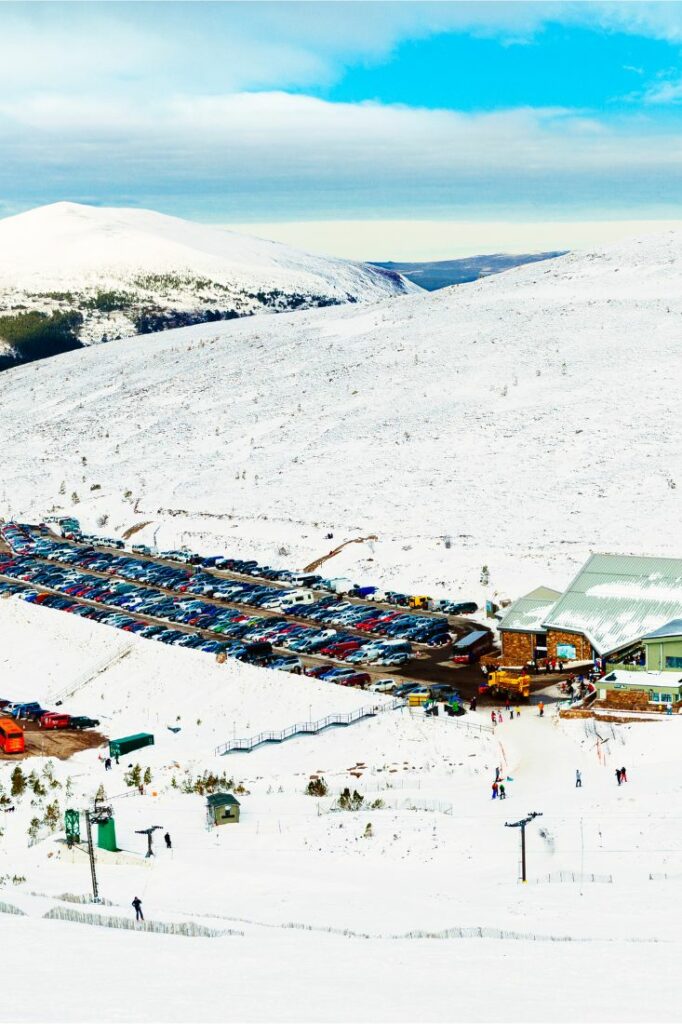
So, whether you’re a complete novice or you want to get some time on the slopes in the UK, January and February are both great months for skiing in Scotland.
Celebrate Burns Night in Edinburgh
Are you going to be in Scotland around the 25th of January? Well then, you’re going to have a front-row seat to Burns Night , celebrating Scotland’s most famous national poet, Robert “Rabbie” Burns.
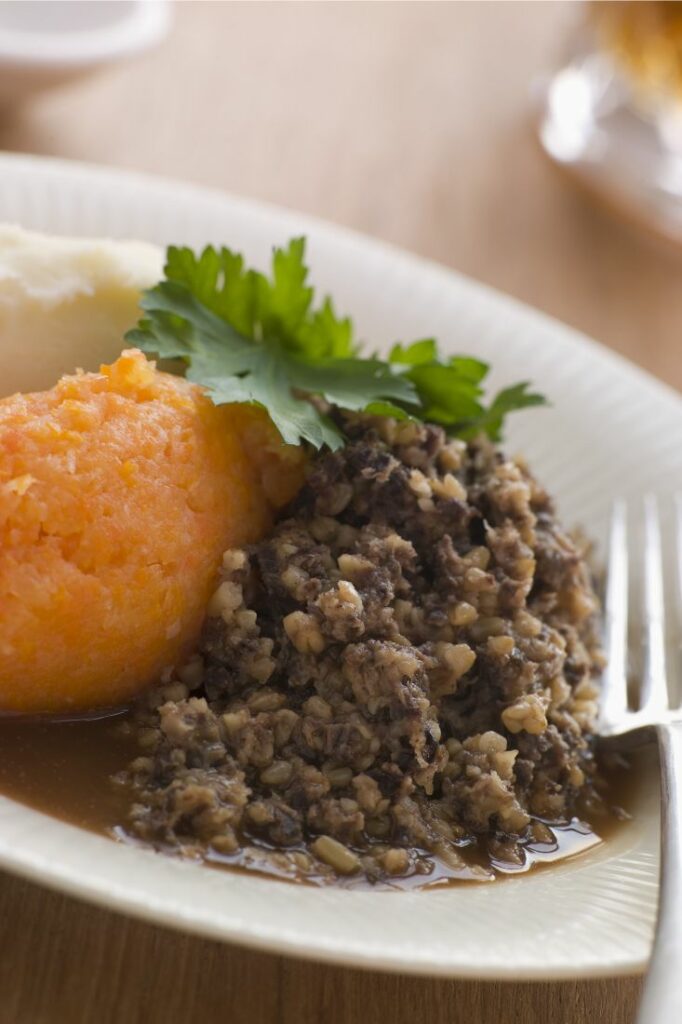
Burns Night is all about celebrating Scottish traditions, from festive ceilidhs to eating your weight in haggis, neeps, and tatties. Wash it all down with some classic Scotch and you’re going to be celebrating like a local in no time.
Experience the Northern Lights in Glencoe
You might not be aware, but you actually can see the Aurora Borealis in Scotland in winter! The general rule of thumb is that the further north you go, the greater your chances are.
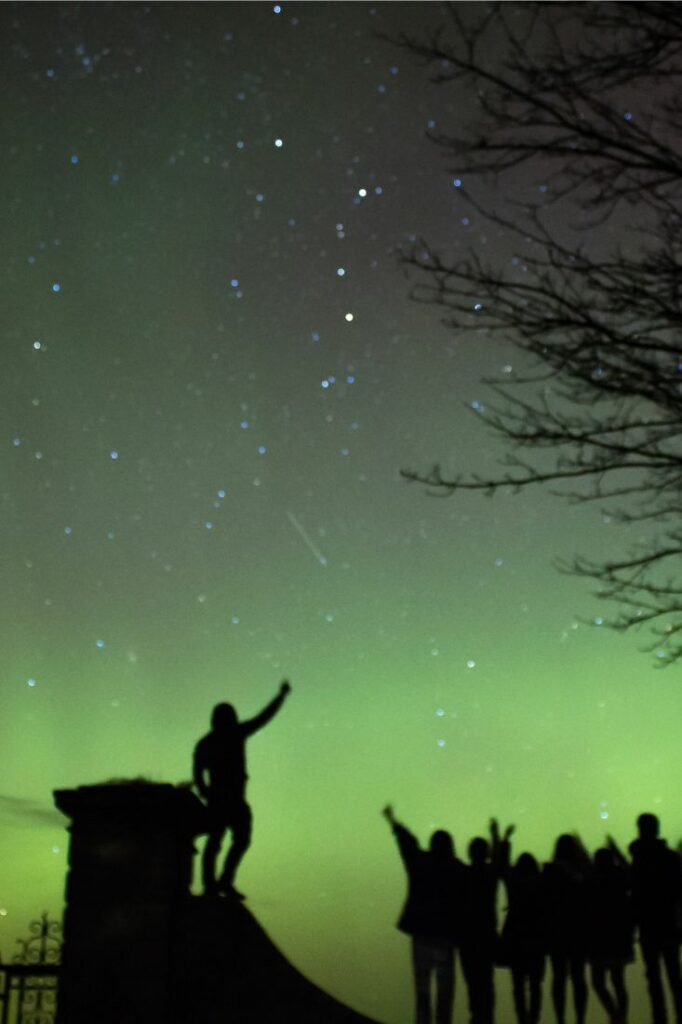
That being said, Glencoe in the Scottish Highlands is consistently one of the best places to see the Northern Lights in Scotland in winter. That’s because there’s pretty much zero light pollution for miles around and the higher altitude means that on a clear night, you’ve got an unobstructed view of the Aurora!
Get in the festive spirit at Glasgow’s Christmas Markets
Want to get in the festive spirit? Head to Scotland’s second city, Glasgow during November and December for their amazing Christmas Markets. Glasgow’s well known for its art scene and architecture so it’s the perfect backdrop for a winter getaway.
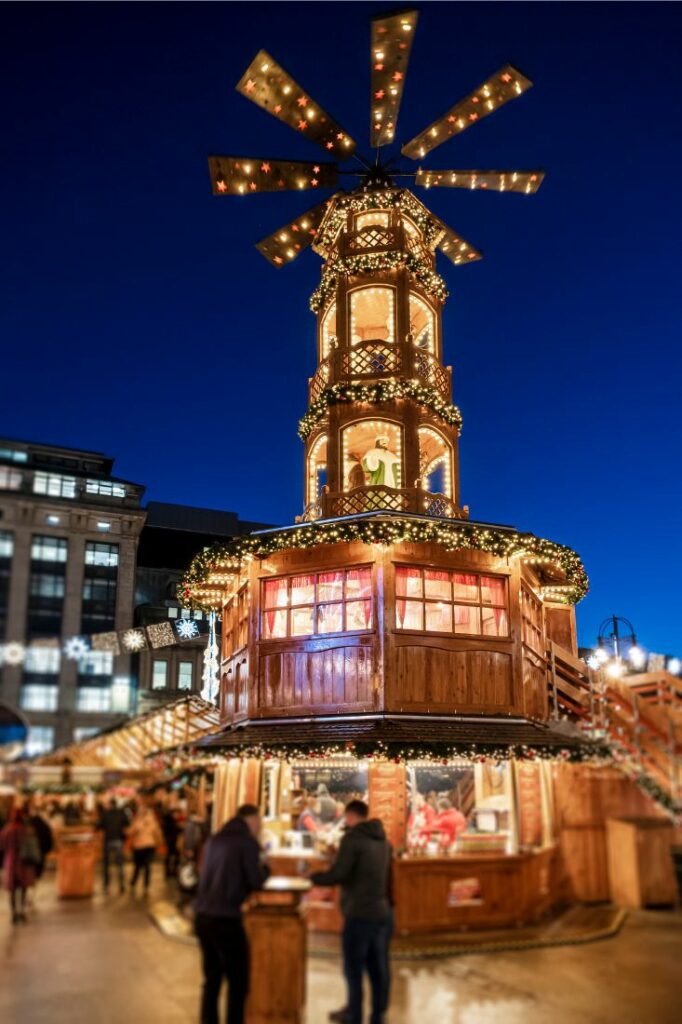
Indulge in a big mug of mulled wine, get a bratwurst or bag of candied almonds, and wander around the stalls in the evening. It’s an ideal way to get in the Christmassy mood!
Check out the Up Helly Aa Viking festival in the Shetland Islands
Now, if you’re an intrepid enough explorer to travel up to the Shetland Islands in the far north of Scotland during winter, you’ll be rewarded with a festival like no other. As the Shetlands used to be home to Vikings, there are festivals and traditions that celebrate that culture.
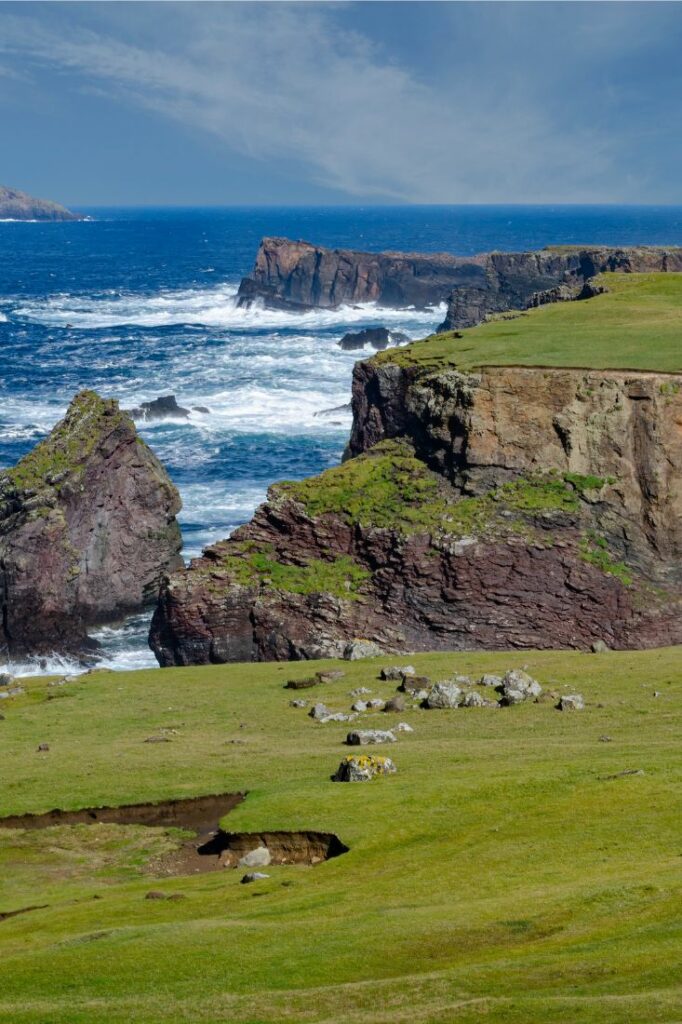
There’s no Scottish Viking festival better than Up Helly Aa , held in Lerwick on the last Tuesday in January. With huge fire displays, processions, music, dancing, and drinking, it has to be seen to be believed!
Try snowshoeing in the Scottish Highlands
If you’re not keen on skiing or snowboarding and want to try a less intense snowsport, why not try out snowshoeing in the Scottish Highlands? Snowshoeing is a sport popular in the US and in Europe. You just clip the grippy contraption onto your boots. Once on, you can explore snowy hiking trails with relative ease.
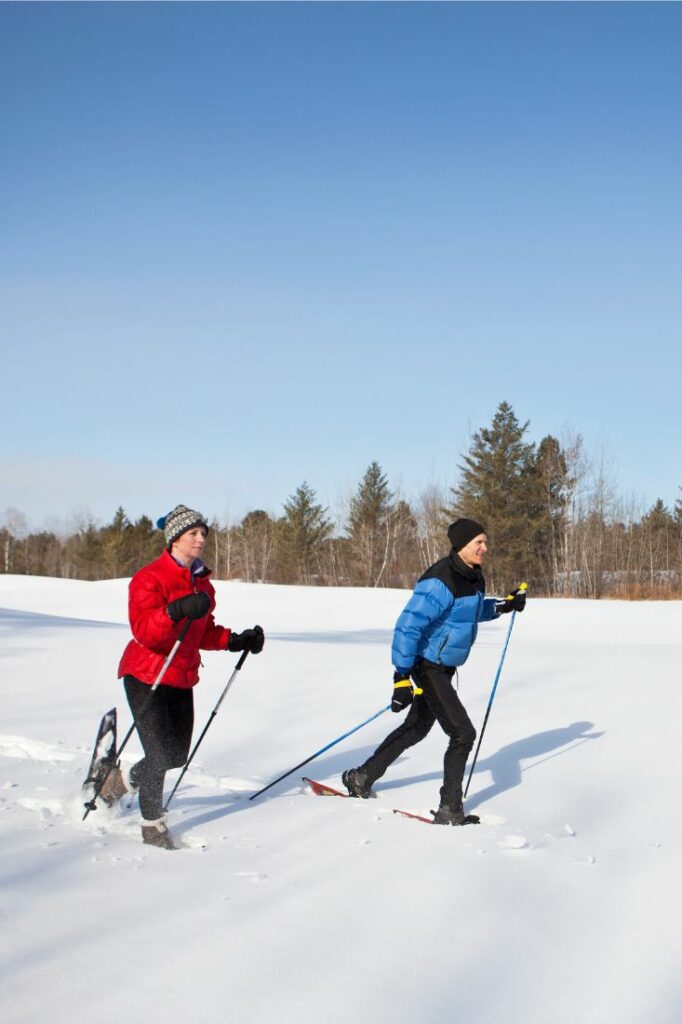
There are popular and established snowshoeing trails all around the Scottish Highlands, including around Glencoe and near the base of the mighty Ben Nevis !
Enjoy a winter road trip on the West Coast
Now, you might not think that winter is the best time for a road trip through Scotland, but it can be pretty liberating to see the natural beauty without the crowds. Snow can be an issue, so pop on some winter tyres or bring some snow chains with you. If you stick to coastal routes, you’re less likely to have issues.
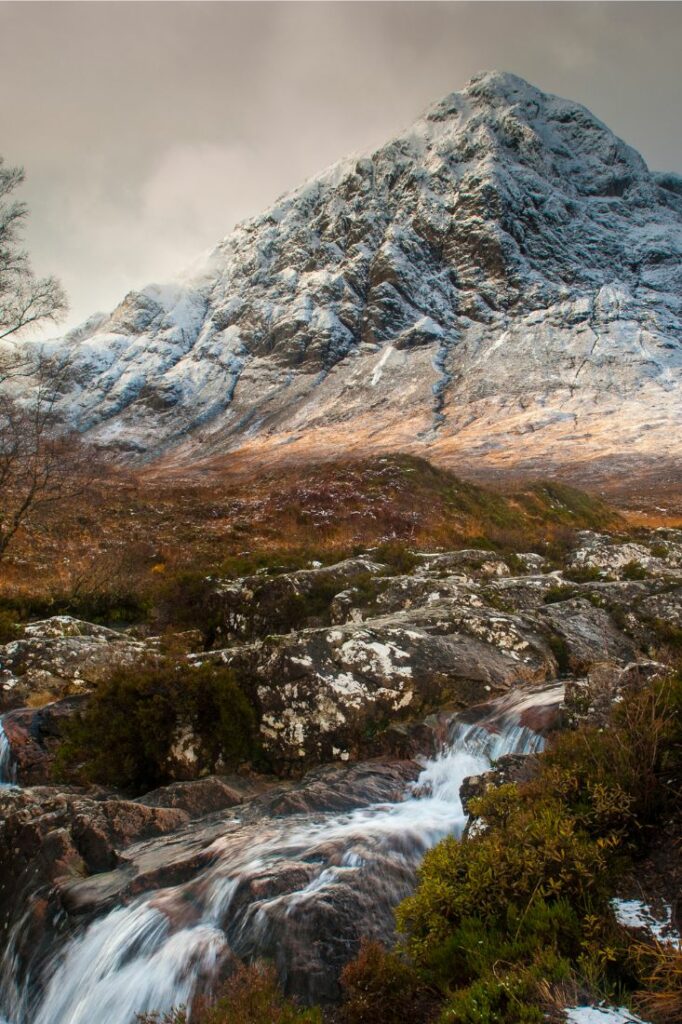
The west coast of Scotland includes places like Fort William, Glencoe, Oban, and the Western Islands like the Inner Hebrides. These are all beautiful spots to visit, especially with a dusting of snow on the tops of the mountains!
Dive into history at Edinburgh Castle
If you’re staying in Scotland’s beautiful cities, why not dive into some history and culture? The beautiful Edinburgh Castle is considered one of the best Scotland winter activities and is perfect for a rainy day.
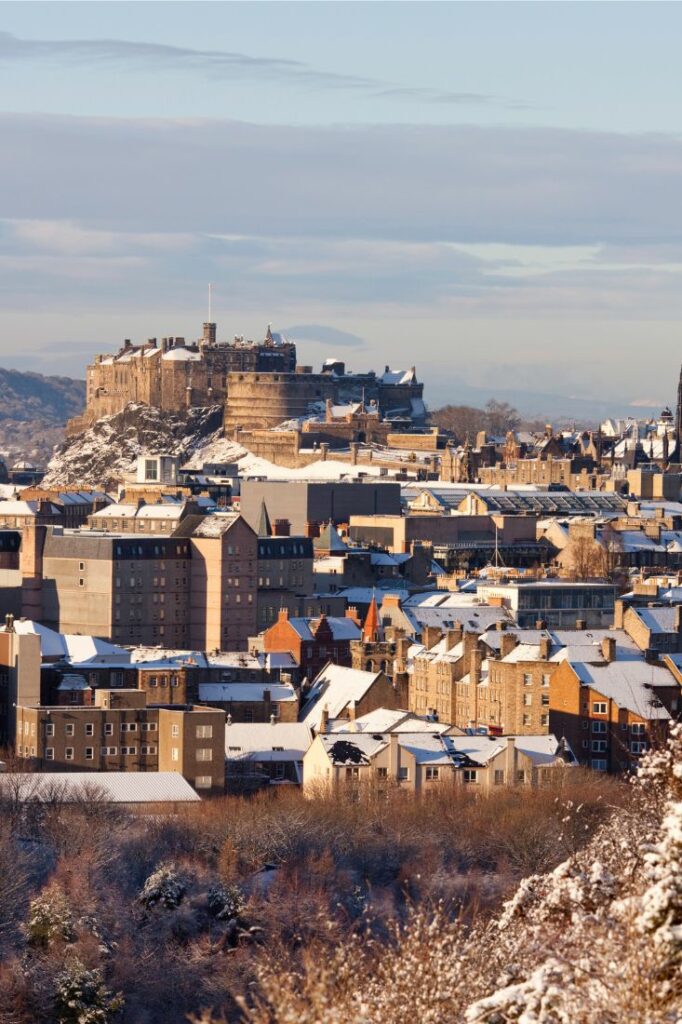
Not only is it an outstanding 11th-century castle, it’s also home to some pretty fancy crown jewels. It has historic barracks, and even houses the National War Museum of Scotland. When the rain clears, you can also get amazing views across the city from its standpoint on top of Castle Rock.
Enjoy a day trip to Loch Ness
There are few Scottish myths that are more famous than Nessie the Loch Ness Monster. If you want to go monster hunting, or just spend a lovely day out on the water, Loch Ness pleasure cruises actually run all year round.
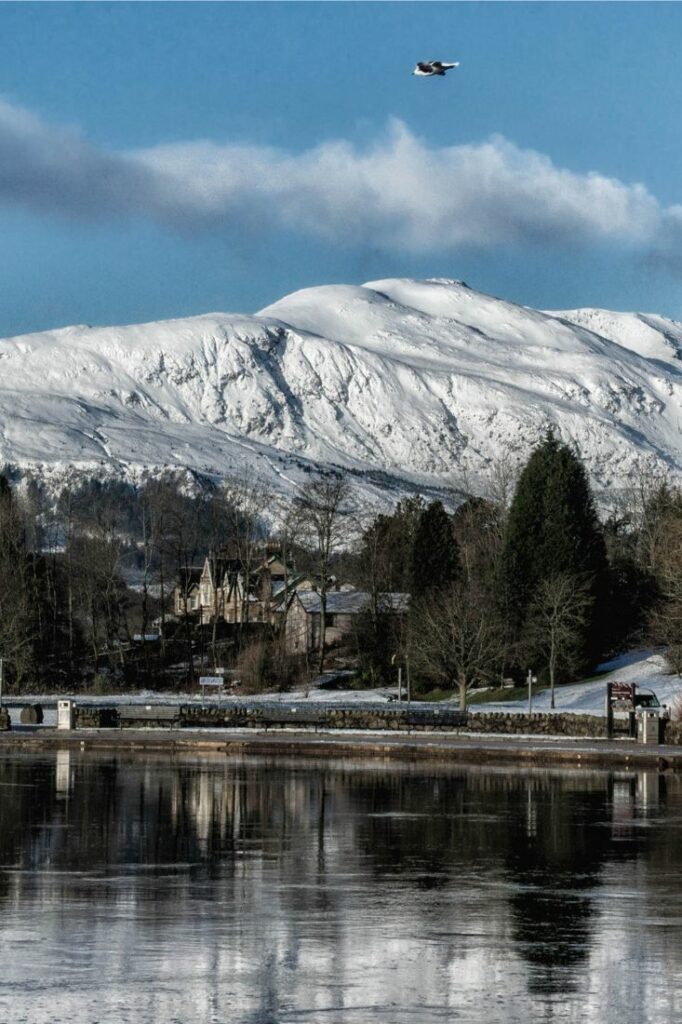
The added benefit of going in winter is that there are hardly any tourists and if it’s a crisp and clear day, you should be able to spot a ton of native wildlife and birds!
Warm up with a whisky tour
Is there a better way to warm up than with a snifter of classic Scottish whisky? Winter is a great time to hit up some of Scotland’s most famous whisky distilleries. They won’t be crowded and it’s a wonderful way to explore Scottish culture while staying warm and dry!

Some of the most popular whisky distilleries to visit include Islay, Lagavulin, Talisker, and Oban, but of course, there are hundreds to check out all across the country!
Try your hand at ice climbing in Kinlochleven
Ice climbing might sound like a daunting winter activity to undertake, but Kinlochleven actually has an indoor ice climbing wall where you can give it a go. In fact, Ice Factor is the largest indoor ice climbing centre in the entire world!
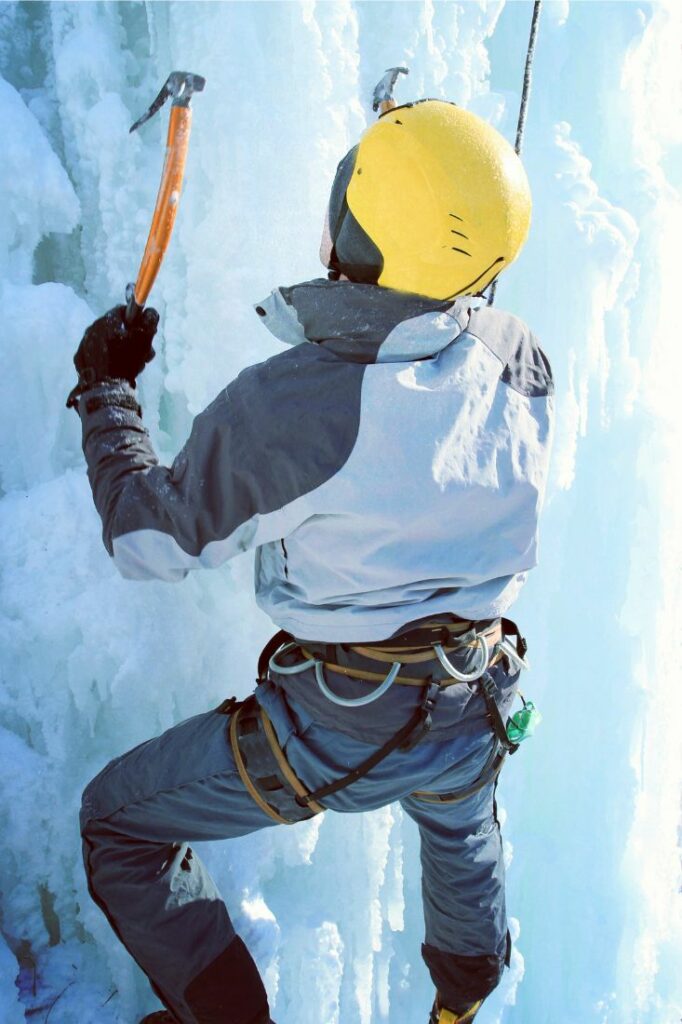
The centre uses real snow and ice to keep the experience authentic, so whether you’ve never ice climbed in your life or you’re an intrepid winter mountaineer, this is a super cool winter activity in Scotland that you have to check out!
Explore Loch Lomond by foot
Loch Lomond , about an hour outside Glasgow, is hands down one of the most stunning places in the UK. In the summer months, it’s packed with tourists kayaking, cycling, or hiking around the lake. However, in winter these numbers drop through the floor and there’s a tranquil calm to the area.
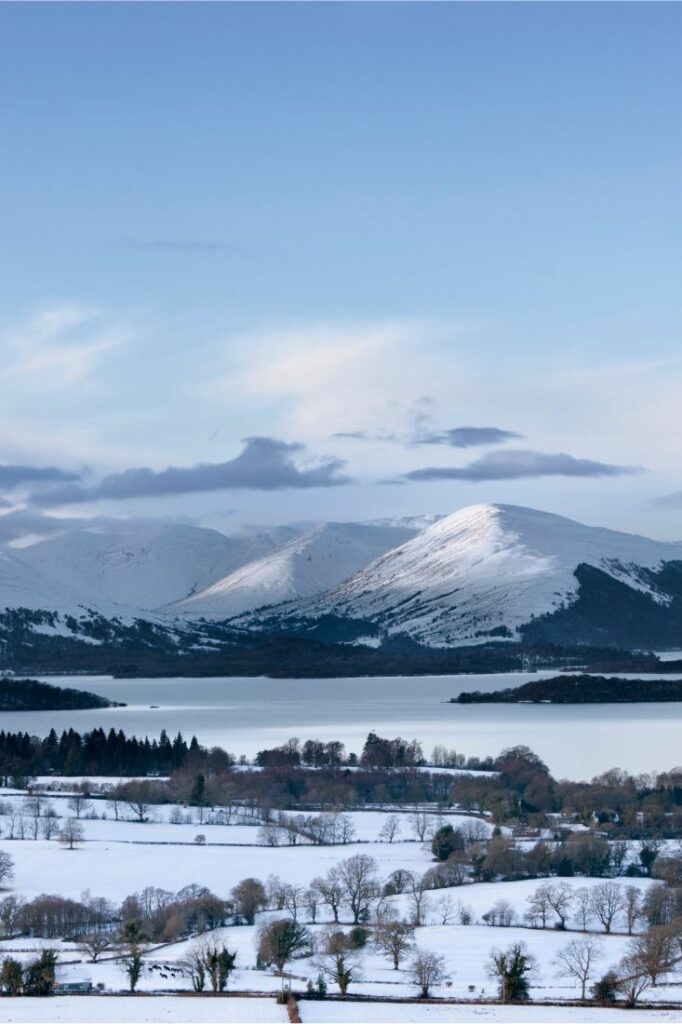
If you’re looking for a relaxing hike or long walk that doesn’t involve a ton of snow, the pathways around the banks of Loch Lomond might be a decent shout. Although there is snow on the higher altitude paths, if you stick close to the loch, the chances of snow are really low. You still need to wrap up warm though!
So, there you have it, the best things to see, do, and enjoy in Scotland in winter. What are your favourite things to do in Scotland from December to February? Let me know in the comments below and I’ll be sure to check them out!
Also, if you’re planning a visit for a different time of year, don’t miss our guide to the best things to do in Scotland in summer , our top picks for autumn and our favourite places to visit in Scotland in spring .
Leave a comment Cancel reply
Accessibility Links

VisitScotland to close all tourist information centres

VisitScotland is to close its network of tourist information centres to focus on a “digital-first” strategy as more people plan their trips online.
The national tourism organisation said that people had made significant changes to how they planned holidays, with most using travel specialists and online resources including TikTok, YouTube and websites. It added that tools that used artificial intelligence were becoming more popular in planning trips.
VisitScotland said that in response it would invest resources in a strategy designed to influence people as they made plans before setting off.
Critics raised concerns that the closures would be a “blow” to towns and would disadvantage some tourists, particularly the elderly.
Humza Yousaf accepted that there would be “some level of concern” after the announcement but
Related articles


IMAGES
COMMENTS
February is a cold and potentially snowy month to visit Scotland; still, it's easy to stay warm with uncrowded cultural attractions, whisky distilleries, and a vast wilderness offering endorphin-inducing activities (and lengthening daylight hours to enjoy them). In fact, this month is Fort William's annual mountain festival for the ultimate fix of outdoor inspiration.
Scotland weather in February. Scotland in the month of February will almost certainly bring cold, damp days. Whether you get rain on your trip of sunny days the cold will almost always be there. Snow, frost and ice can also be present in February, specifically in the mornings after a cold, clear night. Winds and storms can also be an issue.
In our opinion, the best time to visit Scotland is during the spring or fall, with a few exceptions. Spring and fall, Scotland's "shoulder seasons," both have moderate temperatures and fewer crowds. Accommodations are slightly cheaper compared to summer and the swarms of midges are much less prevalent.
Cocktails at 56 North in Edinburgh. Spend a day dedicated to gin at the Helensburgh Gin & Fizz Festival (19 February) and the Dunoon Gin & Fizz Festival ( 26 February). Enjoy a wide variety of craft gins from distilleries across Scotland. Gin lovers will truly be spoiled for choice with the range including everything from old favourites such as ...
Spring. Enjoy spring in Scotland with blossoming flowers, wildlife waking up after months of hibernation, iconic attractions reopening after winter, and the suns' rays getting warmer week by week. Although the spring months still have their chillier days, it's the perfect time to kick start your outdoor adventures, city break, or a rural ...
Best time to visit Scotland. Spring: Many attractions are open without summer crowds. Golf courses open in April; the season officially starts in May. Summer: This is the ideal time for hiking and ...
Michela Sieman/Travel + Leisure. Best Times to Visit Scotland for Smaller Crowds . If you want to avoid the crowds on your Scottish vacation, consider traveling in the fall, winter, or spring.
When is the best time to visit Scotland? Login Save . May 26, 2023 • 5 min read. ... February is the coldest month of the year and is usually the best for adrenaline-pumping winter mountaineering and ice climbing. You can ski and snowboard across the country's half-dozen ski resorts, too.
Scotland Weather in February. Prepare for a lot of snow during your Scottish holiday in February. You can expect the weather in Scotland in February to be very cold, with temperatures ranging from 1°C to 6°C. You can also expect several days of rain during this time of year, with the country's west coast becoming particularly wet.
The Best Time to Visit Scotland. Autumn in the Western Highlands. The best times to visit Scotland are August to through mid January, the seasons of the top urban festivals, the blooming heather, the winter parties and the rugged great outdoors. July and August are the warmest months but they are also the months most plagued by tiny biting insects.
February is a good time to visit Scotland. The weather is usually really cold with a gentle breeze, with temperatures ranging from 22—39°F (-5—4°C). Scotland has plenty to offer for visitors of all ages and interests. In this article, we tell you the top things to see and do for your February trip to Scotland. Get inspired by the events ...
Search a wide range of accommodation, events, food & drink options and things to do from indoor and outdoor attractions to activities, tours and more. Get Scotland inspiration direct to your inbox. Don't miss the inside track from our Scotland experts on exciting trip ideas, unique attractions and hidden gems loved by locals.
The country's magic extends from its quaint small towns to the snow-capped peaks of its romantic, rugged Highlands to its dynamic modern cities like Glasgow and Edinburgh. It's home to some of the ...
1. Visit Edinburgh in the winter. Edinburgh, Scotland's capital, is a great destination in the winter for a city break. Edinburgh Castle is opened all year long and if you're lucky a bit of frost may brighten the darker winter days with white dust along the crags.
3. Glasgow. Glasgow in the winter. The largest city in Scotland, Glasgow is the place to go if you're looking to flex your shopping muscles, especially around the holidays. There's a large Christmas market in St. Enoch Square filled with interesting gifts, treats, sparkling lights, and music.
Scotland Tours in February. Visit Scotland in February to experience warm Scottish hospitality and the wintry beauty of the Highlands during the calm low travel season. Come explore the beautiful castles and old cobbled streets on a tour package crafted by the local travel experts at Nordic Visitor. view tours
Exploring Scotland in winter. Winter and the 'off-season' is from October until March. January and February are often the coldest month, with average temperature inching around 5°C (41°F).. Winter is therefore quite mild in Scotland (for a northern country) with conditions being more changeable than in summer, with more wind, more rain and sometimes even snow.
Best time to visit. The best time to visit Scotland is during spring (late March to May) and fall (September to November). Temperatures are warmer by spring, with averages of 43°F to 59°F, although there will still be snow in the mountains of the Highlands and the Cairngorms. The summer months (June through August) are the warmest of the year ...
Despite being less than an hour's drive from the bustle and sprawl of Glasgow, the bonnie braes (banks) of Loch Lomond - immortalized in the words of one of Scotland's best-known songs - comprise one of the most scenic parts of the country.. At the heart of Scotland's first national park, the loch begins as a broad, island-peppered lake in the south, its shores clothed in bluebell ...
Whilst the most popular time to visit Scotland is the summer months, there is plenty to do if you visit Scotland in winter. We've travelled throughout Scotland in winter, and with a bit of preparation and planning, a visit at this time of year will reward you with quieter and less crowded attractions (with some notable exceptions!) and wintery landscapes in the Scottish Highlands.
The Lion, the Witch and the Wardrobe (8th-12th February, King's Theatre, From £21.50) Bat Out Of Hell (8th-19th February, Edinburgh Playhouse, £22) Valentine's Vivaldi by Candlelight (11th February, St Giles Cathedral, from £19) Audubon's Birds of America (from 12th February, National Museum of. Scotland, £10)
The best time to visit Scotland for warmer temperatures and a calendar filled with festivals. June is the sweet spot and the best time to visit Scotland in summer. June brings the longest days at 17 plus hours of daylight...longer the farther north you go. This makes June the perfect time for first-time visitors trying to fit a lot into each day.
Check out the Up Helly Aa Viking festival in the Shetland Islands. Try snowshoeing in the Scottish Highlands. Enjoy a winter road trip on the West Coast. Dive into history at Edinburgh Castle. Enjoy a day trip to Loch Ness. Warm up with a whisky tour. Try your hand at ice climbing in Kinlochleven.
Scotland in February Weather: Pack for average highs of 6°C (43°F) and lows of 1°C (34°F). February averages 50 mm (1.97 inches) of rain throughout the month, with 20 days of rain. Scotland in March Weather: Pack for average highs of 9°C (48°F) and lows of 2°C (36°F). March averages 70 mm (2.75 inches) of rain throughout the month, with ...
Carla Jenkins. Thursday March 28 2024, 12.01am, The Times. VisitScotland is to close its network of tourist information centres to focus on a "digital-first" strategy as more people plan their ...